Sardinia: Beyond the Blue
Where Sapphire Shores Meet Wild Horizons
From turquoise coves to rugged mountain trails — explore Sardinia’s untamed beauty through hidden beaches, remote peaks, and a dash of off-road adventure in the abandoned mines of Montevecchio. Still wild, still raw… but with a little extra blue.
Places We Loved – Spot Overview
Island of Sapphire Shores
Sardinia leans hard into blue: wider coves, clearer water, and a coastline that keeps surprising you with another postcard-perfect bay around the next headland. But it’s not just sea — craggy mountains, ancient nuraghi and long, legendary drives tuck behind the beaches, making the island feel endlessly open and wonderfully wild.
The drives are part of the story here: the eastern SS125 (the famed “Orientale Sarda”) threads the island’s wild eastern flank, while northwest lanes like the SP105 (and the linked SP49) serve up classic seaside panoramas between Alghero and Bosa.
Inland, the Parco Geominerario — Sardinia’s Geological & Mining Park — protects the island’s industrial past: abandoned shafts, miner villages and museum trails. The SP4 gives access to parts of this UNESCO-recognized mining landscape, including the Montevecchio area we explored.
Wild camping here can be trickier than on many Mediterranean islands — protected coasts, windy headlands and rough tracks mean you have to pick your spots — but it’s absolutely doable if you know where to look. We spent 2½ weeks driving a Defender with a rooftop tent, chasing hidden coves, mountain overlooks, and the abandoned-mine atmospheres of Montevecchio. In this post we share our route, family-friendly tips, and the off-grid camp spots we found (yes, even the really good ones).



About this initirary

Travel duration: 2 or 3 weeks
How to travel: By camper/car
Stay: (wild)camping, agritourisme
Best travel period: Between May and September
Currency: Euro
Golden bays
Stepping off the ferry in Olbia, our first feet on Sardinian soil found themselves on a tiny, tucked-away cove just beside the port. It’s one of those hidden bays that curls into the bigger harbour—hard to name, easy to fall in love with. Ferries and planes came and went, but instead of noise it felt oddly cinematic: huge ships moving slowly in the distance, low planes descending like punctuation marks, and all the while Lovi was happily ruling our almost-private stretch of sand (there was nobody else there).
The air smelled clean and calm, and locals even whisper about the place being a little restorative—an easy, peaceful spot people seek out to switch off. The sea was gentle (no big waves), the shoreline offers several small bays for extra privacy, and the sunset was pure theater. Between the soothing vibe and that view, we ended up staying two whole days—just what the soul needed.




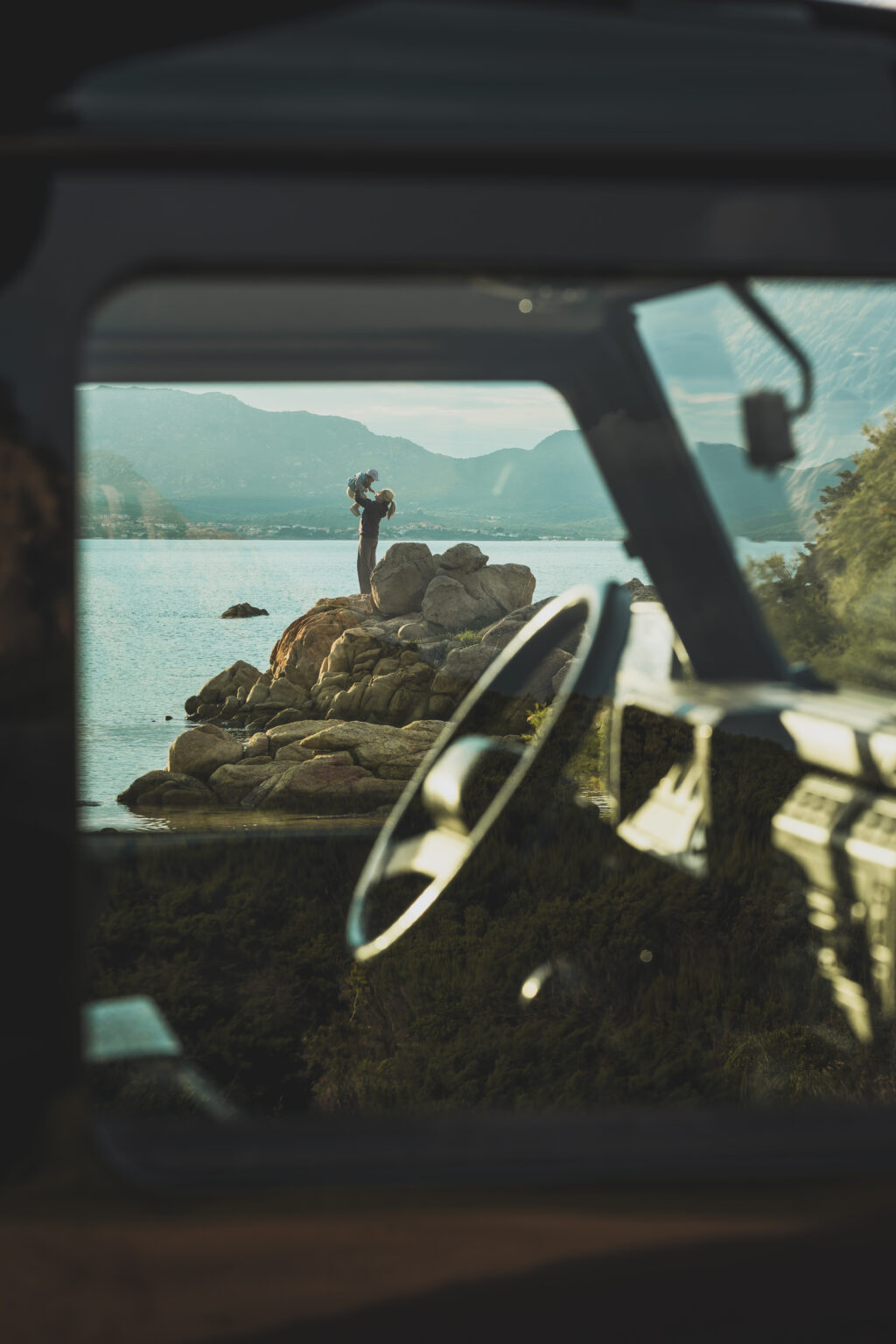



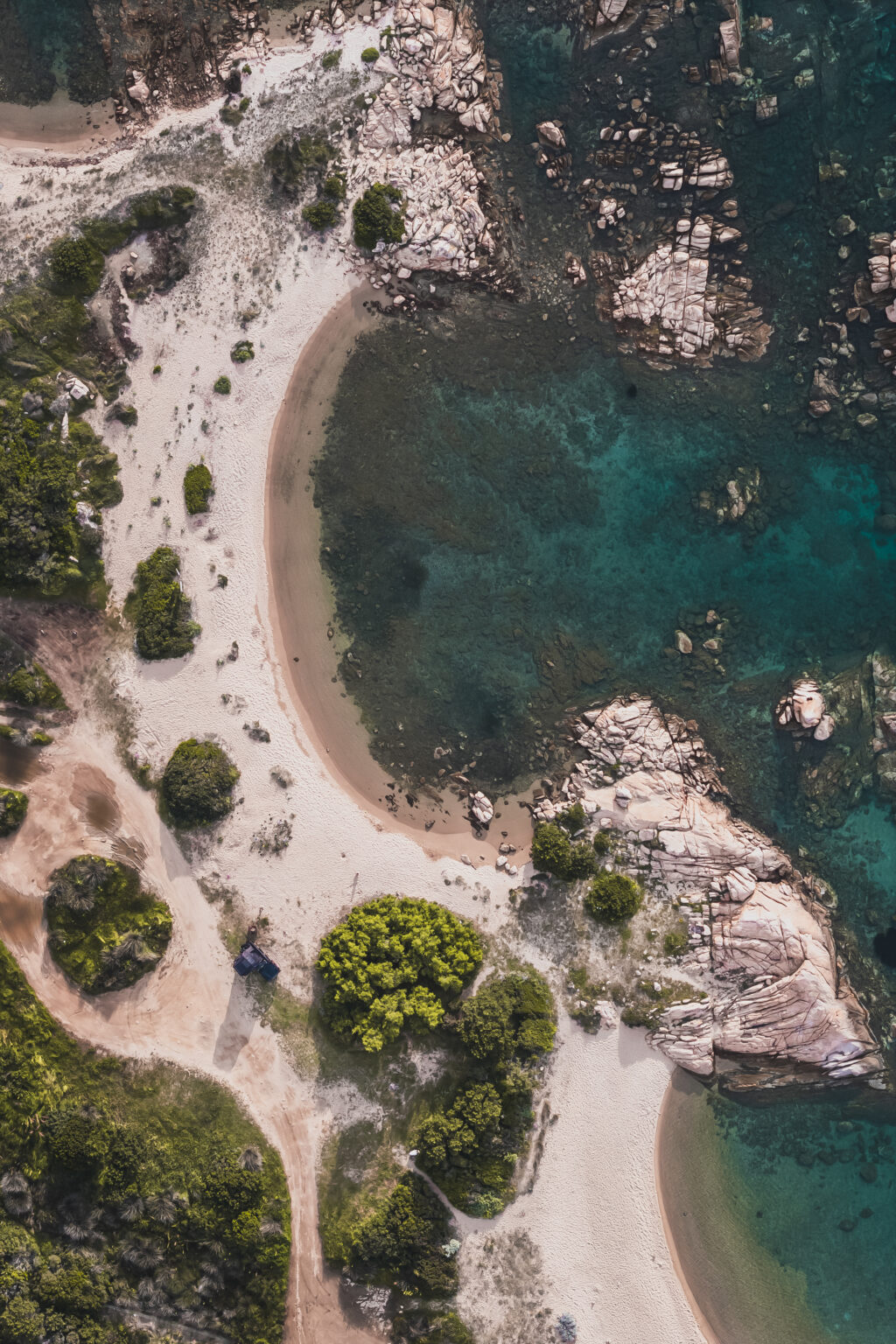

Handpicked Hidden-Gem spot
'Golden bays '
- Pure theater sunsets
Get this hidden gem and all other Sardinia locations in a convenient offline PDF. Just send us an email, and we’ll provide the PDF along with payment details.
Price: € 25,00
These gems we’ve tested and explored ourselves, uncovering them through effort and trial, so you can save time, avoid missteps, and be certain every destination delivers beauty and adventure.
Berchida — Daytime Sanctuary
We spent a whole, slow day at Spiaggia di Berchida, a huge sweep of pale sand on Sardinia’s east coast with water so clear the shallows look painted. Behind the dunes a freshwater lagoon mirrors the sky, and the gently shelving seabed makes paddling easy for little ones—everything about it feels open and calming.
Because the beach sits inside a protected coastal area, overnight stays aren’t allowed; we treated the visit like a daytime pilgrimage—arrive, breathe it in, and leave it as you found it. Parking is around €12 a day, which feels fair for a quiet stretch of beach that can feel utterly empty even on busy days. Come early, bring shade and water, and stay a while—Berchida rewards the ones who slow down.
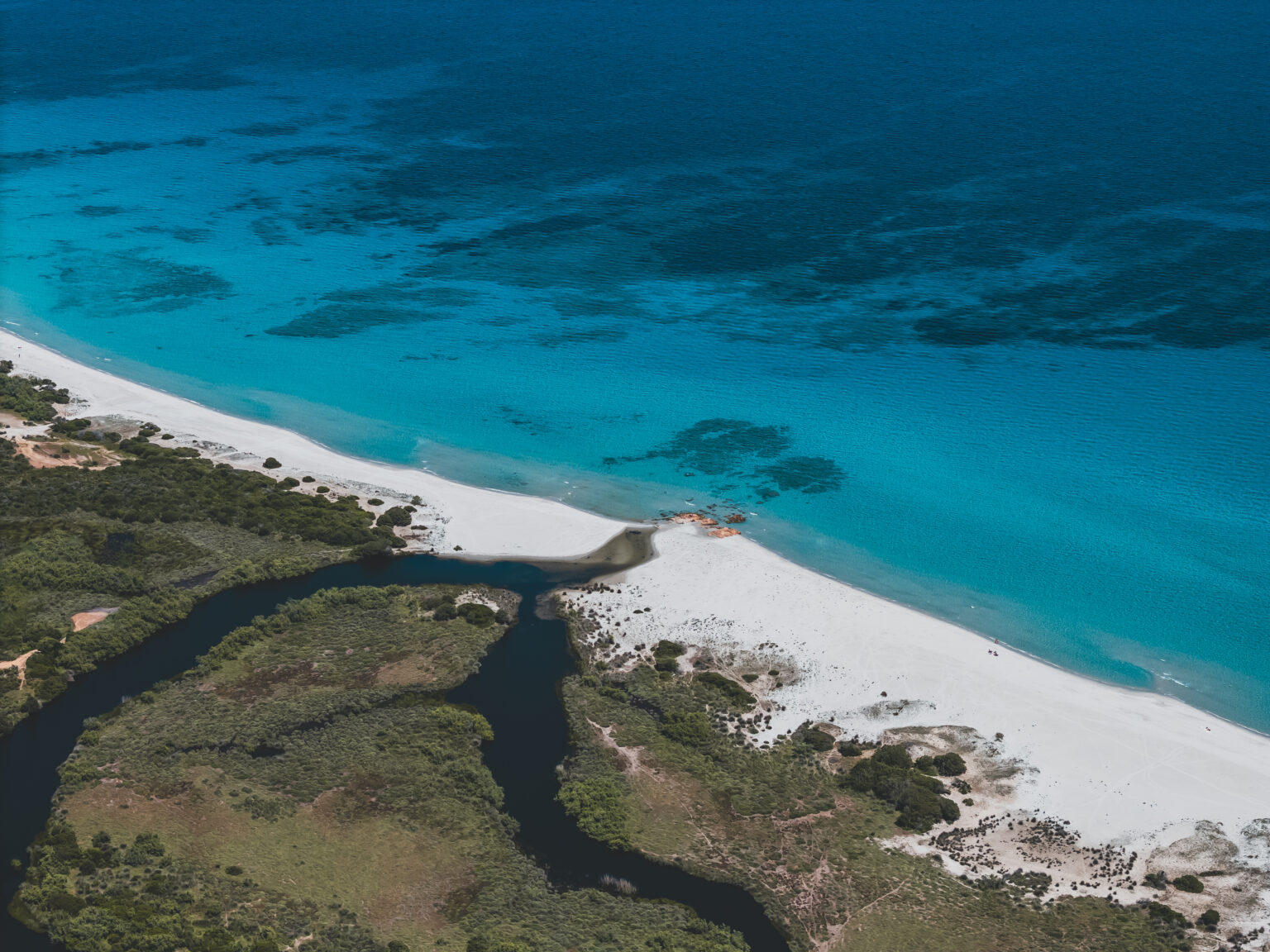


After learning the beach was off-limits for camping, we swapped salt for grass and found a little farm that felt like a perfect reset. One minute we were staring at blue sea; the next we were surrounded by green — a big yard to park and pitch, proper amenities (toilets, fresh water, shade) and, best of all, instant animal company for the kids.
Donkeys, dogs, cats and even a gentle horse wandered around, curious as guests and more than happy to keep Lovi entertained while we cooked dinner and relaxed. It was exactly the kind of low-key, friendly spot we love — part campsite, part farm, all nature.


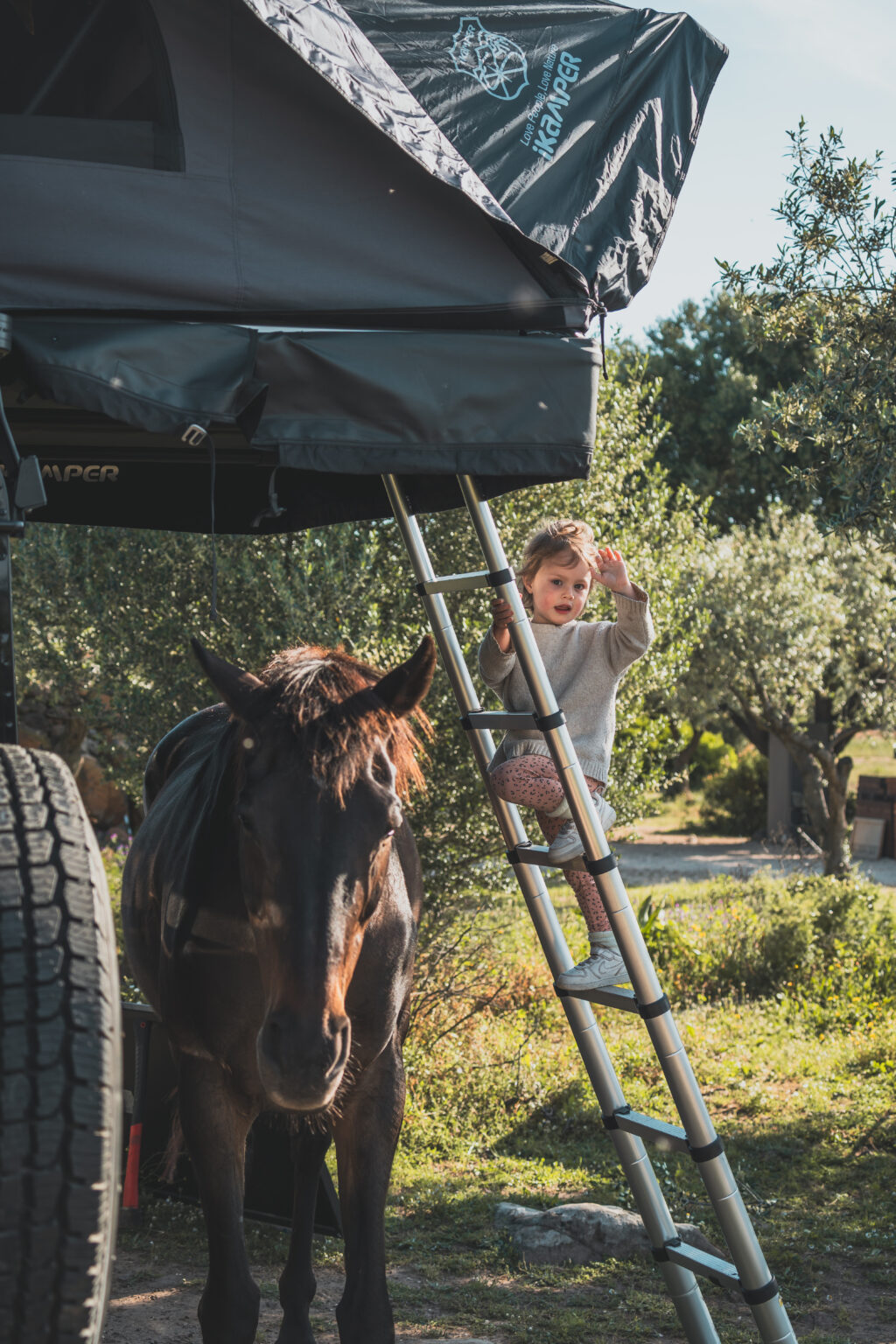

Valley Under the Peak
We climbed into the Monte Corrasi mountains and found a tiny valley that felt like a private paradise. Tucked in just below the summit, our spot sat around 1,000 m with the very top only about 200 m higher — close enough that you could still hike or tackle the last stretch in a proper 4×4. The trees kept the wind off us, the grass made a soft play yard for Lovi, and the backdrop of jagged peaks made every meal feel like it came with a postcard.
Wild pigs ambled through at dusk, curious but uninterested in human business, and the sunset here was pure paint — streaks and washes of color that slowly settled into night. If you want the full reward, push on up (either hike the last bit or take a capable 4×4) for a full 360° panorama over the villages tucked at the mountain’s feet. In the morning we stood at the edge and watched clouds move like rivers over the valley — one of those quiet, breath-catching moments you don’t forget.

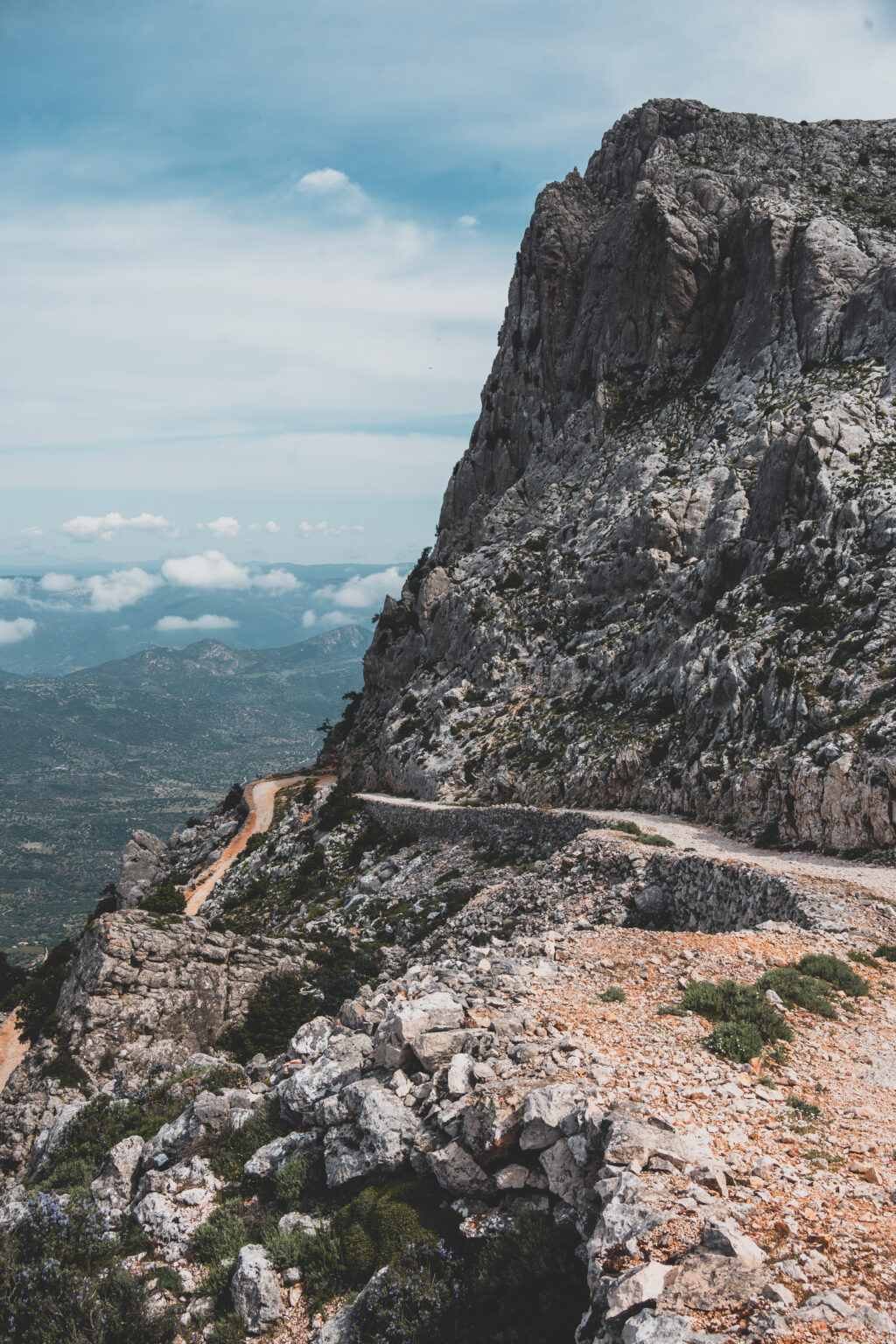
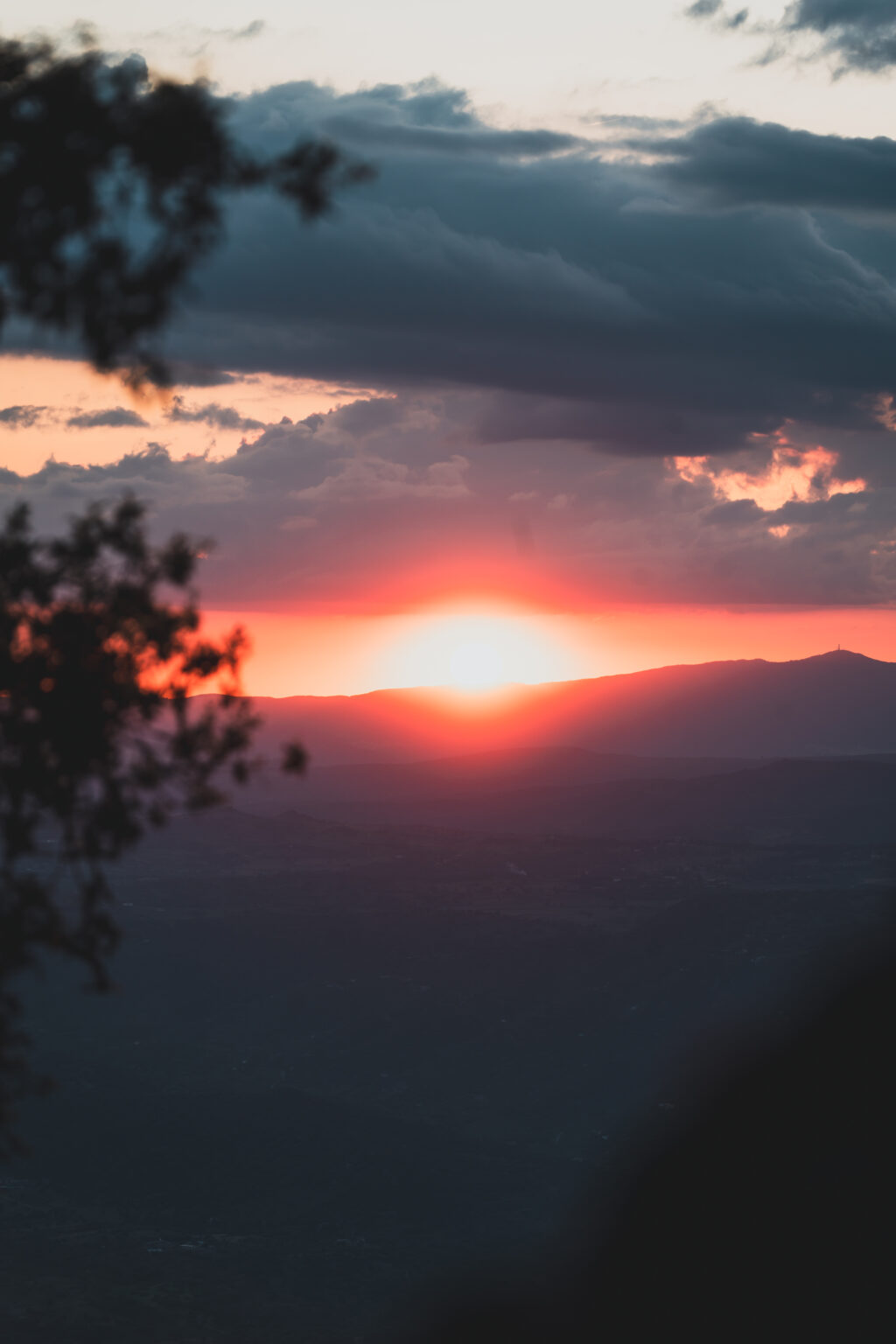



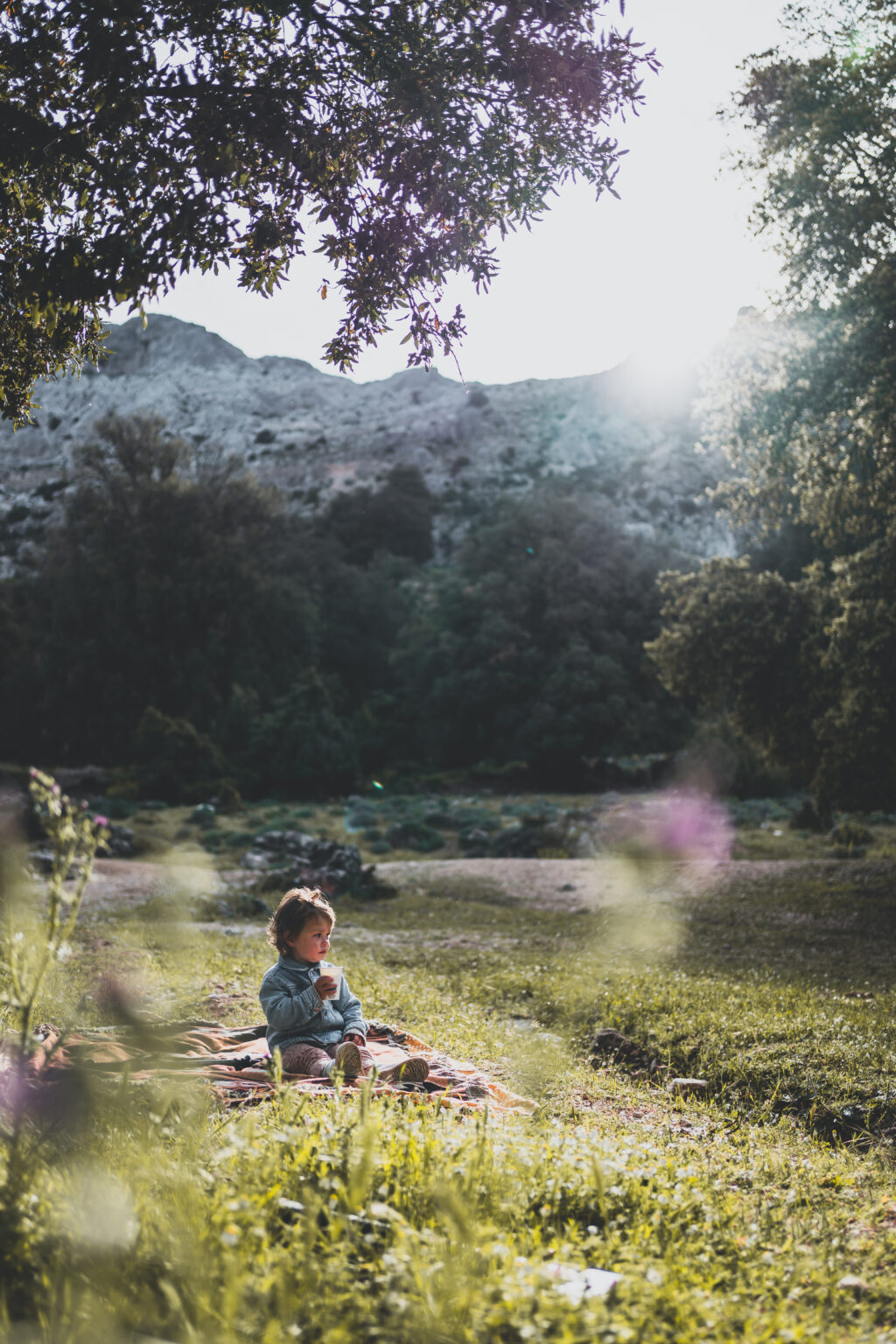
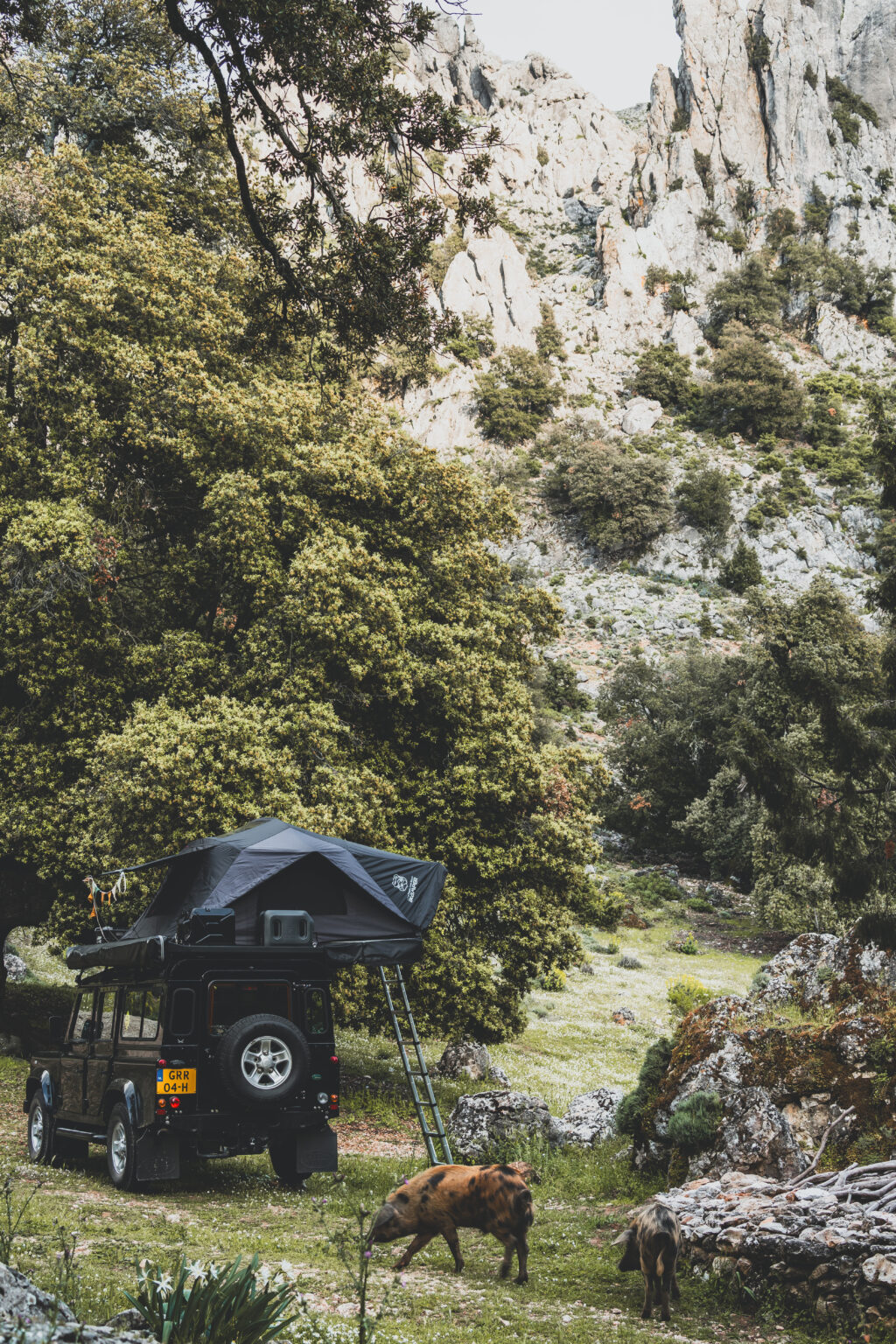


Bending Into the SS125
First curves, canyon views, and a road you don’t rush
From our mountain camp we rolled into the first half of the famous SS125 — and wow, the reputation is well-earned. This is the road Sardinia is known for: a ribbon of tarmac that clings to cliffs, dives through gorges, and winds across high plateaus with one cinematic view after another. Built in the early 20th century, the Orientale Sarda (as it’s officially called) has been called one of the most beautiful drives in Europe — and honestly, it’s not hype.
Our approach was simple: don’t race it. The first stretch was all about soaking up the scenery, stopping for a slow lunch, and eventually finding a quiet overnight spot somewhere in the middle. Roads like this aren’t made to blast through — they’re made to remember.
We picked our lunch spot right on the edge of Gorropu Canyon, one of the deepest gorges in Europe. The view from the road was already mind-blowing: sheer limestone walls dropping hundreds of meters into a shadowy crack of wilderness. Hiking down into the canyon is a must-do for many visitors, but with two young kids in tow, a multi-hour trek didn’t make sense for us this time. Instead, we unfolded chairs, set up lunch with the best view in the house, and promised ourselves we’d be back one day to walk its floor.
If you’re planning your own route, either set aside time for the hike or, like us, take the slow road and let the SS125 itself be the adventure.


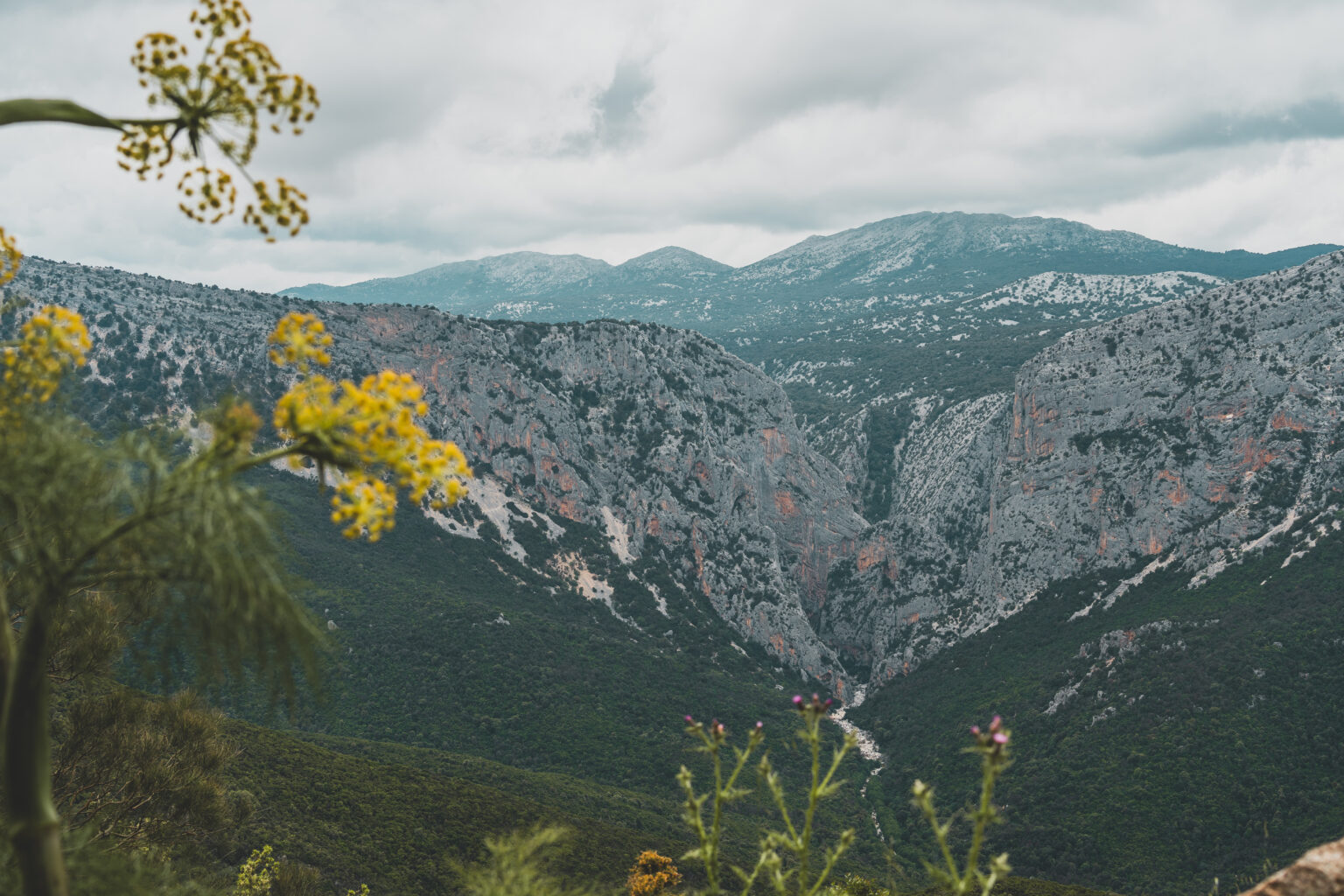


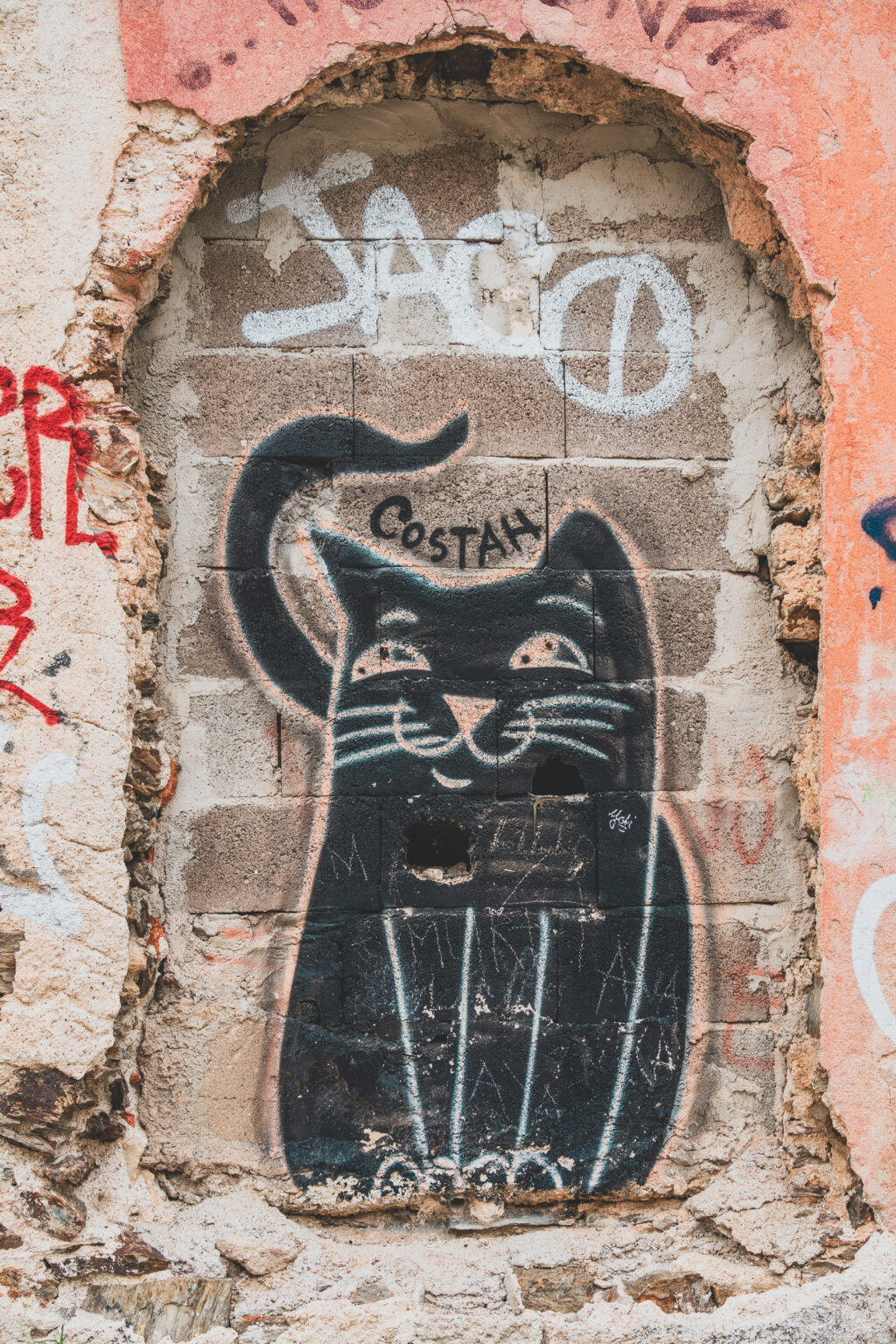
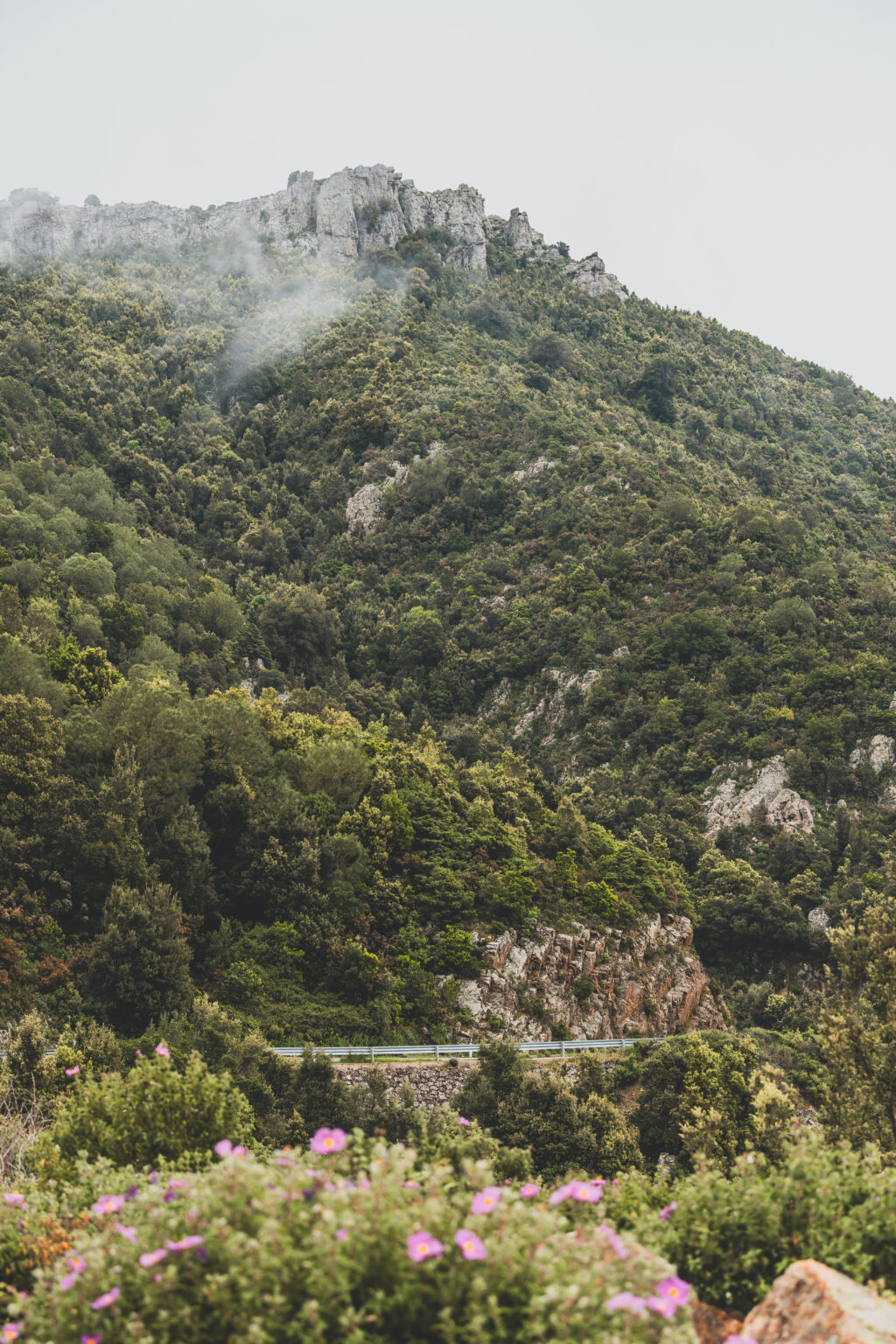
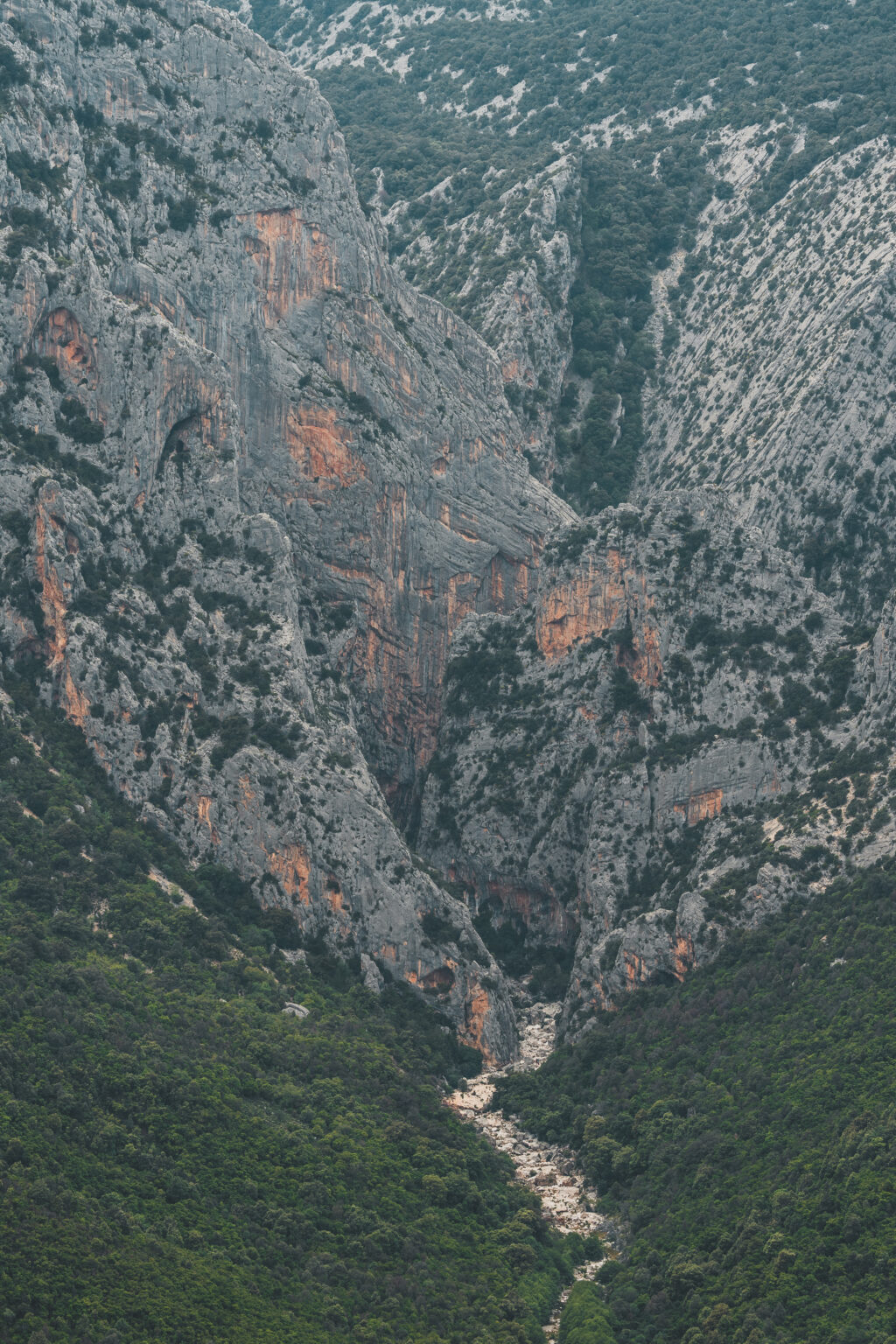
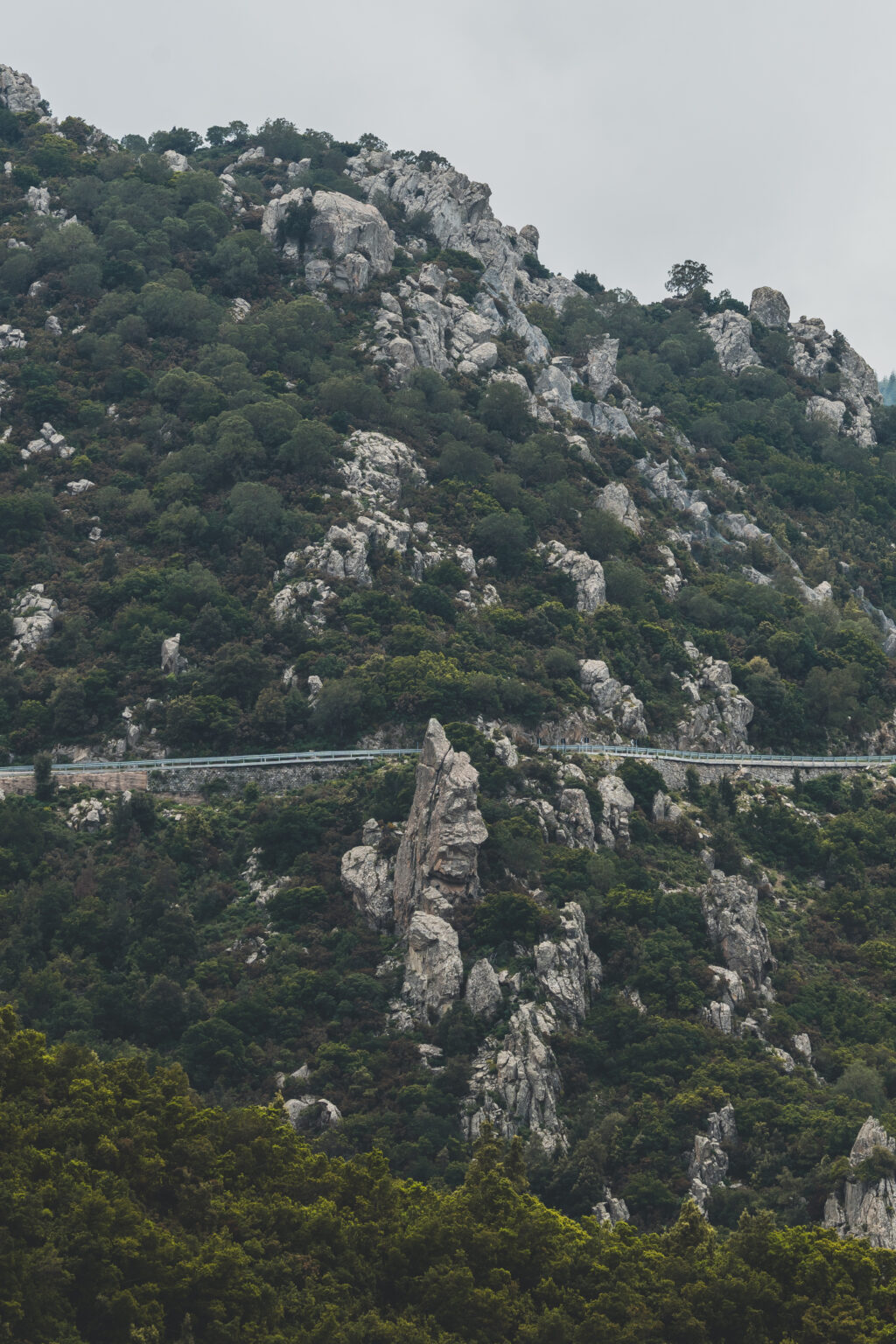
Among the Free Roamers
Halfway along our SS125 journey, we found a camp spot that felt like stepping into another world. Still sitting high at around 1,000 meters, the mood shifted with rolling fog, damp air, and that deep freshness only mountain grass can give.
The upside of all that green? Animals everywhere. Donkeys wandered in and out of our camp as if they owned the place (which they probably did), while sheep, pigs, and even horses drifted through the open fields around us. It was like sharing the night with a wild, gentle herd.
The backdrop was no less impressive — wide open spaces framed by dramatic mountain silhouettes. Quiet, moody, and alive with roaming company, this spot felt like Sardinia showing us a softer, wilder side of its highlands.




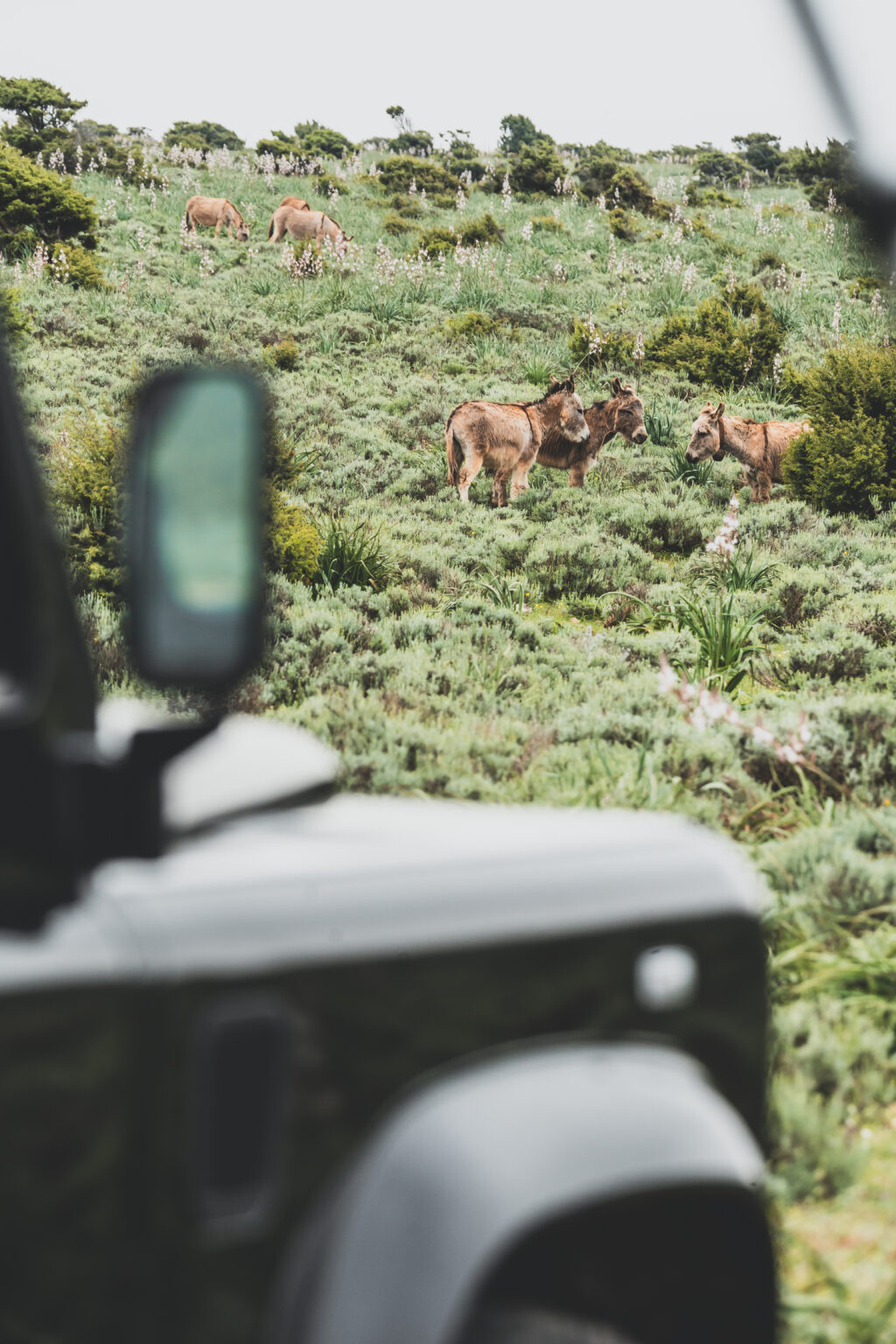


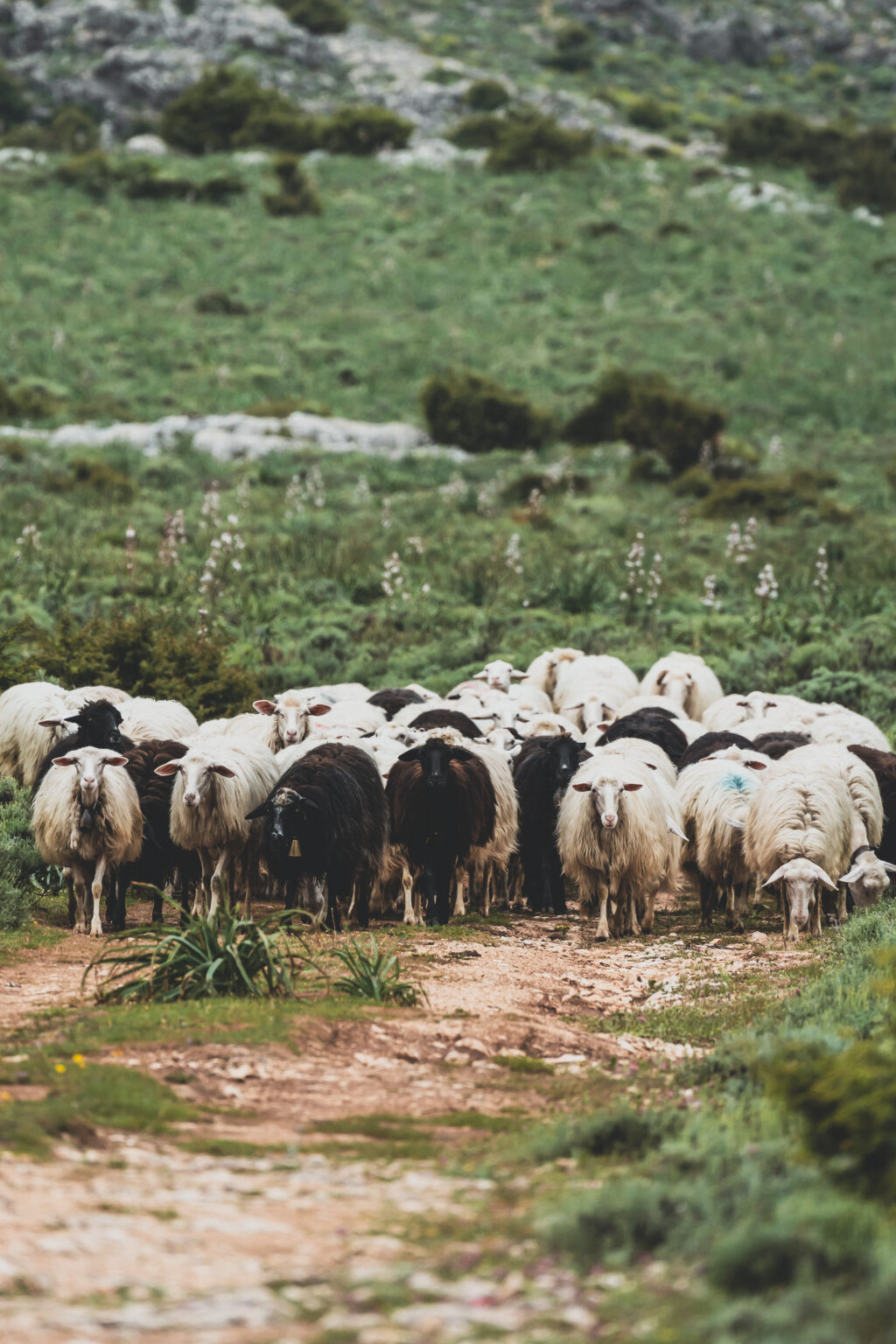
Rolling Down to the Coast
On the last stretch of the SS125, the road finally began its long descent from the high peaks to the coastline. Still full of curves and sweeping views, it never really let us go.
This section brought another twist: a string of open-sided rock galleries — half tunnels carved into the cliffs to shield the road from falling rocks. Riding through them was an experience in itself: stone walls close on one side, vast open views on the other.
It’s a road loved by motorbikes for its bends and rhythm, but our Defender had its own kind of soundtrack. With adjusted exhaust, the deep growl bouncing off the gallery walls gave pure driving pleasure.
Somewhere along the way, we even crossed paths with a few fellow Defender drivers. A small wave, a knowing nod — and the road carried us all closer to the sea.

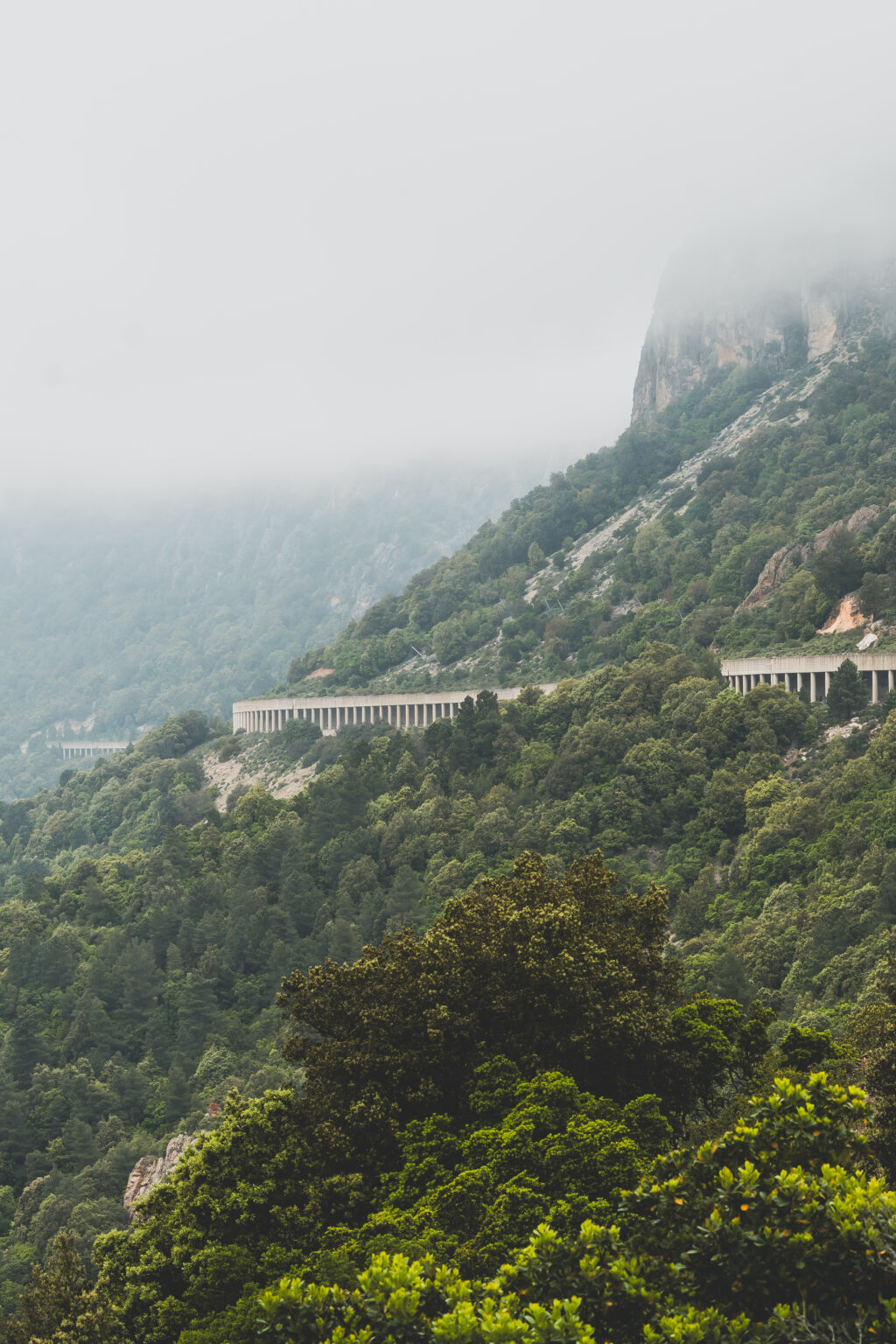

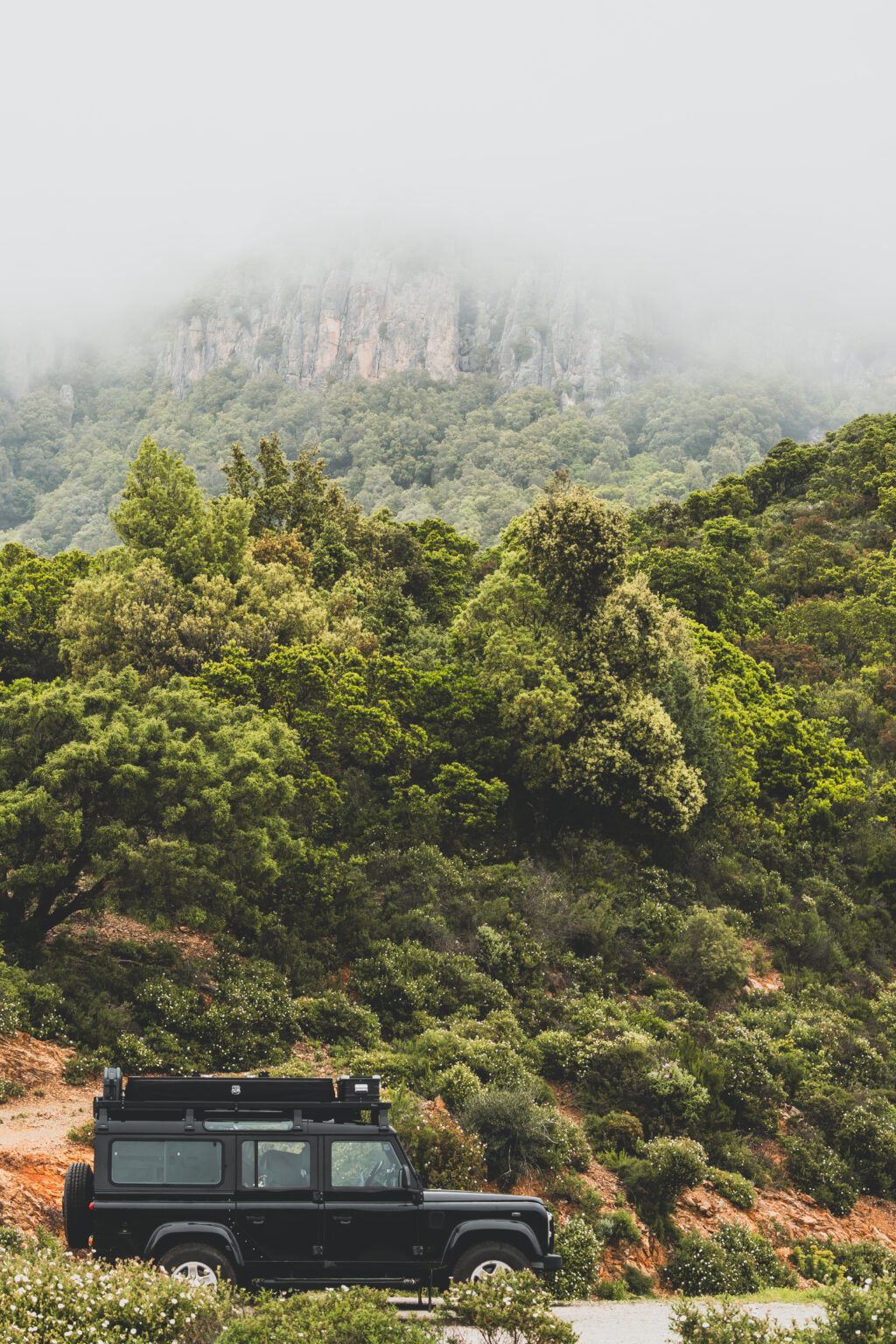
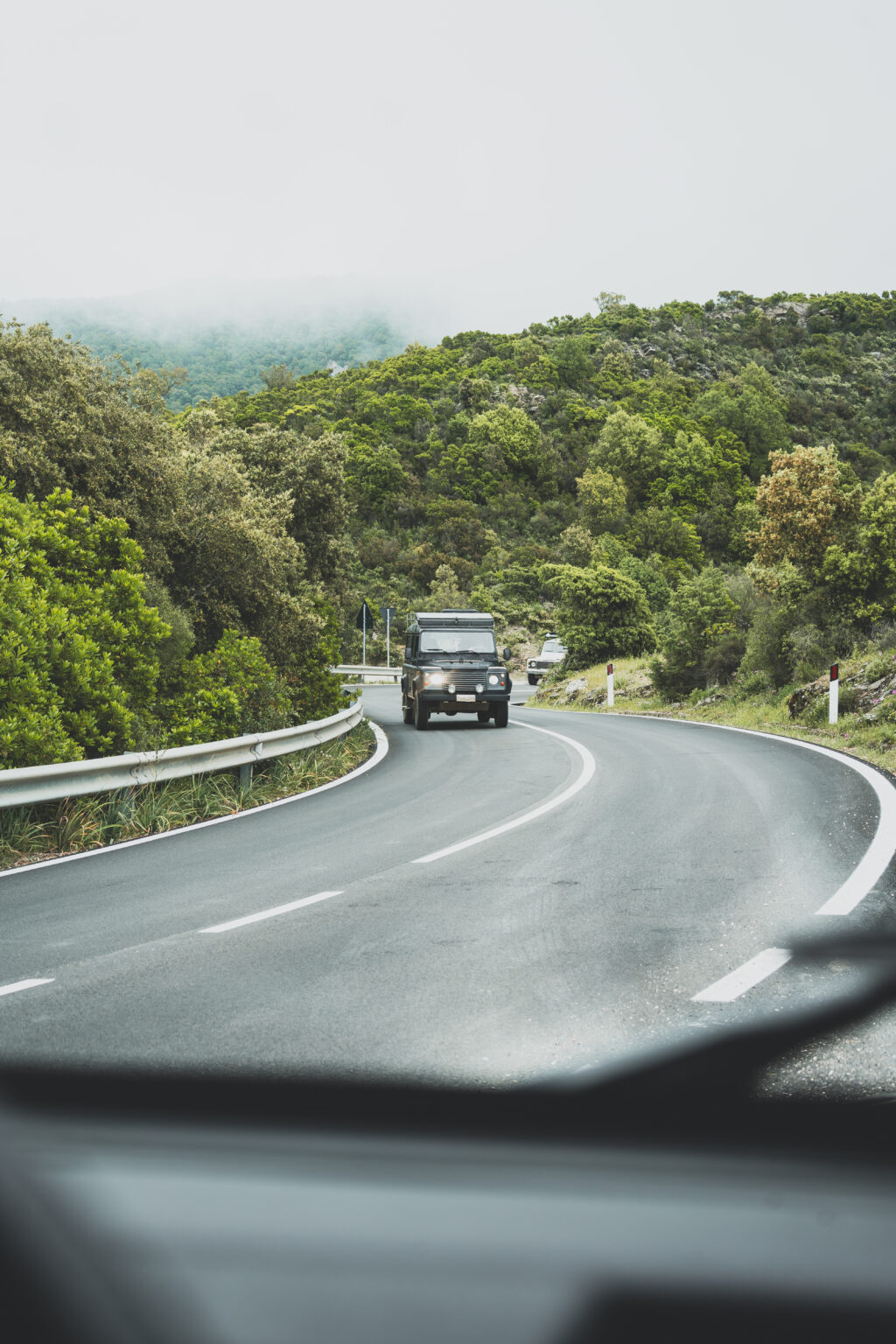
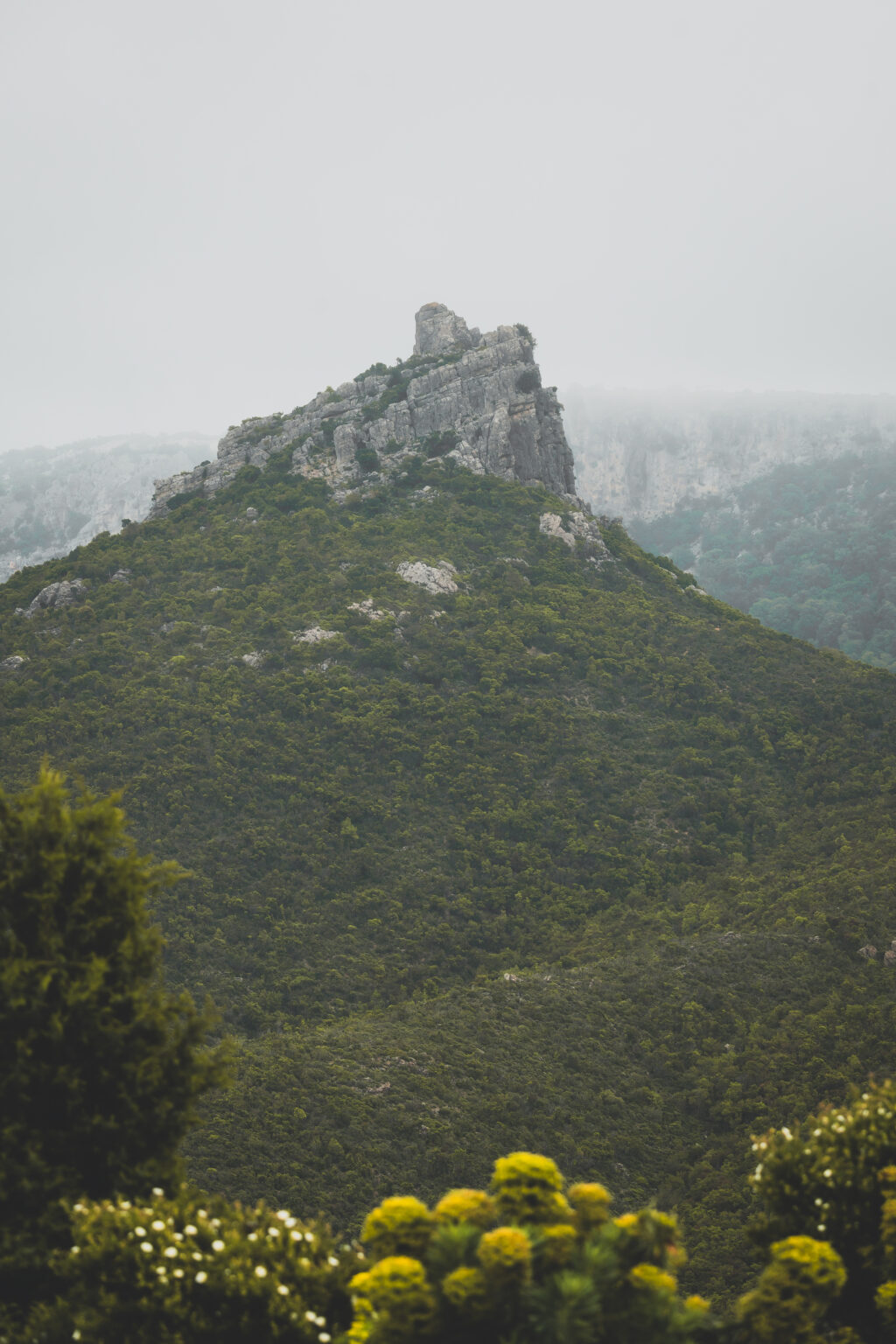
A Canvas by the Sea
Our SS125 journey led us to Torre di Barì, a dreamy end-point where coastal calm and history meet. Perched along an 8 km stretch of beach on Sardinia’s center-eastern coast, this shoreline is split right down the middle by a 16th-century Spanish watchtower atop a rocky promontory — one side of golden coarse sand (the “men’s sea”), the other a finer mix of pebbles and white sand (the “women’s sea”)
The tower was originally built in 1572 to guard against Saracen pirates, and it still watches out over the azure horizon, its silent strength etched in local lore.
Driving up to the beach, we found it half-empty, backed by sticky pine aroma, gentle waves, and safe-for-kids shallow water perfect for paddle play. It was a sweet change of pace — letting Lovi run off steam in the soft, clean sand while we leaned back and took in the layered view of beach, tower, and sea.
Torre di Barì may mark the end of the road, but it’s the kind of place that feels more like the beginning of a new kind of calm.



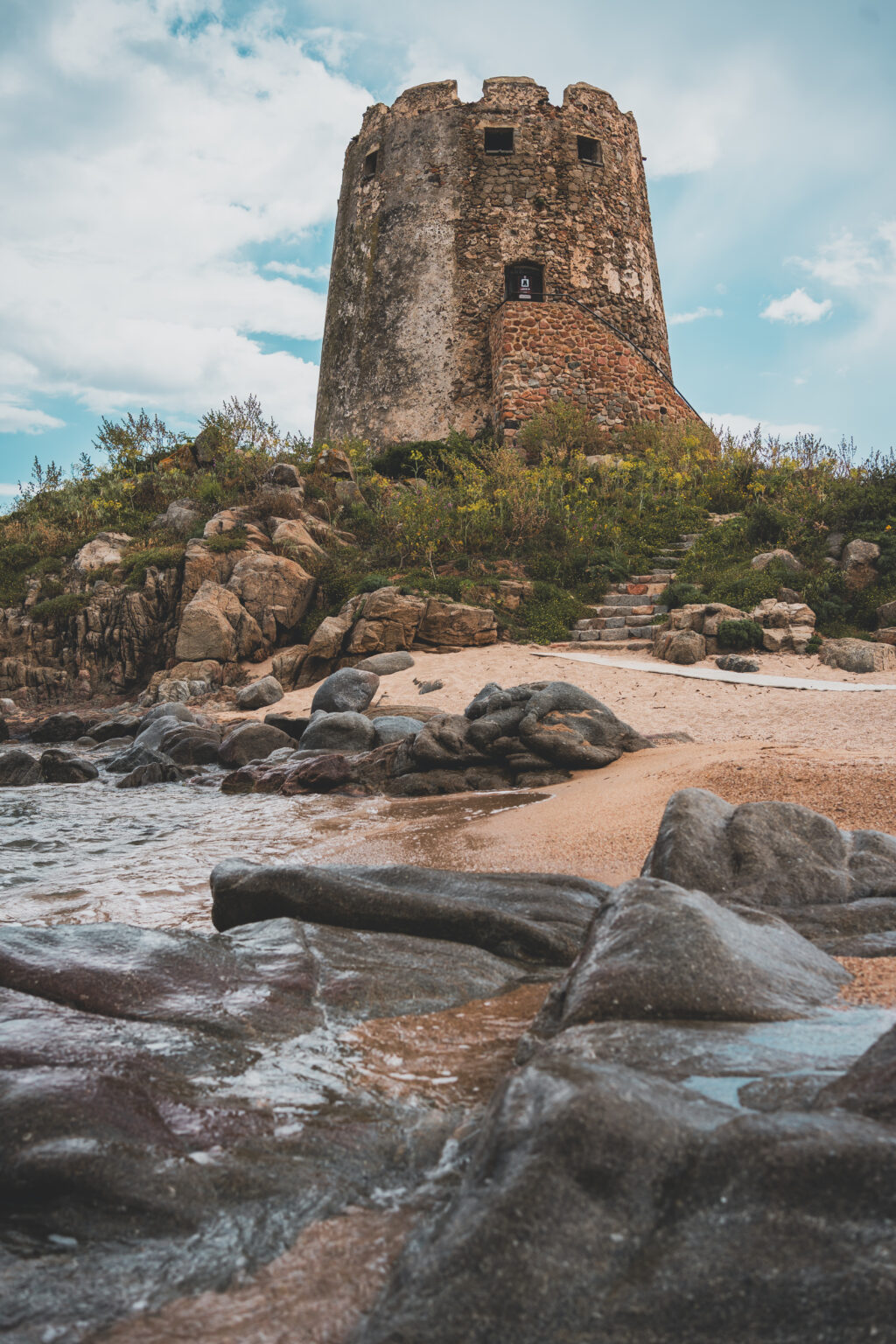
This stretch of coast felt like it was waiting for us. After leaving Torre di Barì behind, we wandered off in search of a place where the Defender could tuck itself right against the sea. What we stumbled upon was less of a parking spot and more of a painting come to life — a natural canvas brushed in blues, greens, and desert hues.
The bay itself was calm, with soft waves rolling into a little rock pool carved out by nature, a perfect corner for cooling off. Around us, spiny cactuses stood like silent sculptures, catching the late light and setting the scene with their golden shadows. It had everything we could ask for — sea, view, quietness — and nothing more. Exactly the kind of place where time slips away unnoticed.



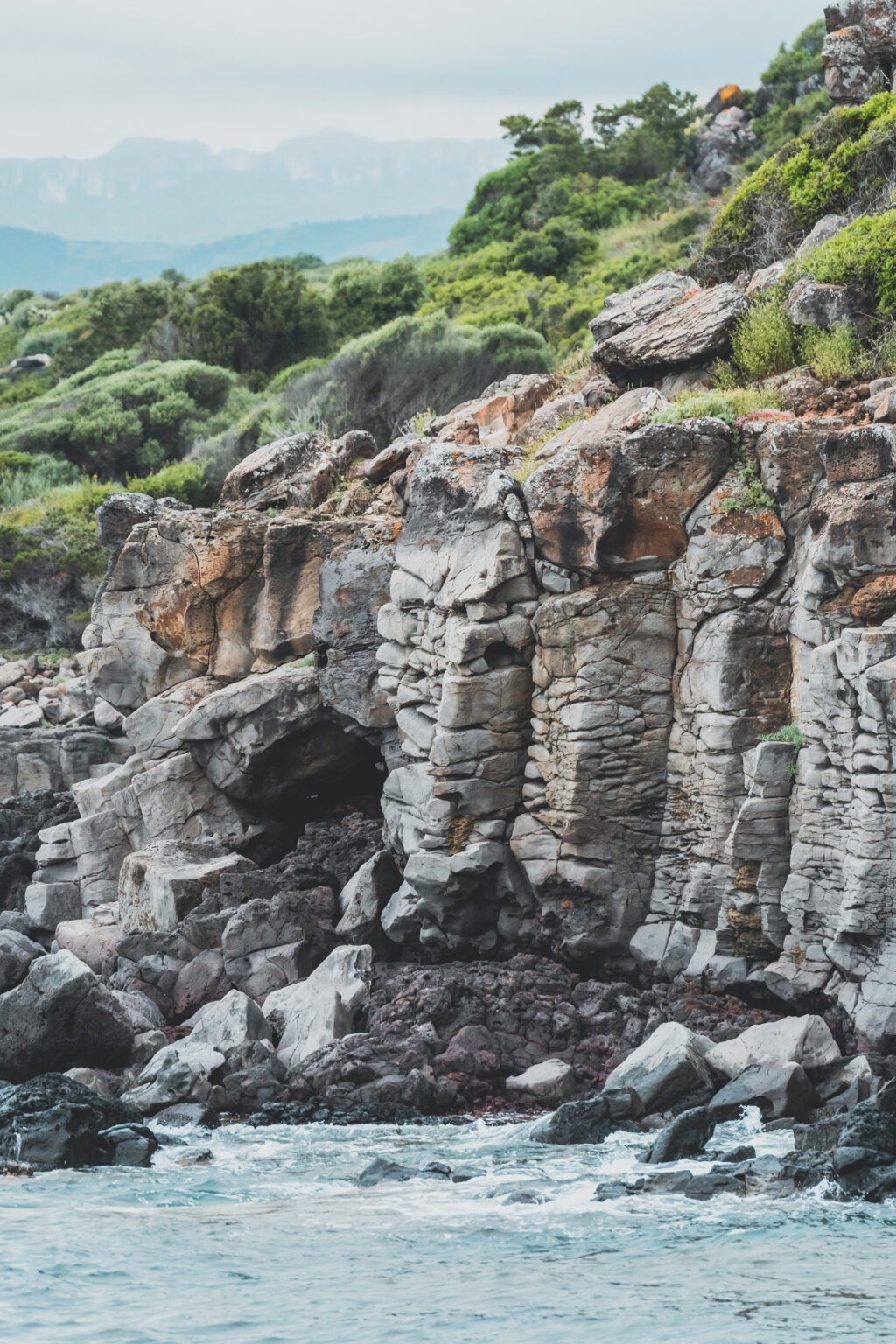








Red Arteries
We left the coast behind and dove into Sardinia’s heart, chasing a surreal spot our hearts were pulling us toward—so the SP13 was our guide. This provincial road links Jerzu to Gairo Vecchio, carving through red-orange rock faces and wild inland villages, with views that felt too cinematic to be real.
As we climbed, the landscapes shifted from olive-groved hills to dramatic, rust-colored cliffs that seemed to glow under the sun. Tiny villages clung to the slopes—patches of stone where time moves slower—and every bend brought something new: mossy walls, creaking shutters, and the sky opening above some wild plain.
We kept driving, chasing that strange calm beyond reach. The road may be short—just a handful of kilometers—but those red-hued canyons and the promise of what lay beyond made it a stretch we’ll never forget.


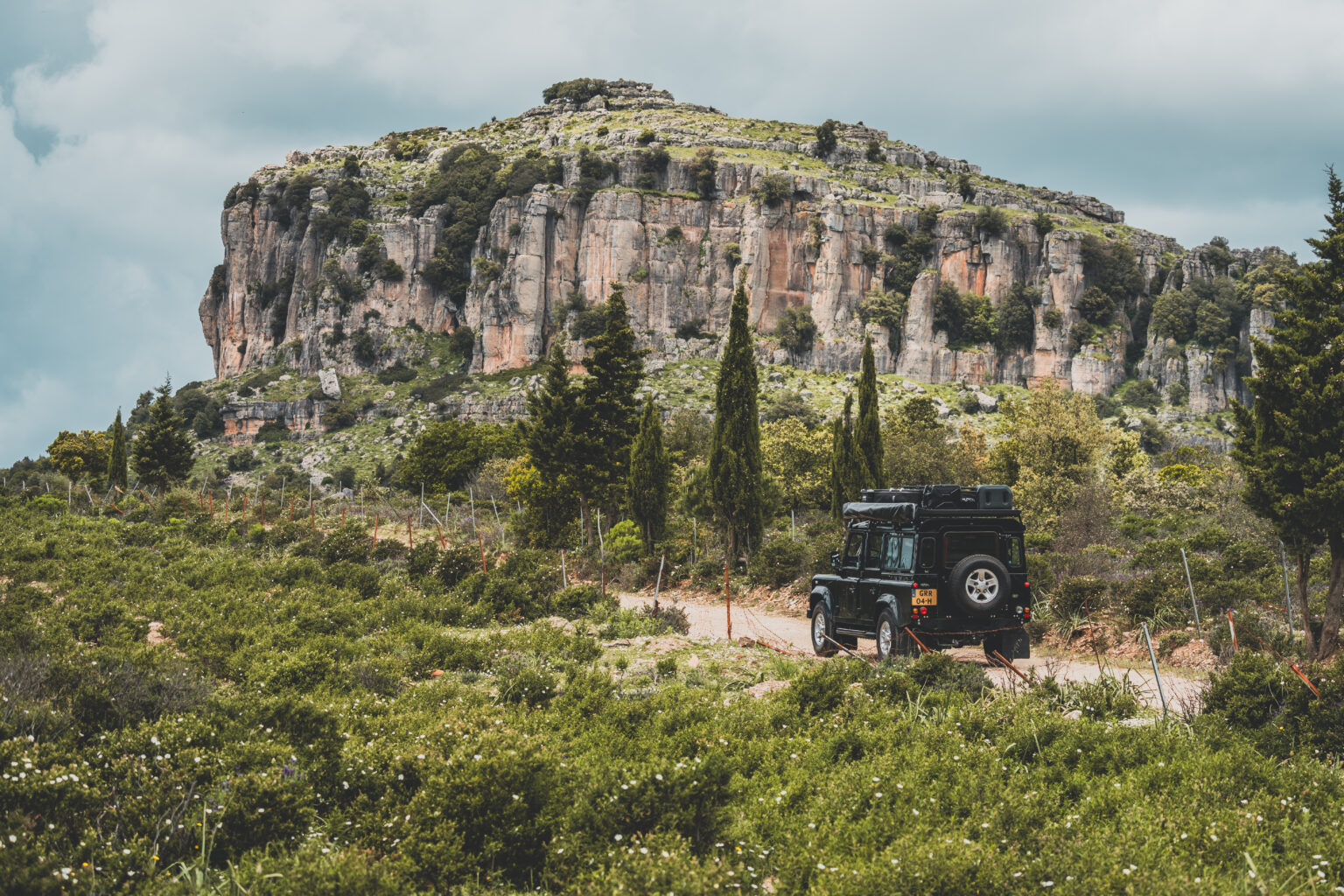
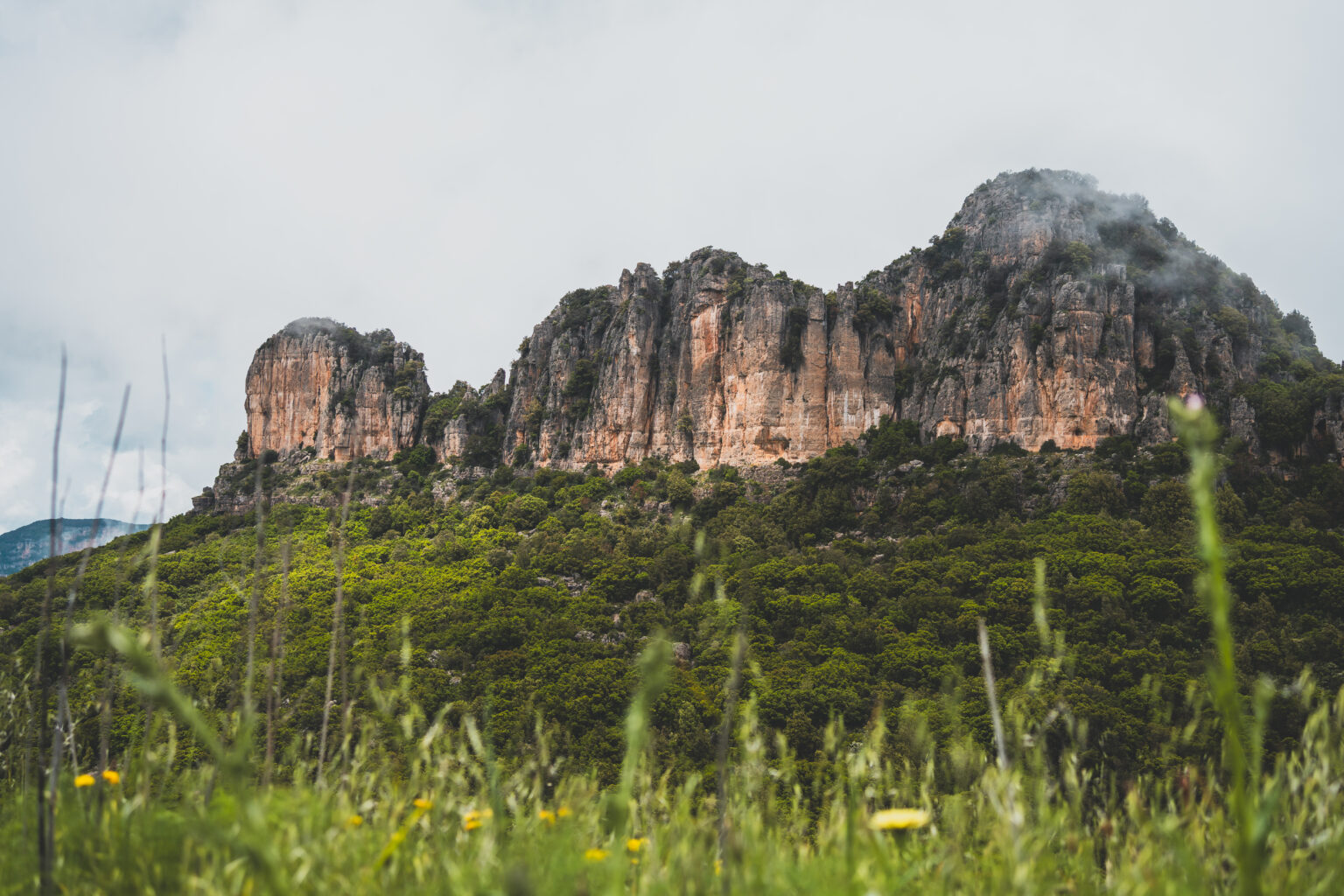

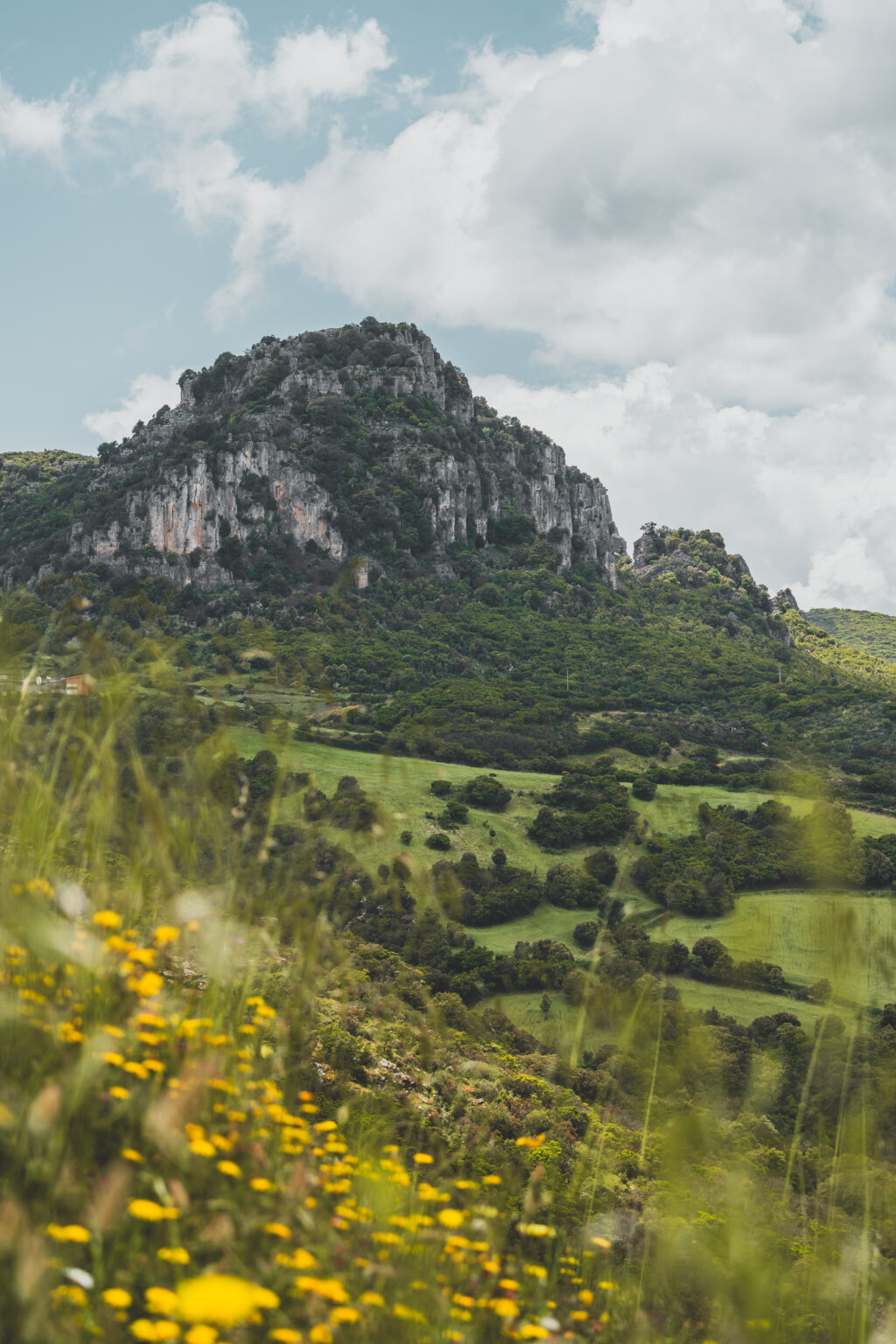
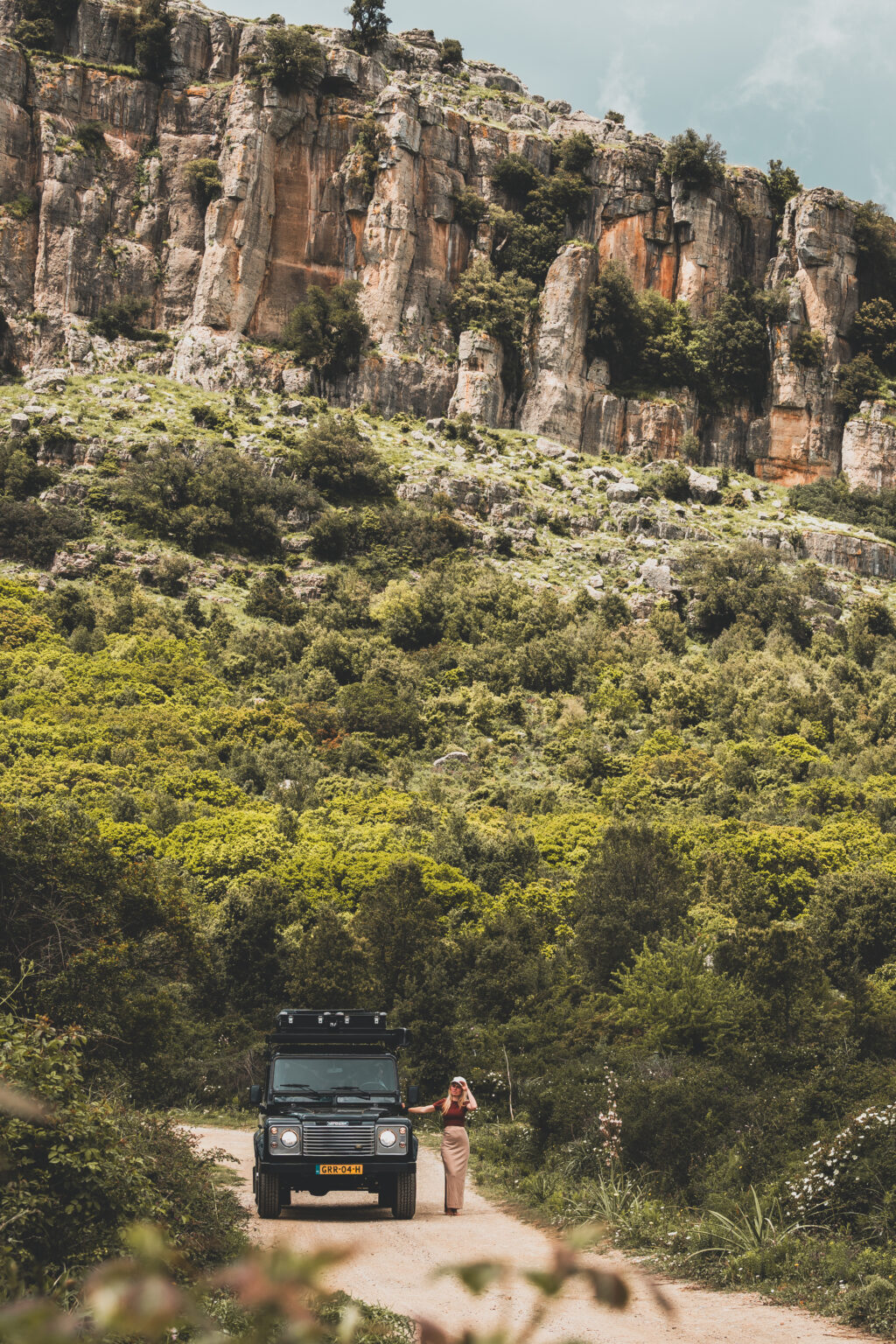



We weren’t just looking out the window on SP13 — the road itself had stories. Scattered along the way stood abandoned houses, half-eaten by nature, walls crumbling into the red earth. Some felt like they were waiting for someone to come back, others already long claimed by vines and silence.
One, though, stopped us in our tracks. Not because of the architecture, but because it had been redecorated by cows. They wandered the hallways like they owned the place, poking their heads through doorways, standing in the living room as if it was just another pasture. For Lovi, this was pure magic — an abandoned house turned into a cow palace, part ghost town, part petting zoo.


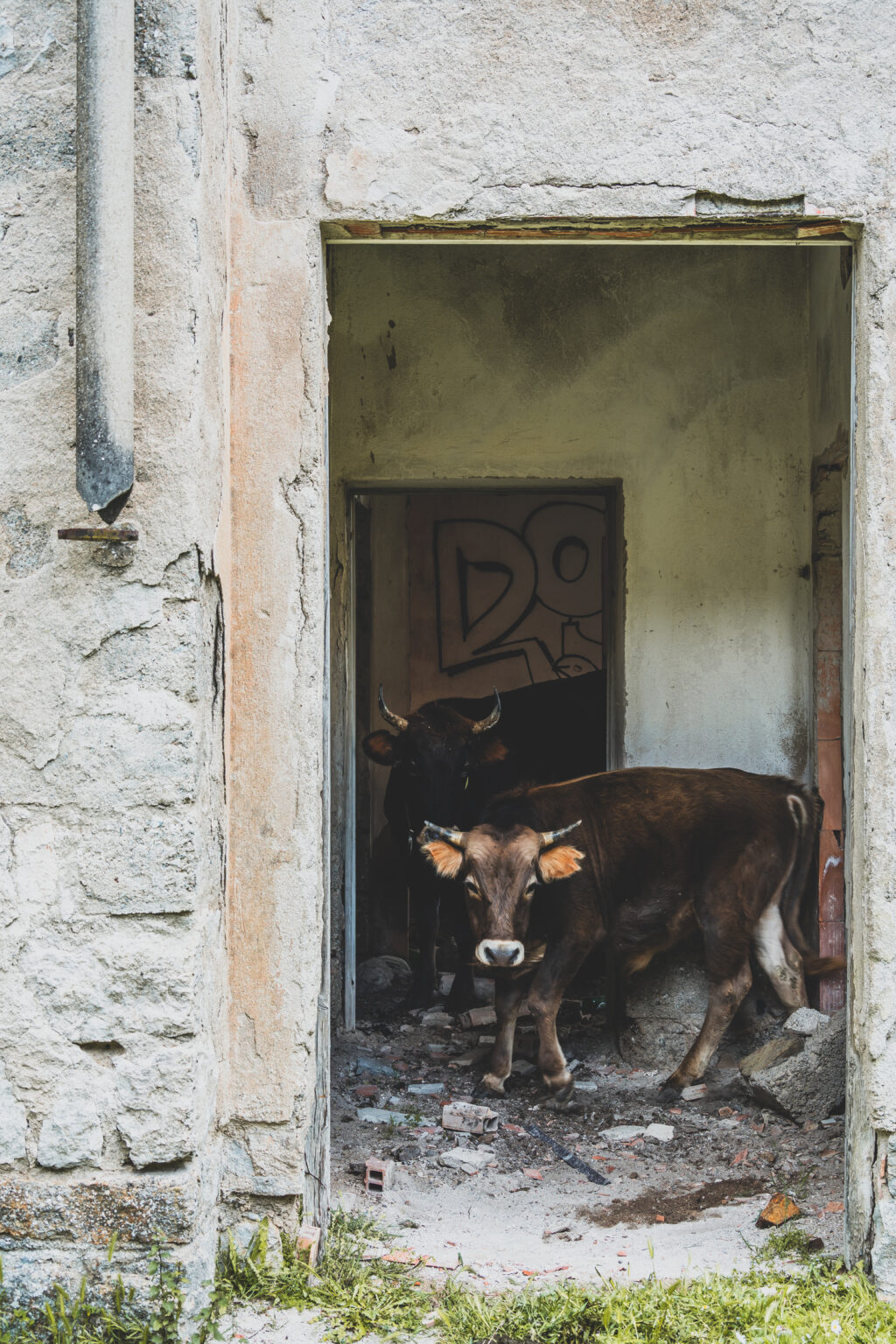
We stopped at Nuraghe Arrubiu, a monumental Bronze-Age stronghold in the hills of Orroli that feels like the heart of Sardinia’s ancient soul. Known as the “Red Giant,” its basalt walls gleam with rusty lichens, and the complex itself spans about 3,000–5,000 m²—centuries-old stones still echoing the whispers of early craftsmanship and forgotten ceremonies.
The site was deserted and ours to wander peacefully. We had the run of its narrow passages, vaulted chambers, and layered courtyards—no crowds, no rush, just the curious thrill of cold stone under our fingertips. Visitors pay a modest €5 (kids €3), a small price for that kind of quiet, immersive history.
What made it a perfect stop? The stillness. As we explored the tholos roof (yes, it’s still intact), Lovi ran from corridor to courtyard, eyes wide. This smaller site beat out the noise of the popular nuraghi—you really feel the architecture, the ages.



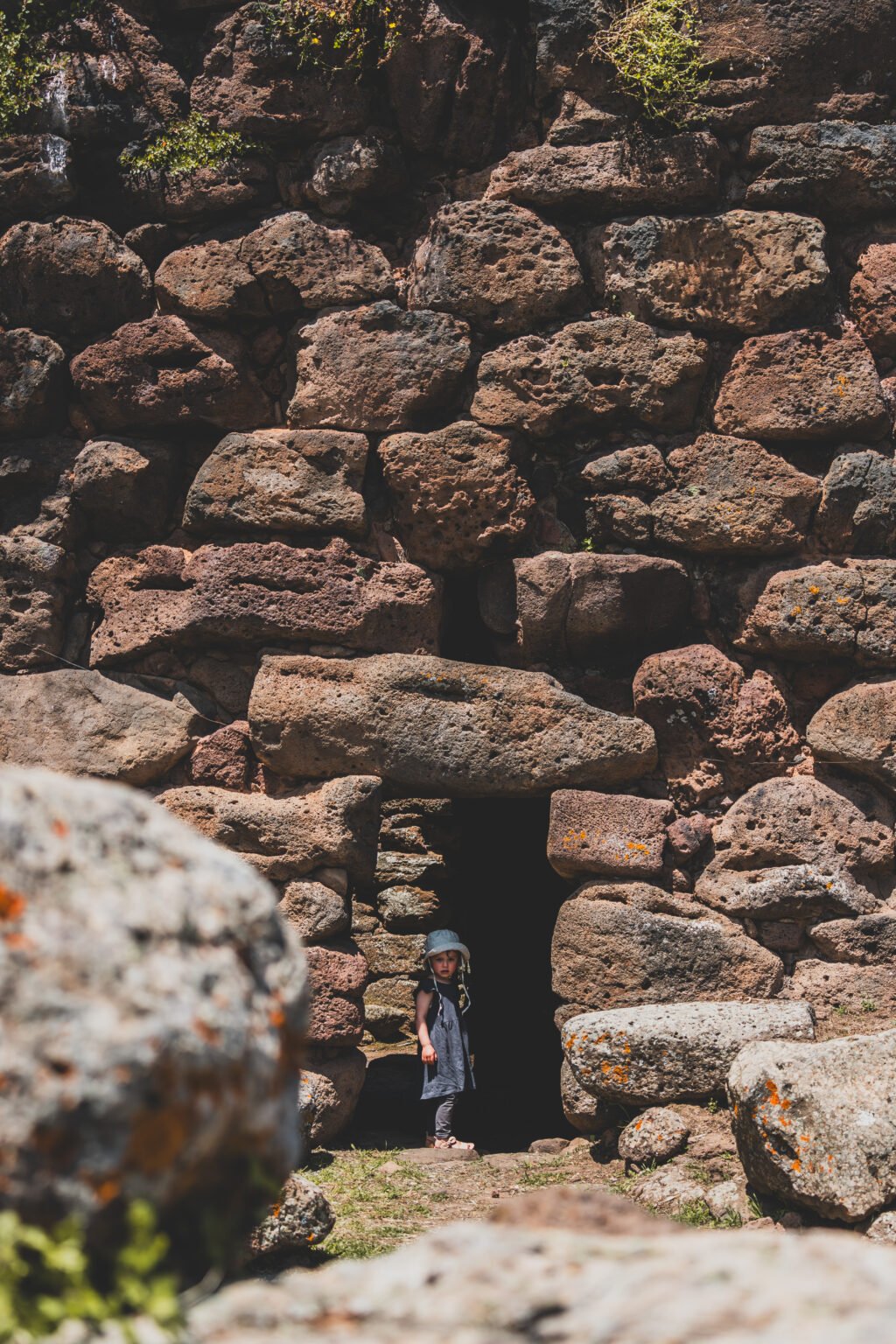

Surreal Paradise
At this spot we pulled the Defender to the water’s edge—just beyond the beaten path—to camp at a submerged valley turned tranquil reservoir. We had the shore to ourselves, as if the world had slipped away, leaving only quiet and water.
At sunset, the place transformed. The lake looked otherworldly, but it really happened after dark: the moon rose so bright and massive it felt like another sun, painting light across the glassy water. It wasn’t a scene you chase often—it found us.
The morning, a mist hovered low over the surface, turning the lake into a living canvas of reflections, soft green hills, and ghostly outlines. Every ripple, every breath of wind, echoed the kind of place where time folds and a Land Rover brings you somewhere you know you’ll never forget.

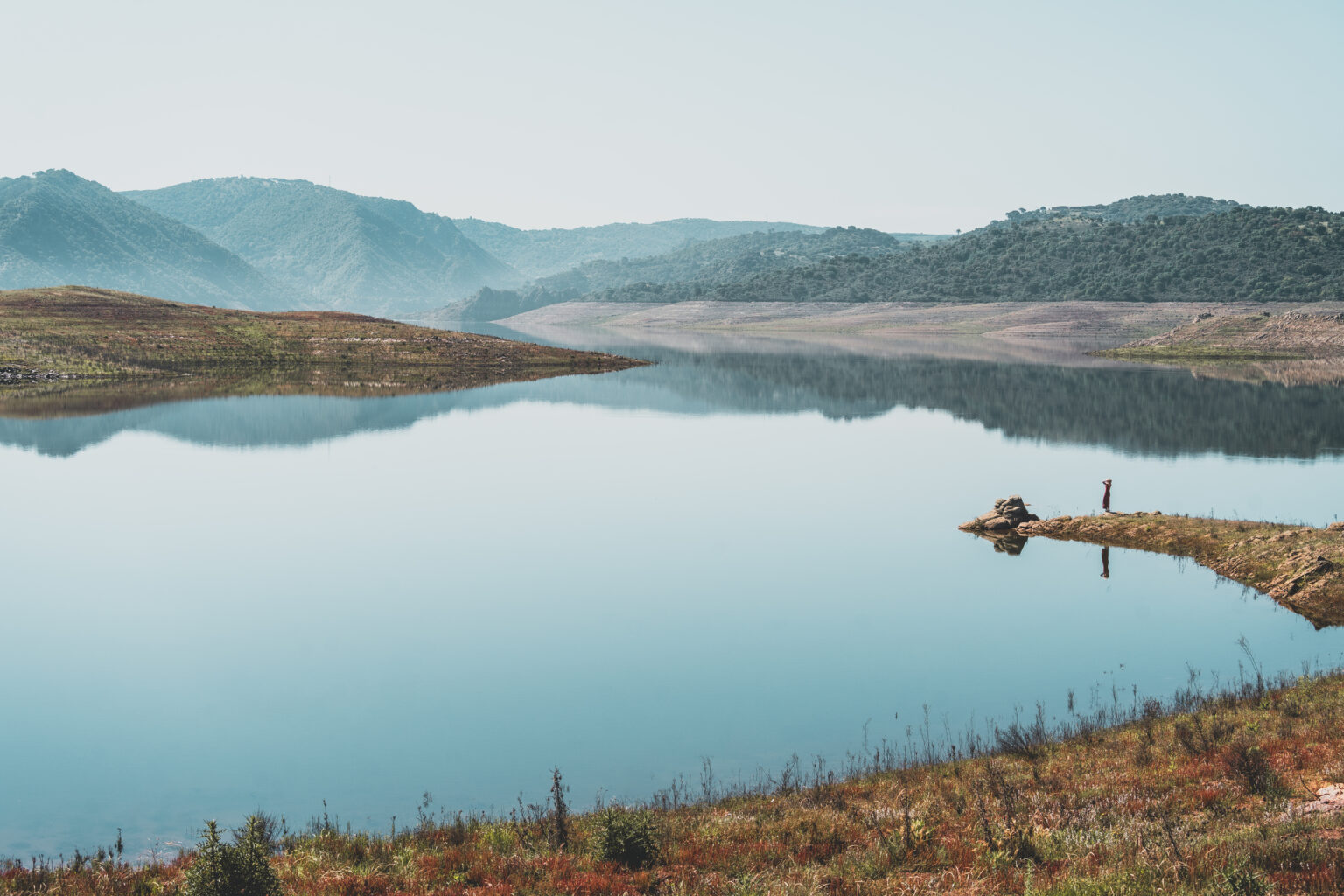

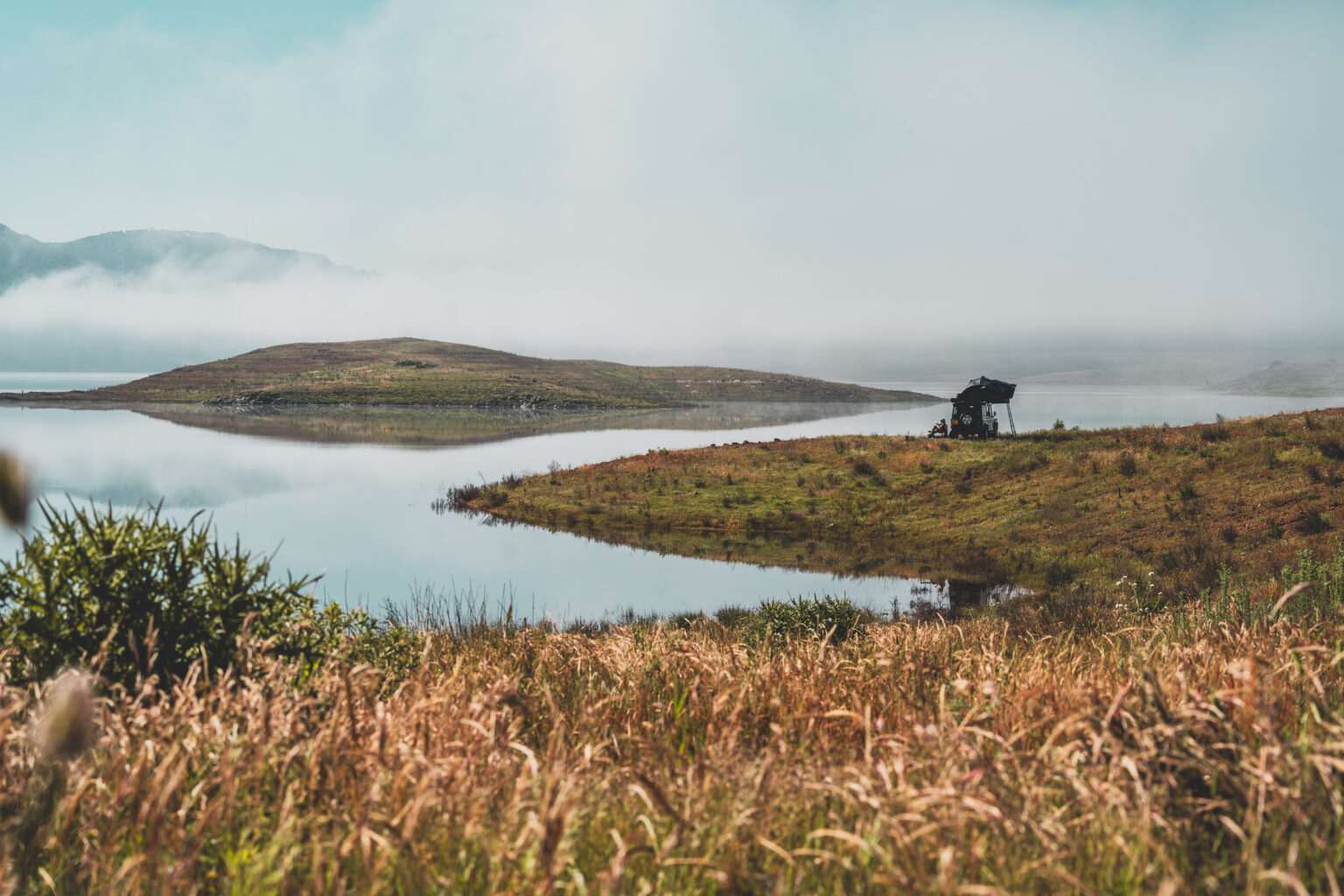
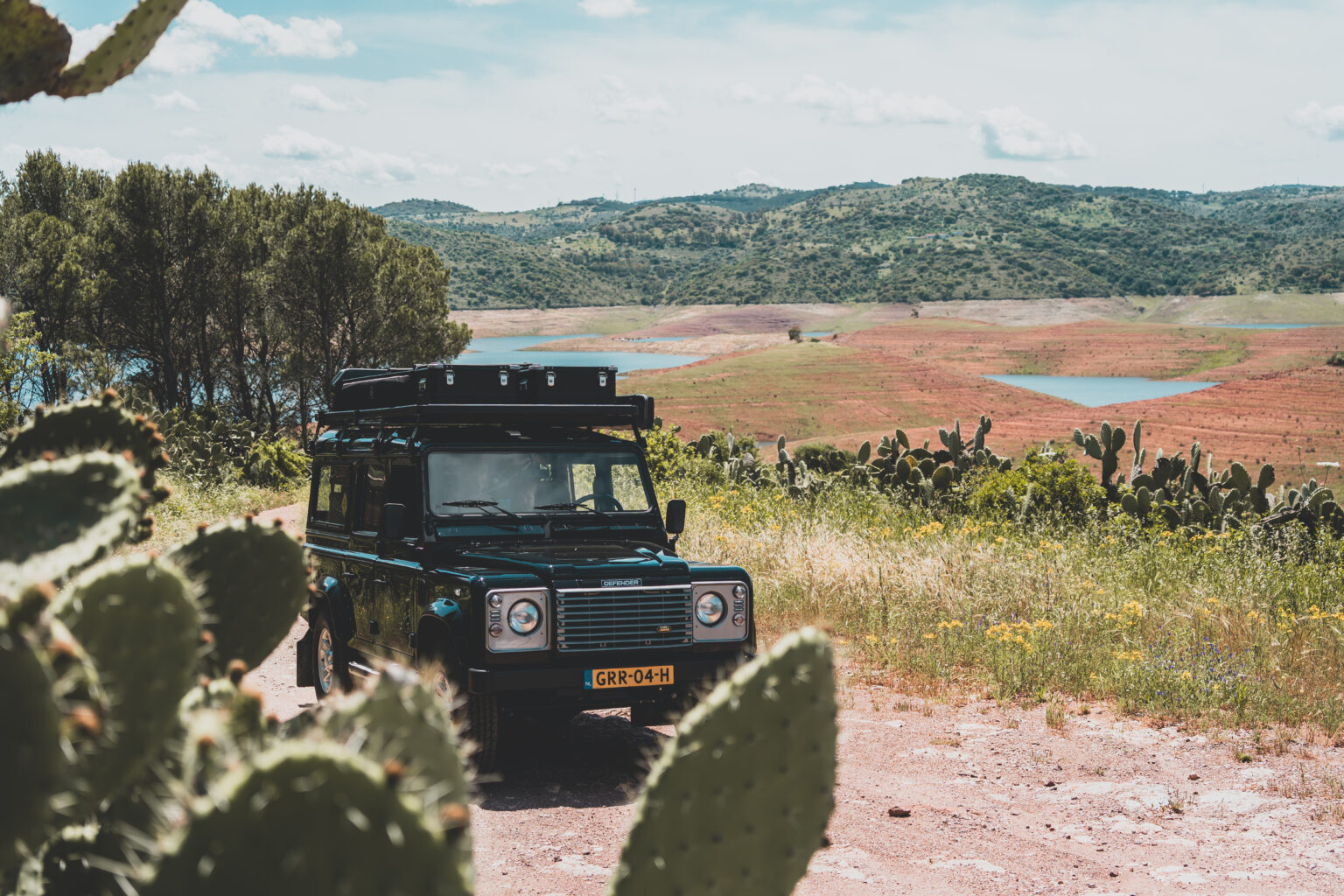
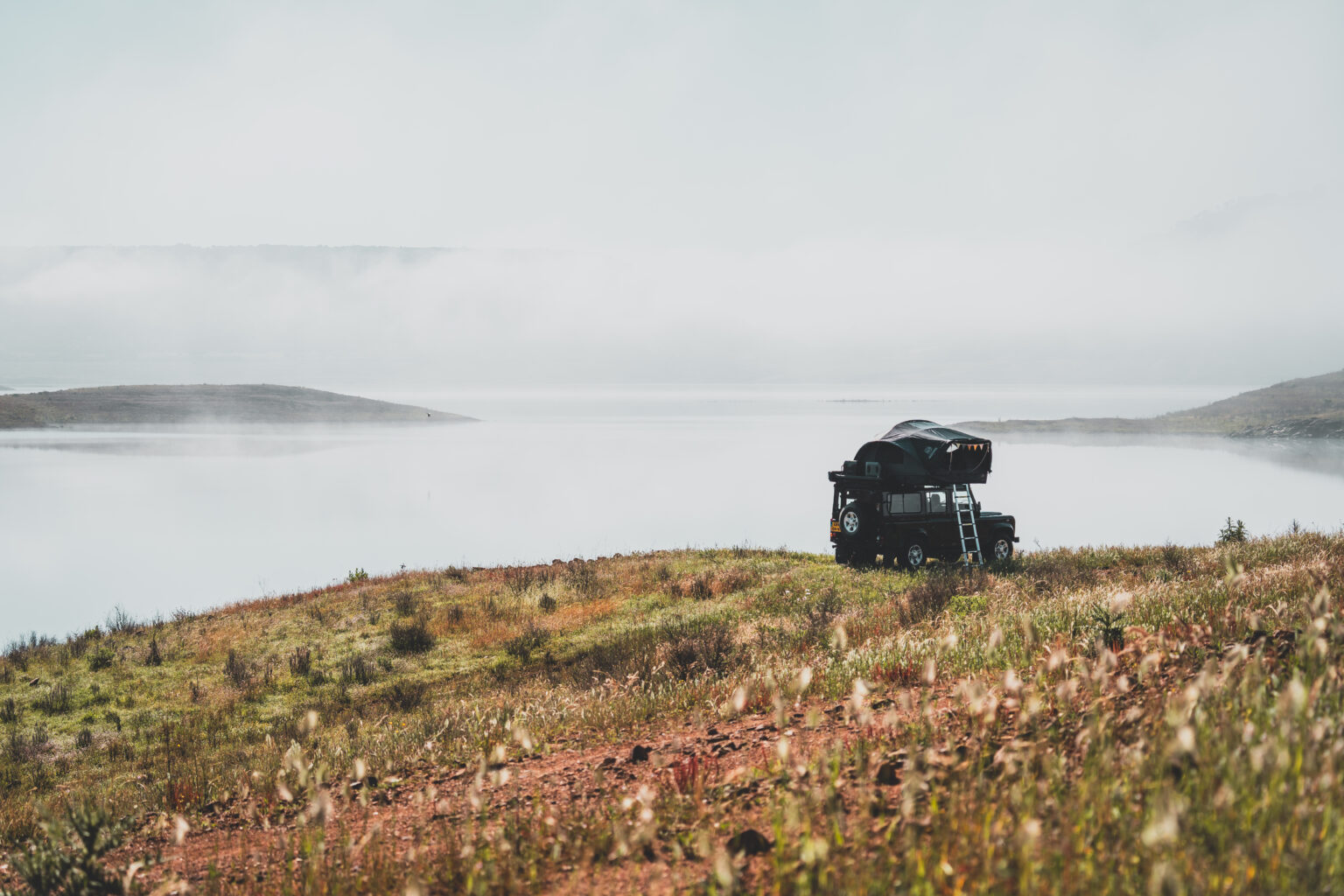





Garden of Small Luxuries
After a few wild days we treated ourselves to a proper reset at a small rural retreat tucked into Sardinia’s interior. It felt like stepping into a different pace: an open terrace overlooking the valley, a quiet pool to float in, and a garden where horses and farm animals drifted past like friendly neighbors — exactly what the girls needed.
The place is tiny and lovingly run: only a handful of rooms (and even a cave-style “grotto” room for something a bit quirky), a simple farmhouse kitchen serving seasonal, local dishes, and a small spa area to soak and slow down — all the creature comforts without any pretense. We managed to park up front-row to the views and enjoy one of the few spots that feels both family-friendly and quietly luxurious.
It’s also a beautifully moody setting for photos — shadowy corners, terraced gardens and that pool reflection that makes every snapshot look like a postcard. If you need to swap sand for shade and sea spray for spa steam for a day or two, this kind of valley retreat is the perfect interlude.

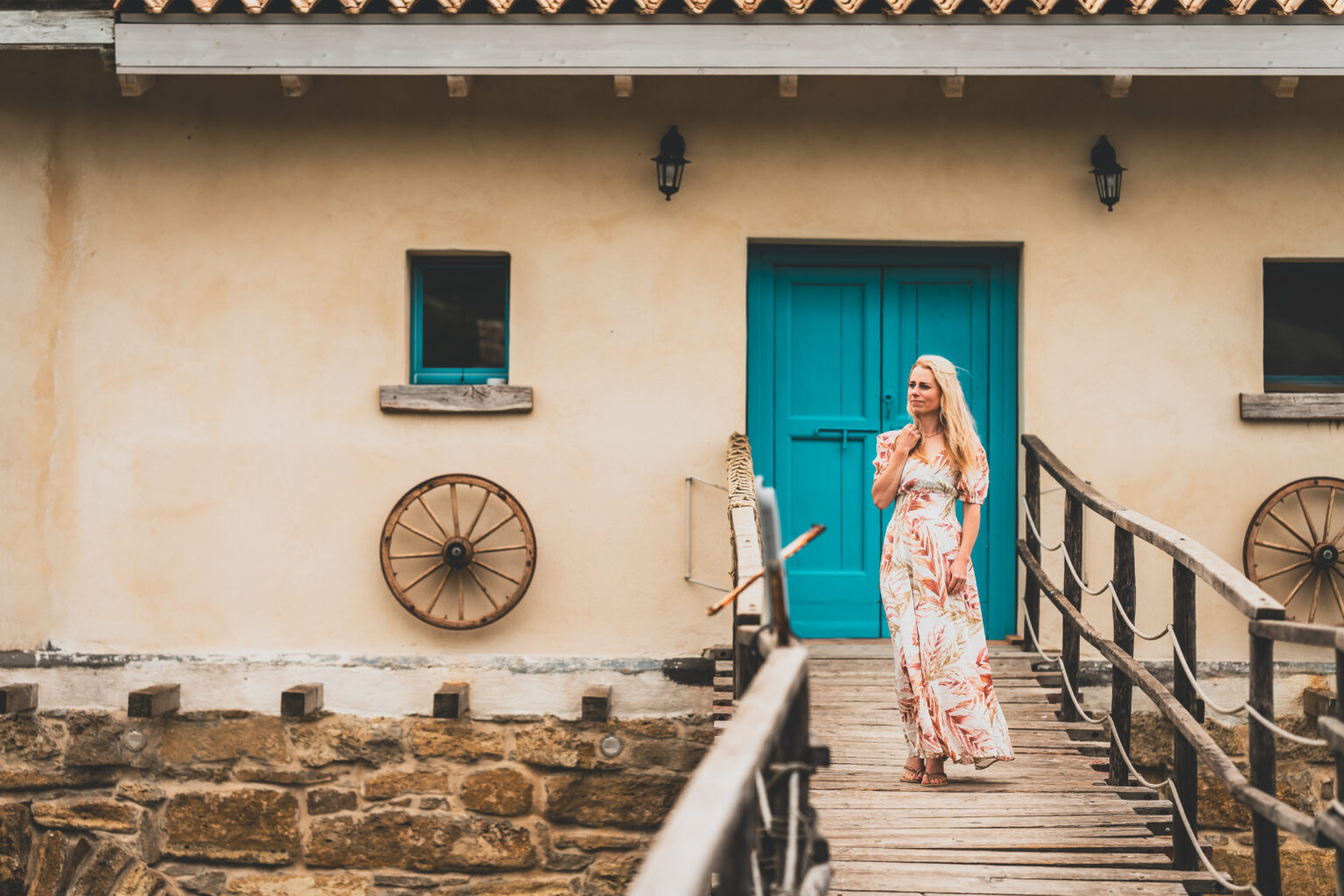






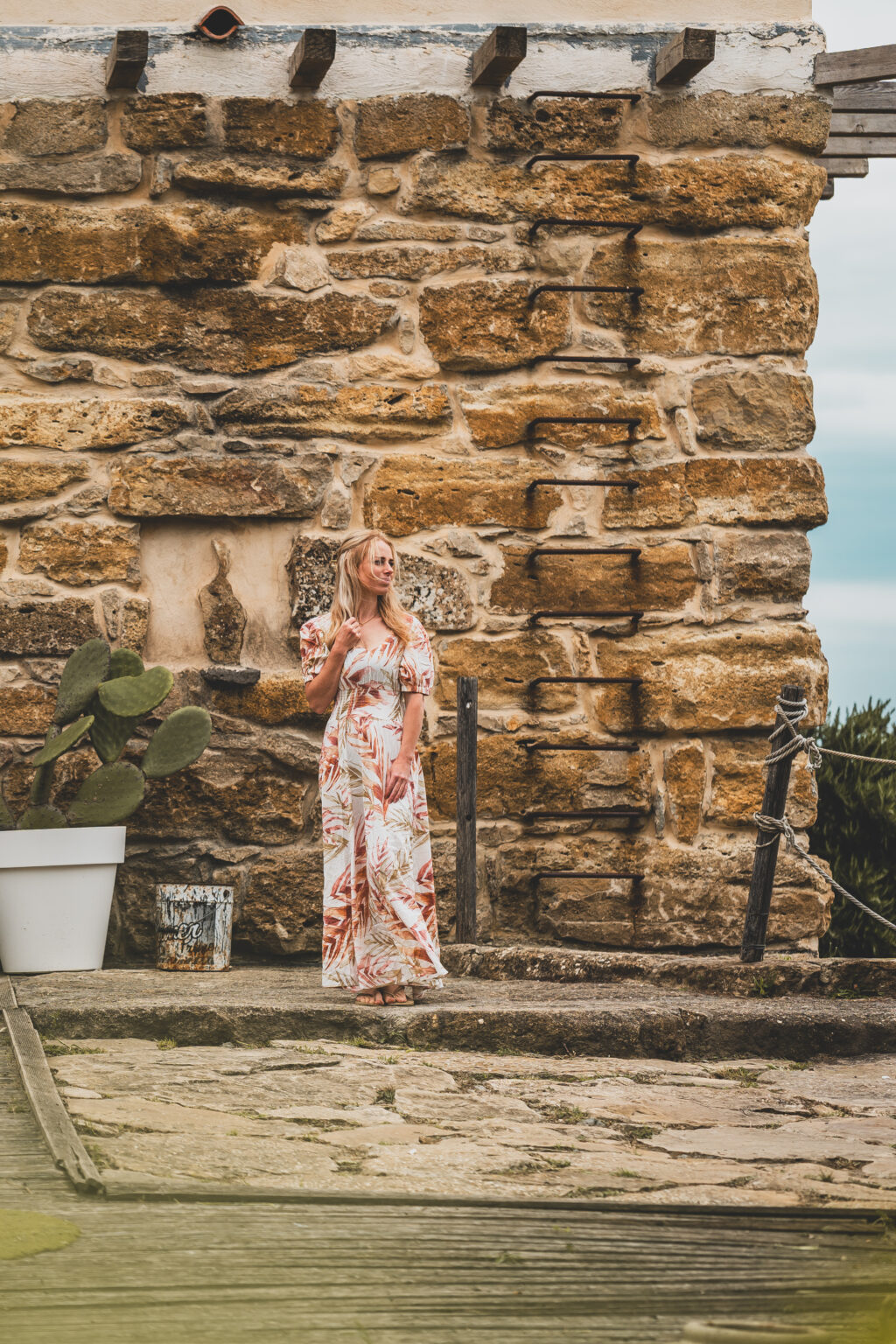


A Patchwork of Wonders
Because of the kids, we made a stop at Sardinia’s one and only theme park: Parco Sardegna in Miniatura – Parco dei Dinosauri. It’s an eclectic place, originally built to showcase miniature replicas of Sardinia’s landmarks, but over the years it grew in every possible direction. A dinosaur park here, a planetarium there, a butterfly garden stitched in between. Every time they thought of something new to entertain kids, it seems they simply added it on — like a quilt of childhood fascinations.
Through our eyes, it wasn’t exactly magical. The guided “train” was basically a tractor with a plastic shell, the dinosaurs looked too fake to scare anyone, and the botanical garden felt like it hadn’t seen proper care in years. A little bit of abandonment showed through the cracks.
But for Lovi? It was heaven. She ran from dinosaurs to butterflies, eyes wide at every turn. And that’s what counts. For us, it was fun in a different way — wandering through this stitched-together world, half amusement park, half forgotten relic, still managing to cast its spell on the little ones.



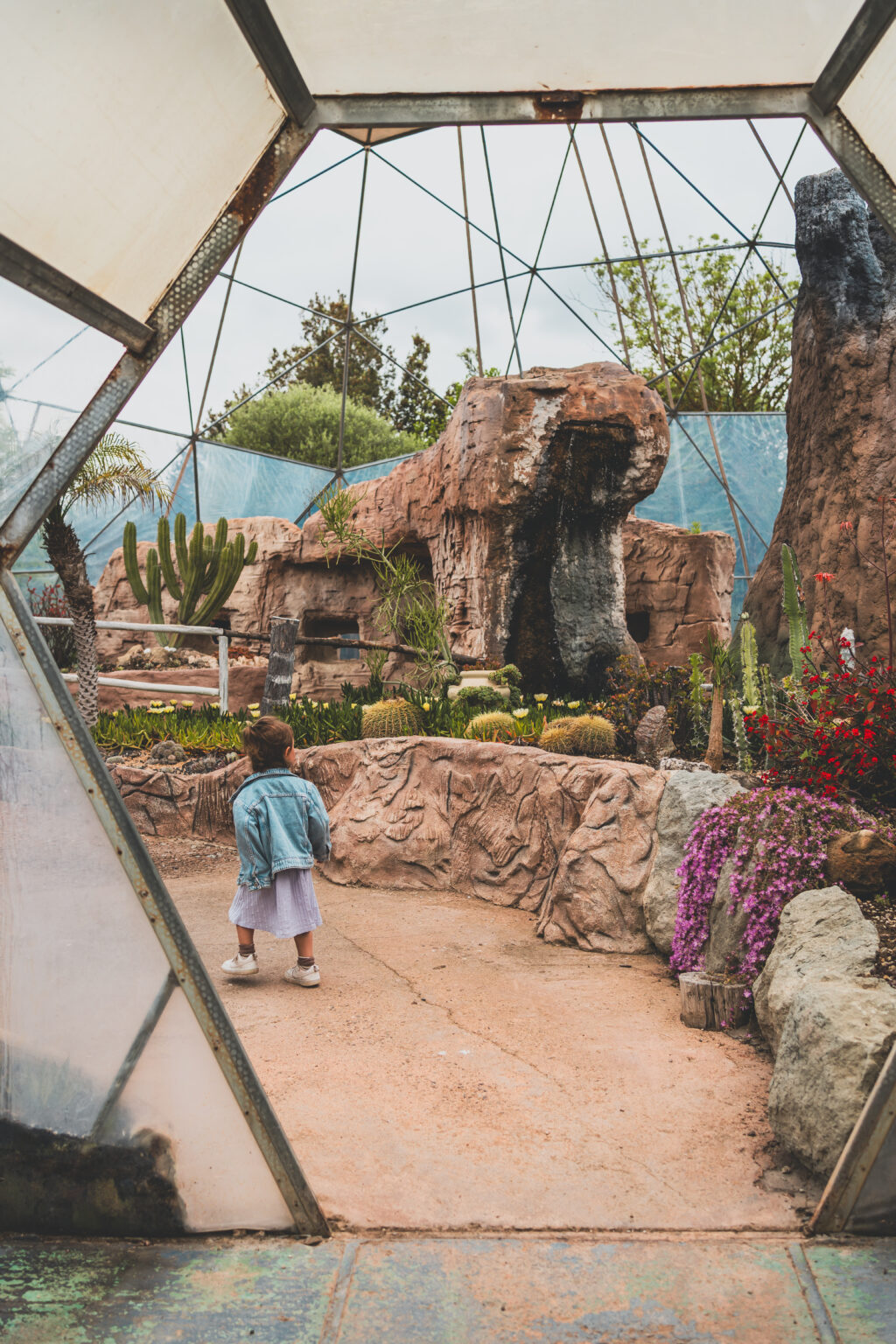
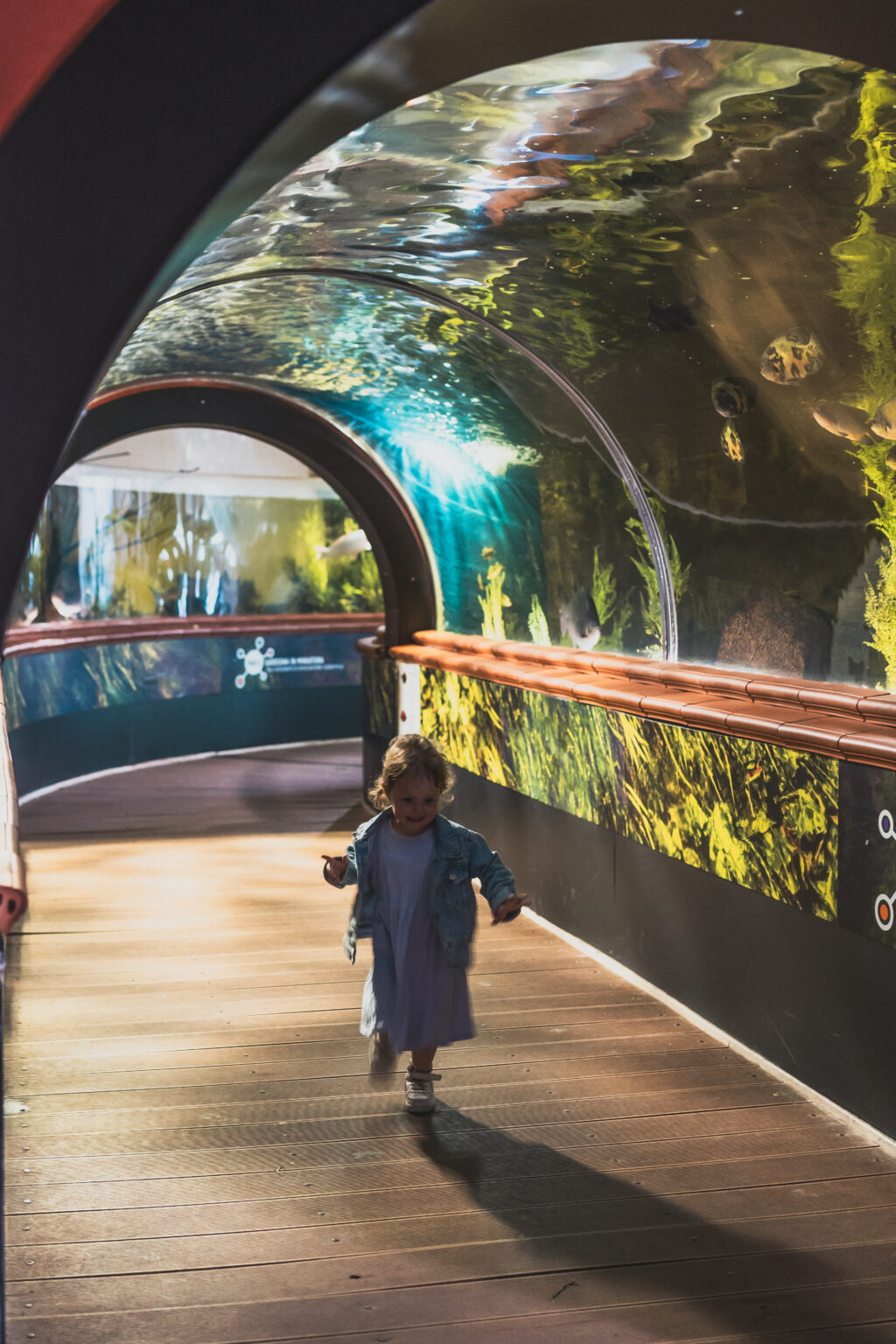

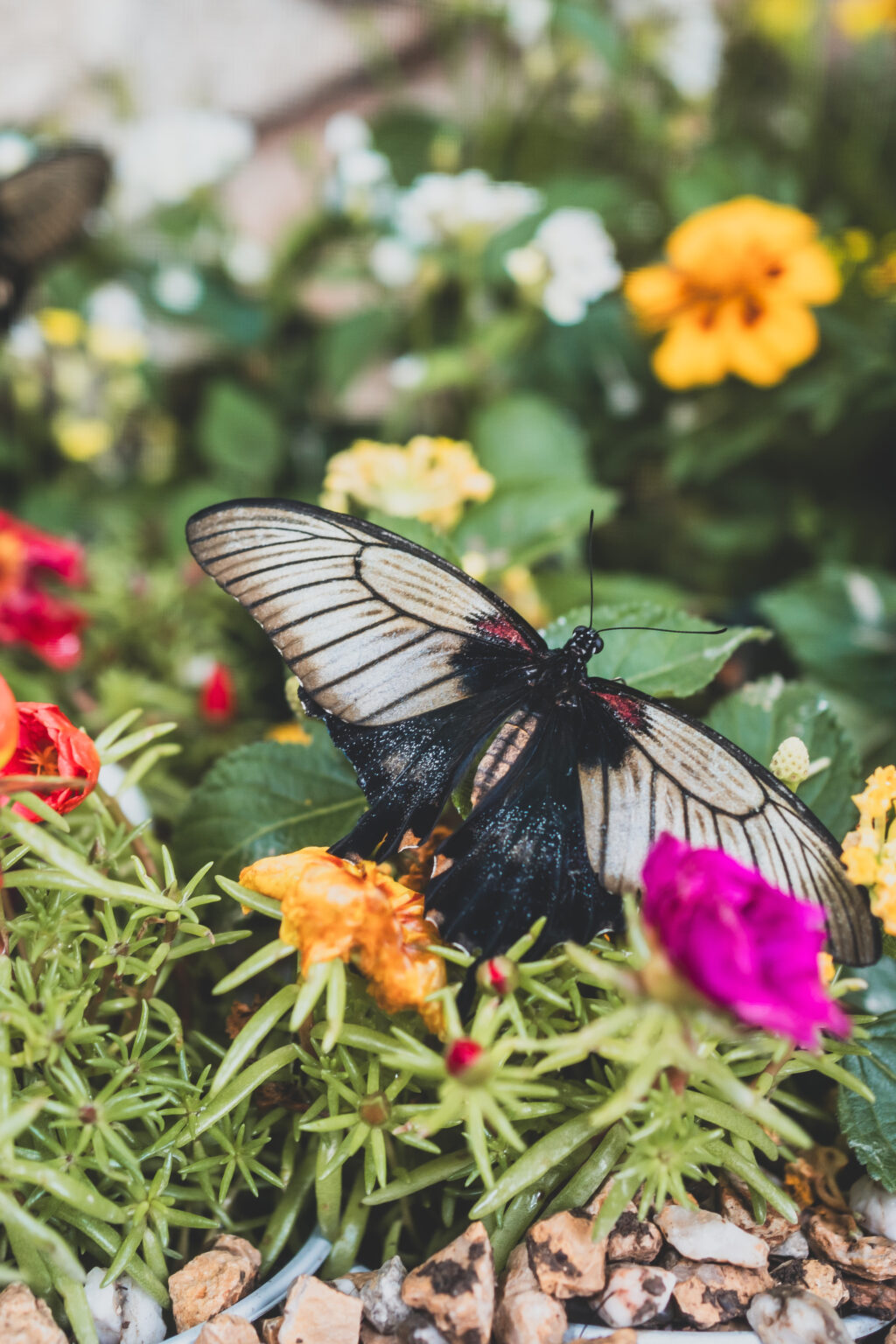

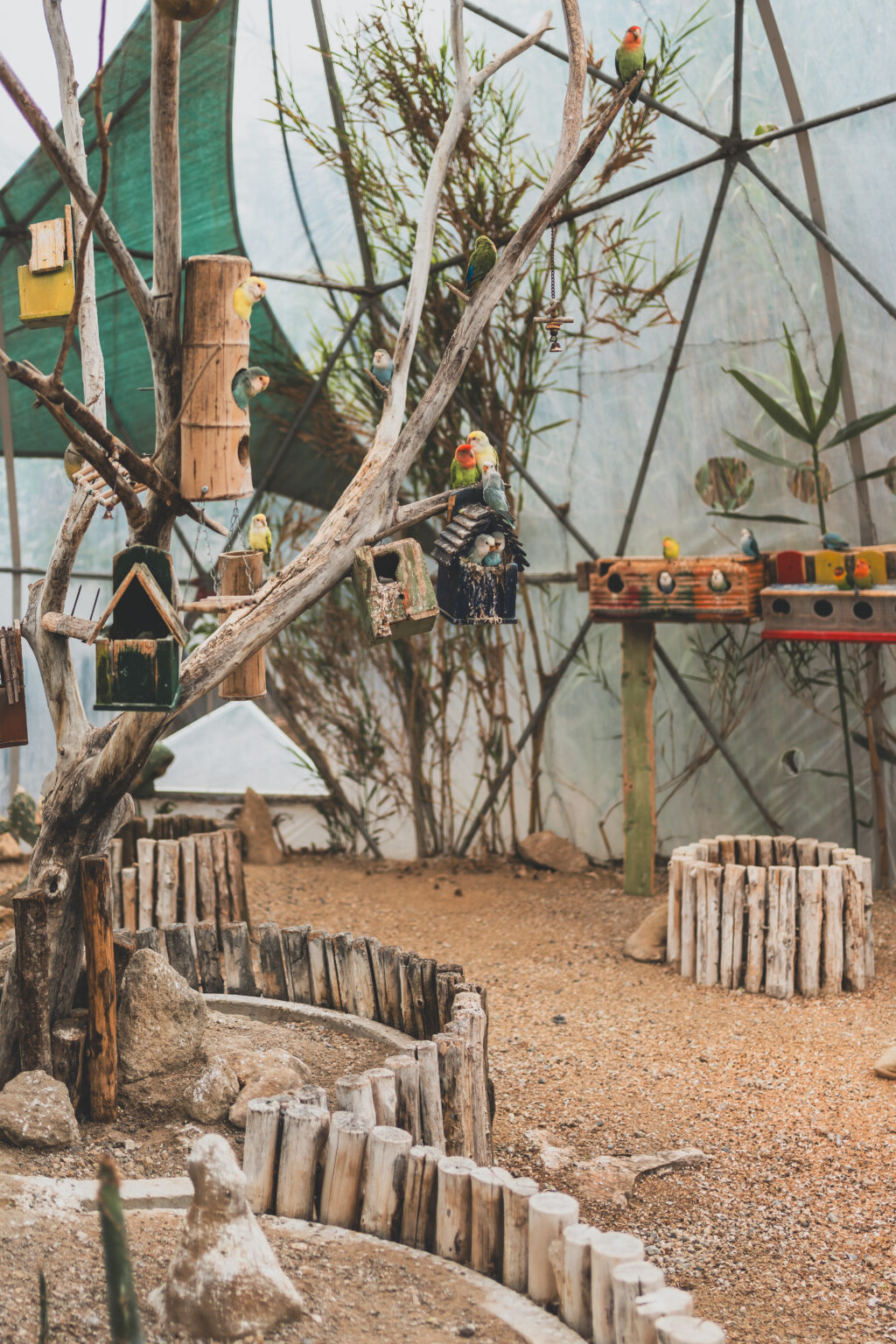
Oasis Between Red Peaks
On our way through southern Sardinia, we made a quick stop at Castello di Acquafredda, a medieval fortress perched dramatically on a volcanic hill near Siliqua. Built in the 13th century — and once linked to the Pisan nobleman Count Ugolino (yes, the same one mentioned in Dante’s Inferno) — the castle still clings to the rock like it was grown from the stone itself.
We didn’t climb all the way up this time, but even from below it was worth the pause. We set up a simple lunch with the best view of the mountain and castle towering above us. A mix of ruins, legend, and that wild Sardinian landscape — it felt like the kind of backdrop you couldn’t invent if you tried.

Handpicked Hidden-Gem spot
'Below the Castle'
- A backdrop you couldn’t invent if you tried.
Back in the woods and mountains, we wandered into Foresta Demaniale di Montimannu — one of Sardinia’s largest state forests, stretching over 4,700 hectares of oak, cork, and pine. This area is known for its network of hiking trails, rivers, waterfalls, and even old mining ruins hidden deep among the trees.
A quiet trail led us to a green oasis framed by the reddish peaks of Montimannu. It felt like stepping into a natural amphitheater where the mountains stood guard and the forest floor opened just enough for us to settle in.
We camped near a summer forest camp that’s used by hikers, youth groups, and travelers when the season is in full swing. In summer, it comes alive with people seeking shade, water, and all the comforts of the forest camp setup. But for us, in the off-season, it was still and quiet — just the trees, the peaks, and that deep green silence.
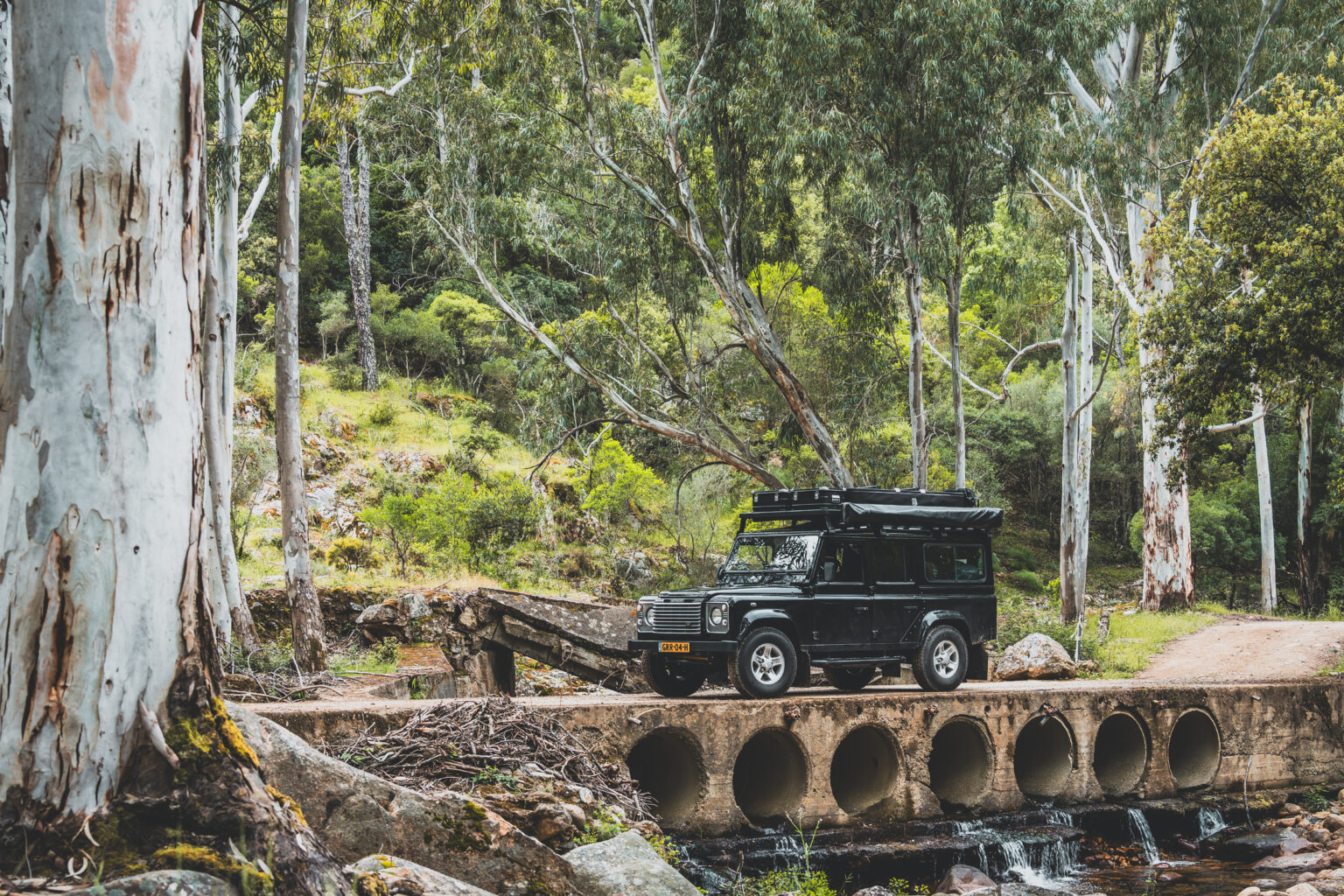



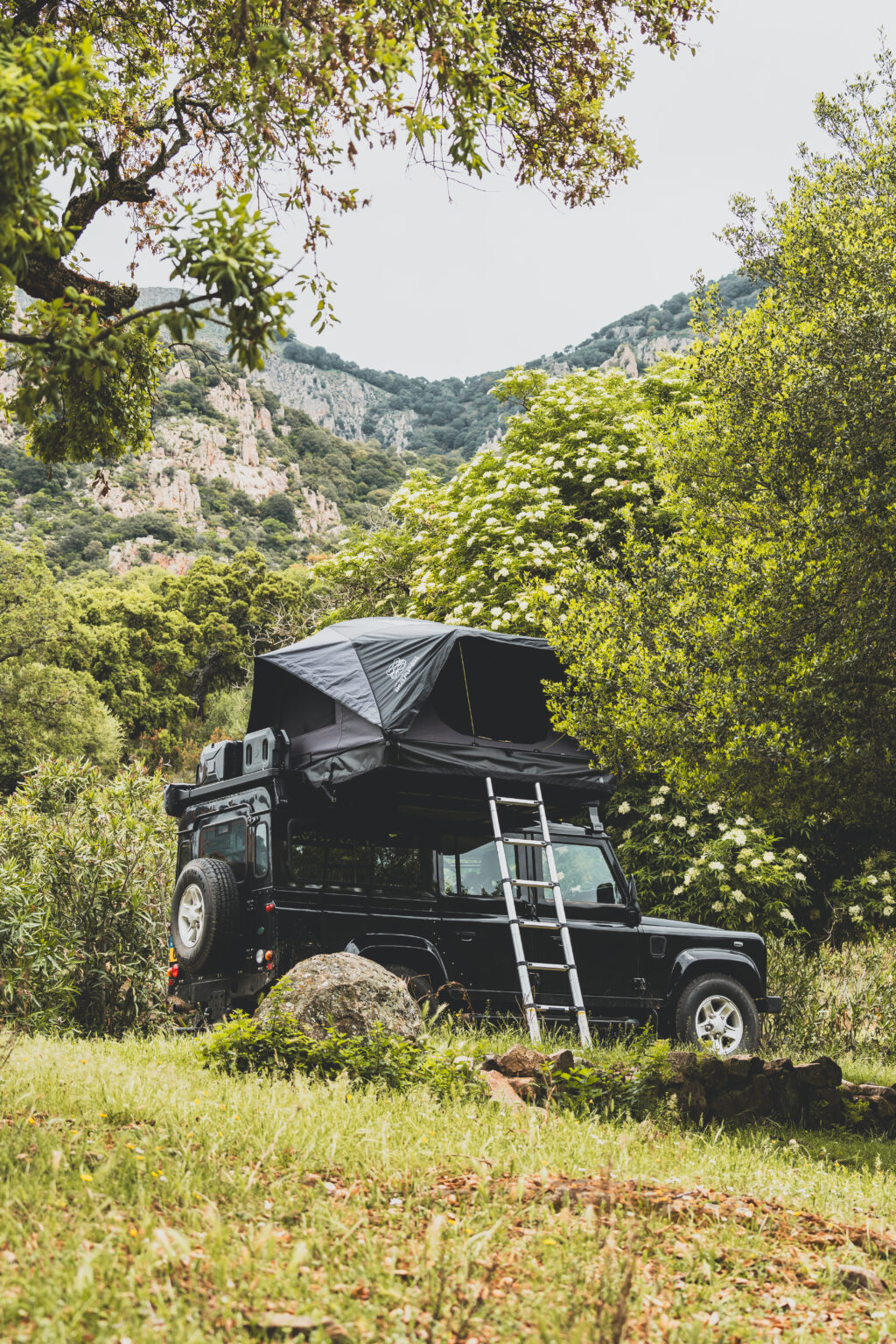
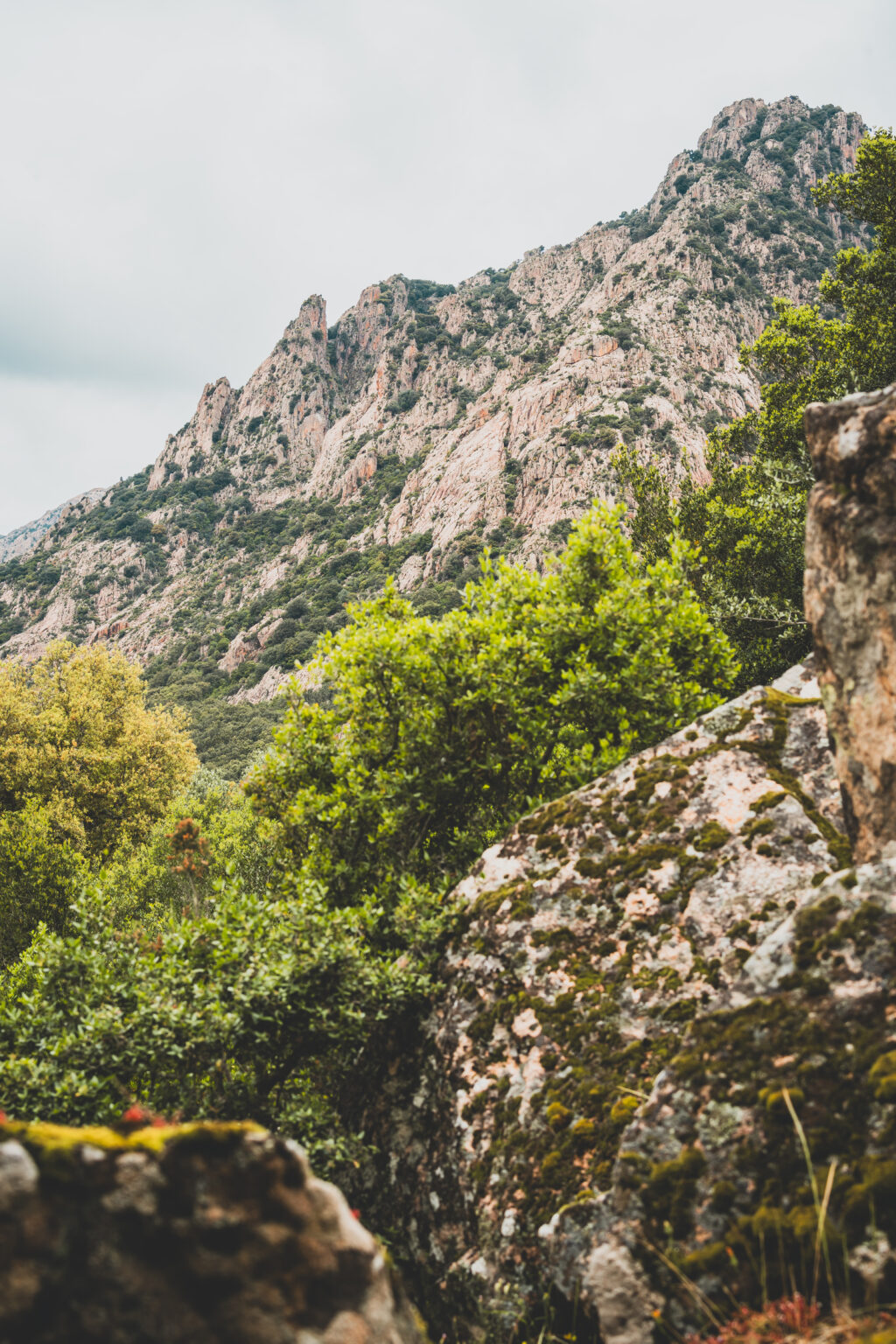
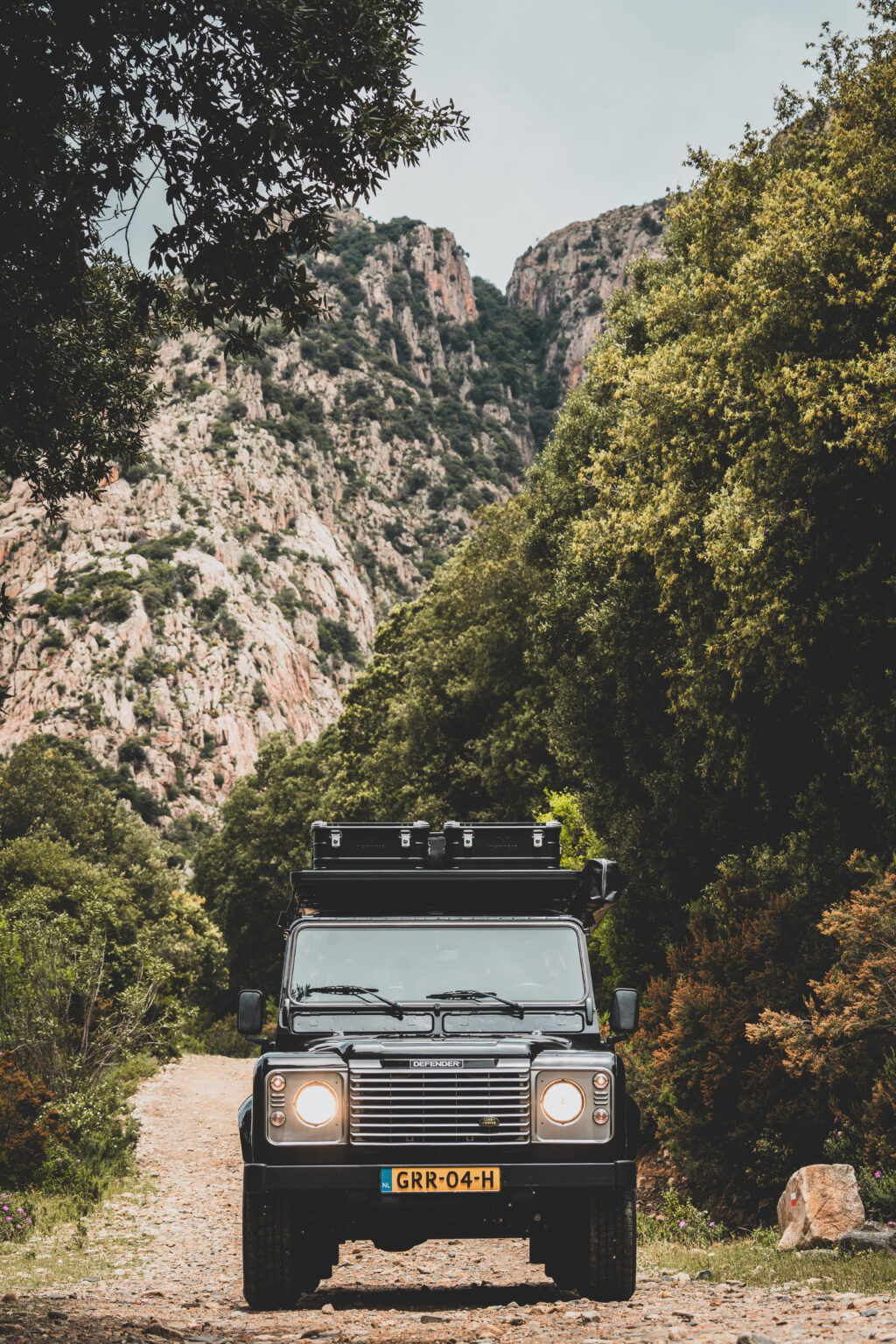

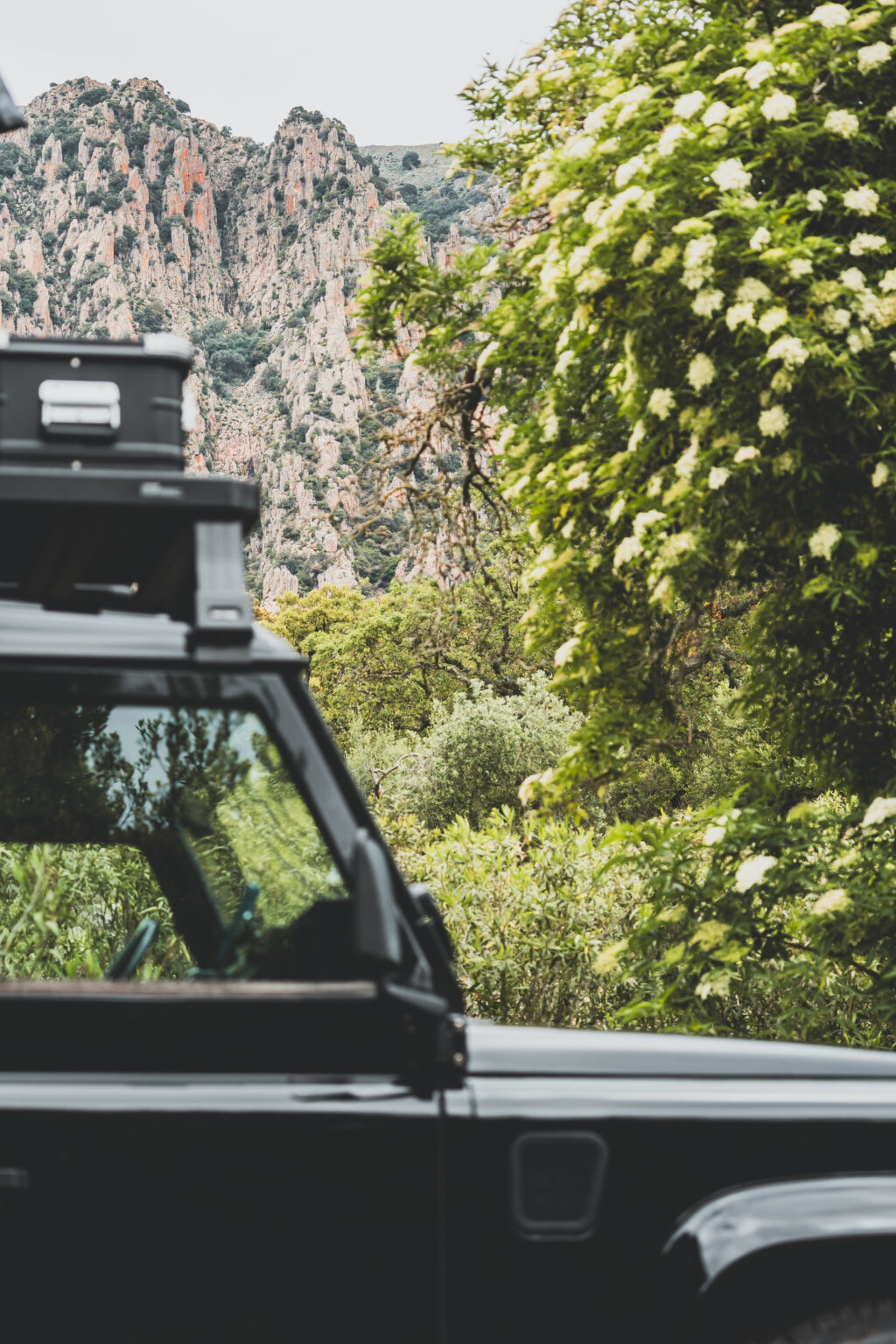



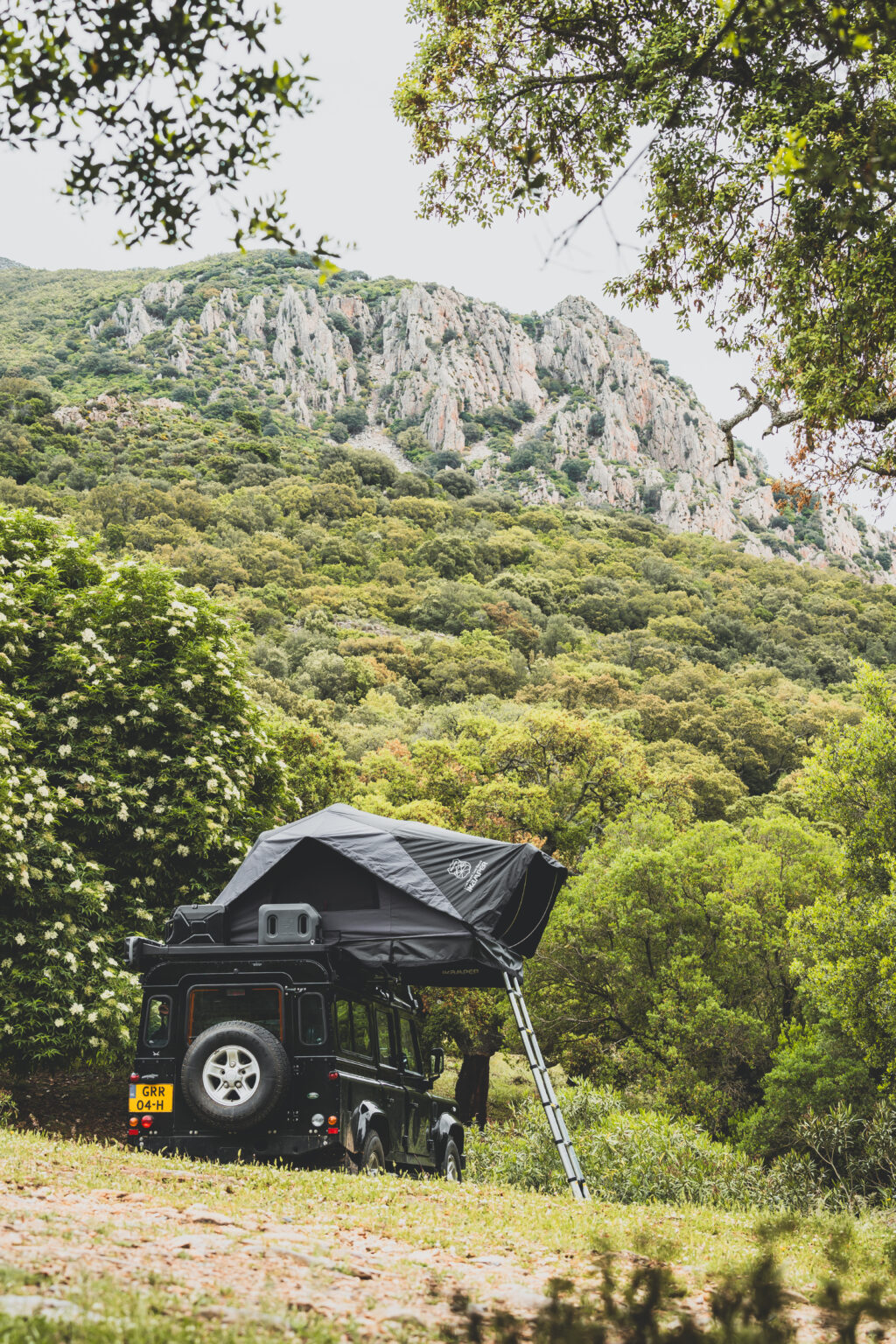
Flamingos & Farm Colors
We spent the day at Spiaggia di Porto Pino, a stretch of white sand on Sardinia’s southwestern coast. The beach is known for its dunes — some of the tallest in Sardinia — and the lagoon behind it, which is home to flocks of flamingos. Between the turquoise water, fine sand, and pink birds drifting across the horizon, it’s the kind of daytime visit that feels a little unreal.






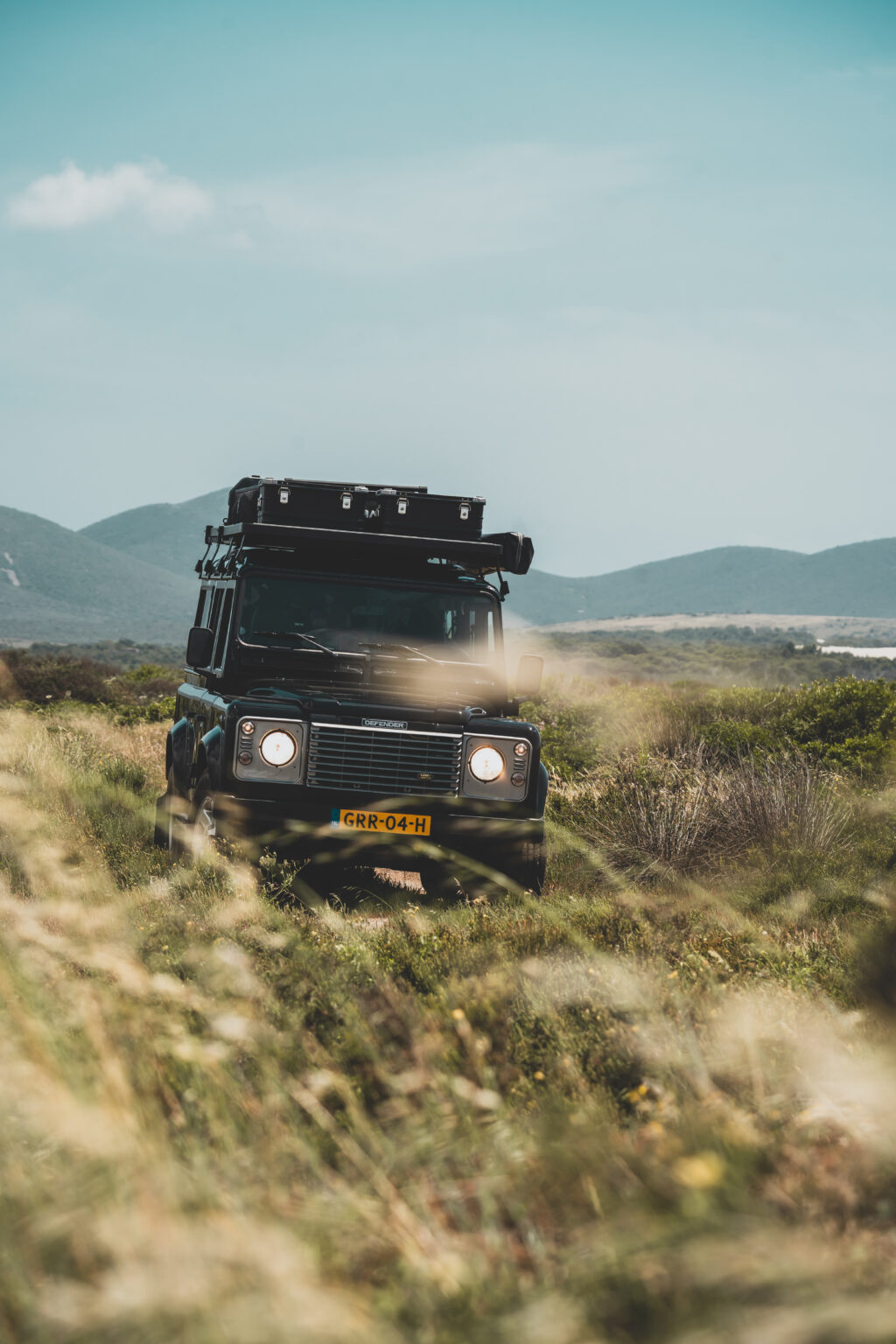

Since the whole area is protected (and the nearby military base keeps a close eye on things), camping on the beach was out of the question. Instead, we rolled into a tiny agriturismo camp, tucked into a working farm. It turned out to be its own little paradise: colorful gardens, an outdoor kitchen with a hammock strung nearby, and a trampoline and pool for Lovi. Donkeys wandered in the background, adding to the farmyard soundtrack.
It wasn’t wild camping this time, but a small, vibrant haven that gave us everything we needed.
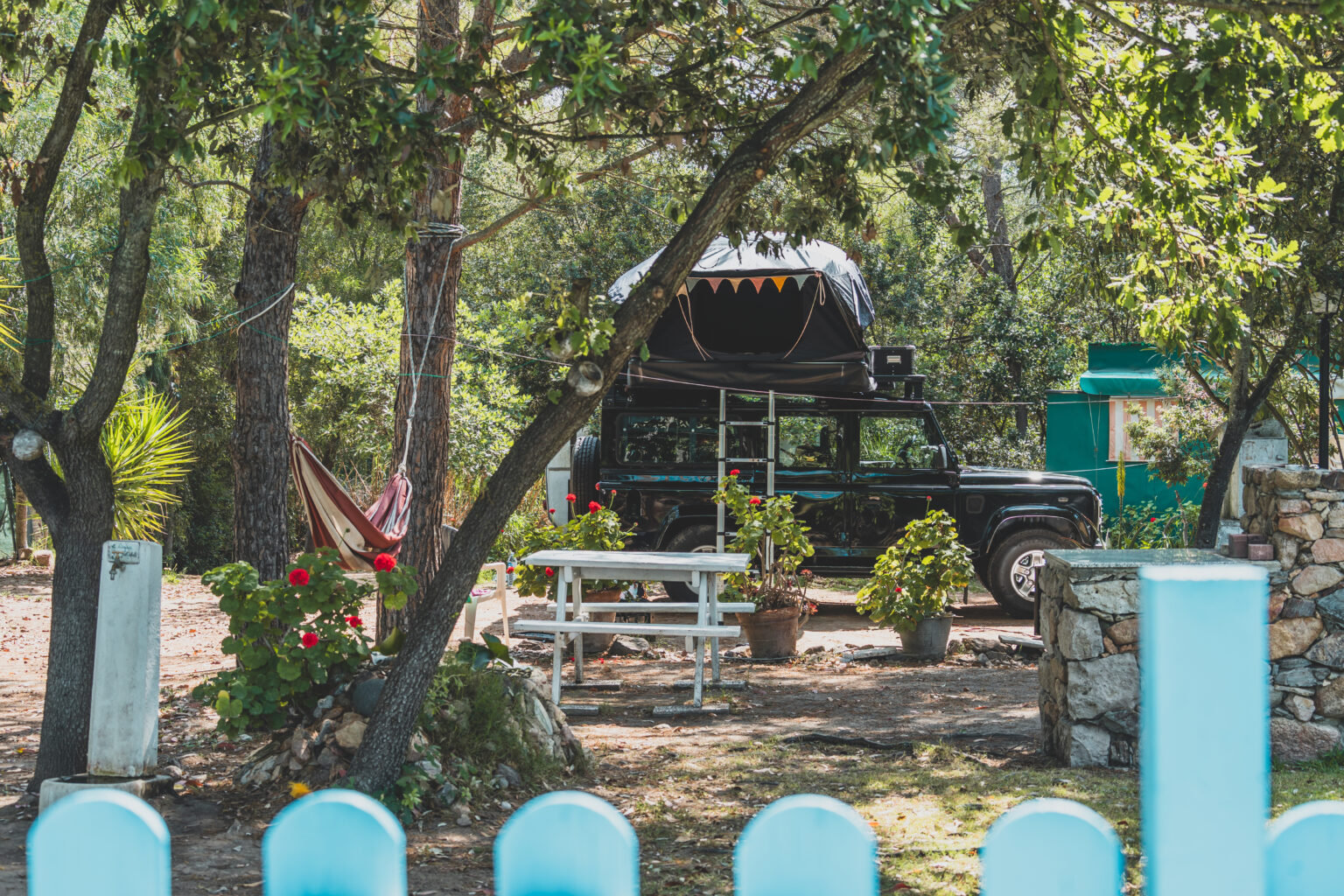
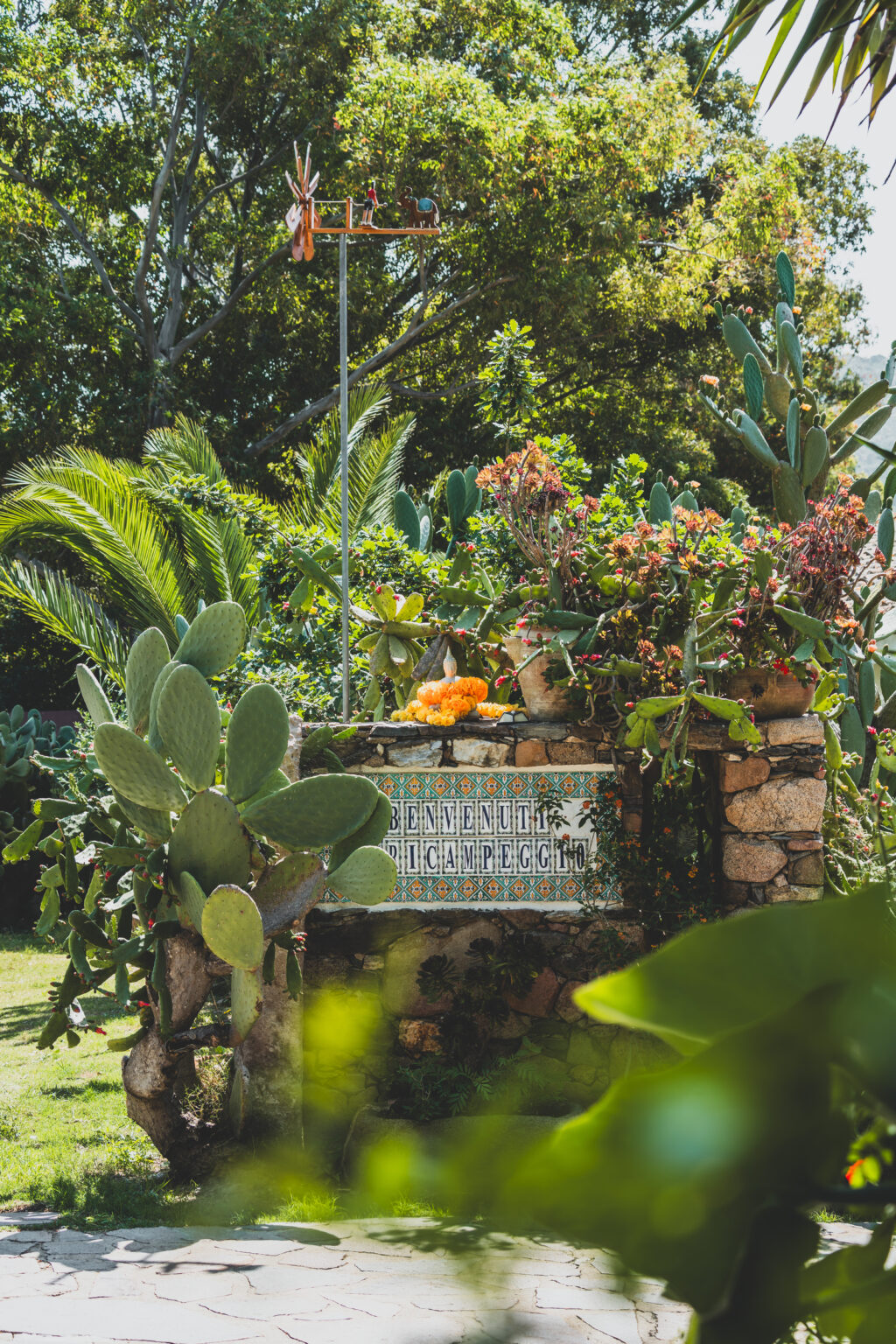

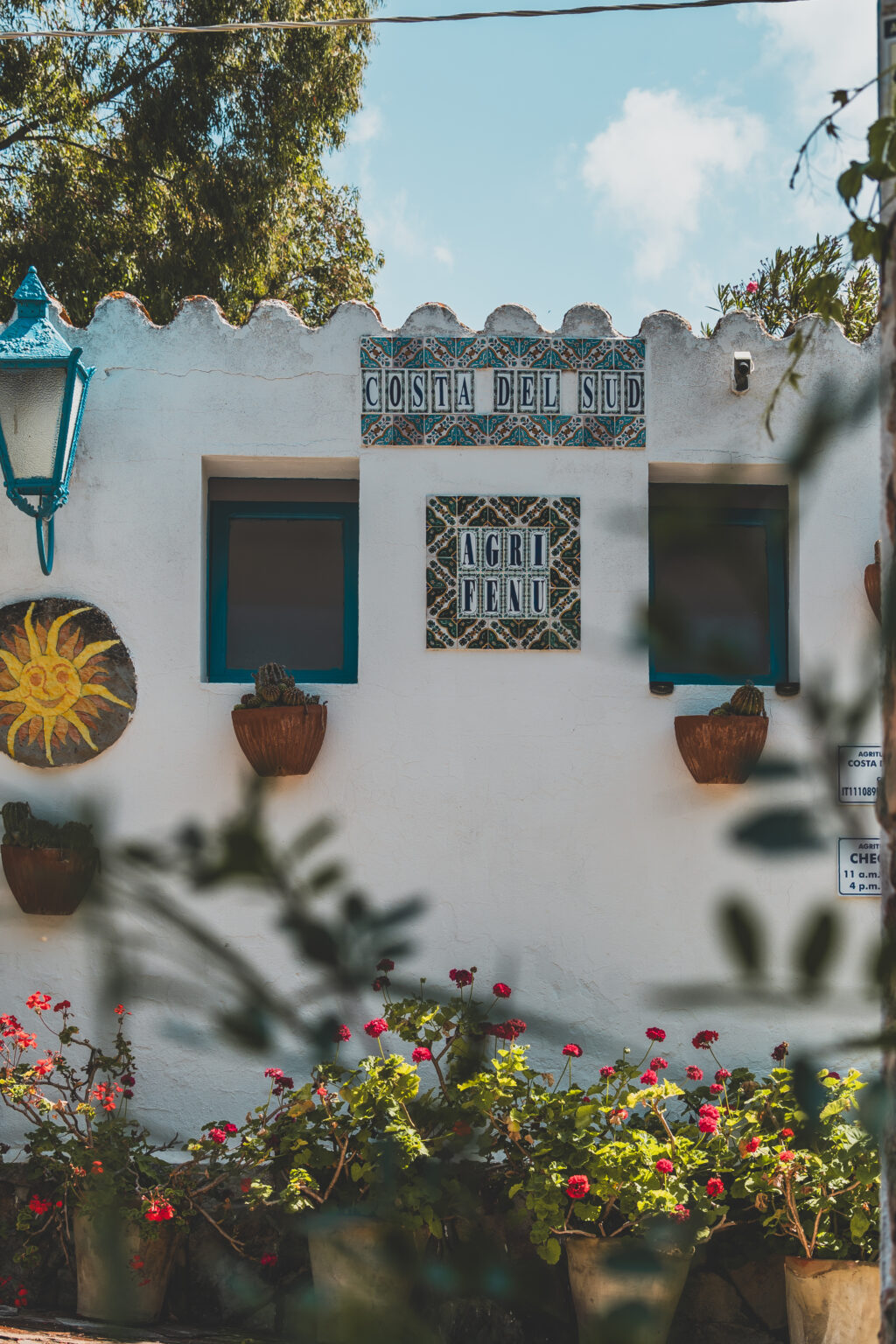

The Silent Village of Tratalias
We wandered into the deserted medieval village Tratalias in southwest Sardinia — a place that looks frozen in time, all narrow alleys, crumbling stone houses and a single, striking Romanesque church that still stands like a quiet centerpiece.
The church dates back to the early 13th century and is one of the finest examples of Sardinian Romanesque architecture you’ll find — the sort of building that keeps drawing your eye as you roam the empty streets.
The old village was largely abandoned in the mid-20th century after the area was altered by the creation of a nearby reservoir; many families moved to a newer settlement a few hundred metres away, leaving the original borgo behind.
Today parts of Tratalias have been lovingly restored and a small local museum helps keep the story alive, but much of it still feels wonderfully hollowed-out — perfect for wandering, framing photos, and letting your imagination fill the empty windows.
For us it was a slow, happy stop: Lovi racing down the alleys, shutters clacking in the wind, and the kind of quiet that makes every picture look a little cinematic. If you’re after vibes and photos, this forgotten village is oddly generous.




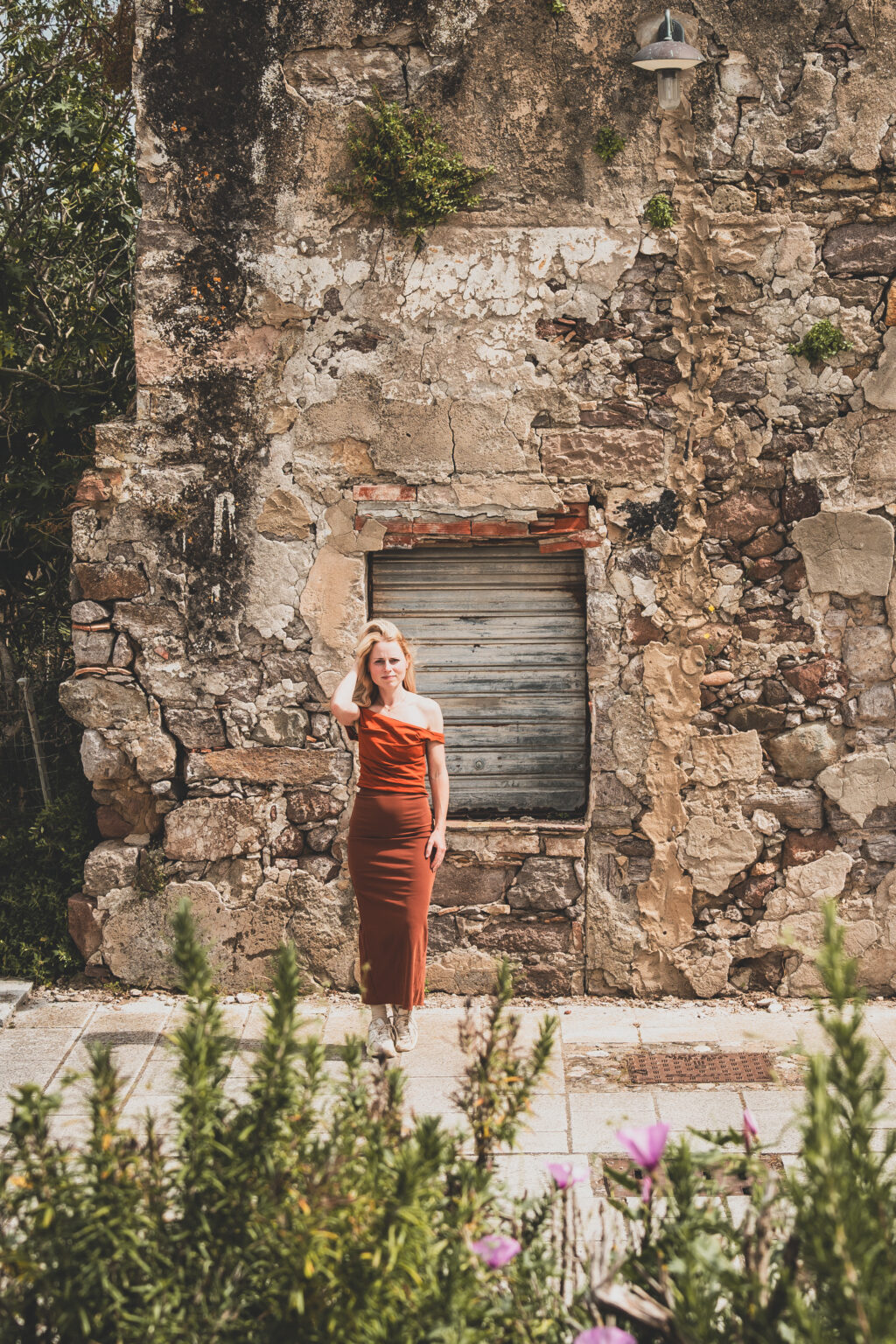
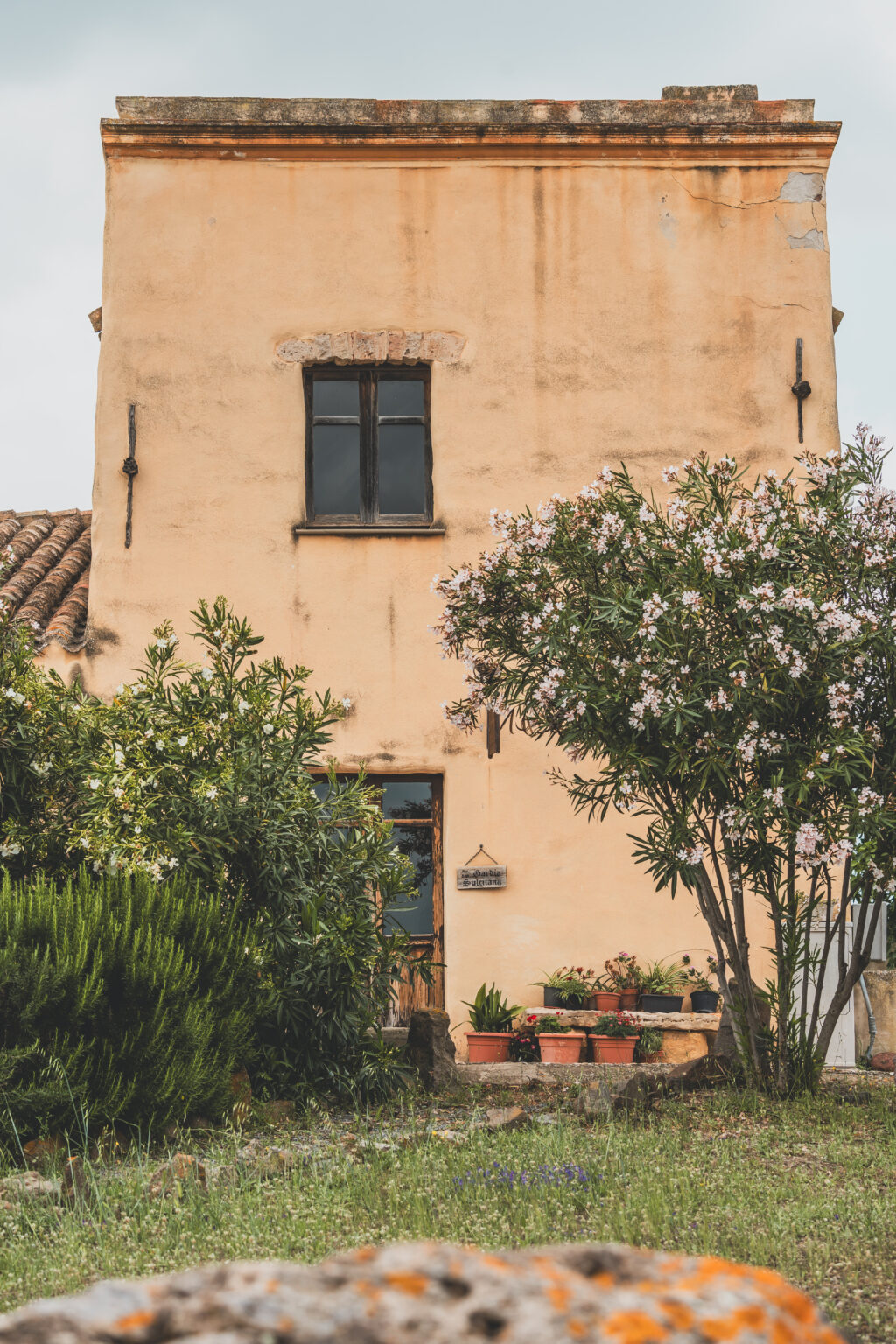
Paradise Heart
We found one of our best stays on a cliff — a place of creamy sunsets, wide sea views and an almost ridiculous feeling of freedom. From our pitch we could look straight across at the famous cliff-hung loading works of Porto Flavia, a daring piece of 1920s engineering carved into the rock to ship ore straight out to waiting steamers.
The whole coast here still wears its mining past on the skin: ruins, galleries and rust-stained walls sit like monuments to an industry that once pulsed through the region. The engineering marvel at the shoreline cut decades off ore-loading times and today forms part of the island’s mining heritage tours and geopark stories.
For us, the history only made the view richer. We’d cook, Lovi would run the edge of the cliff, and the light would turn everything soft and golden — sea, stone and the old harbor across the bay. It felt like being in a place that had both seen a lot and still offered total quiet: a rare mix of human history and raw coastal beauty.





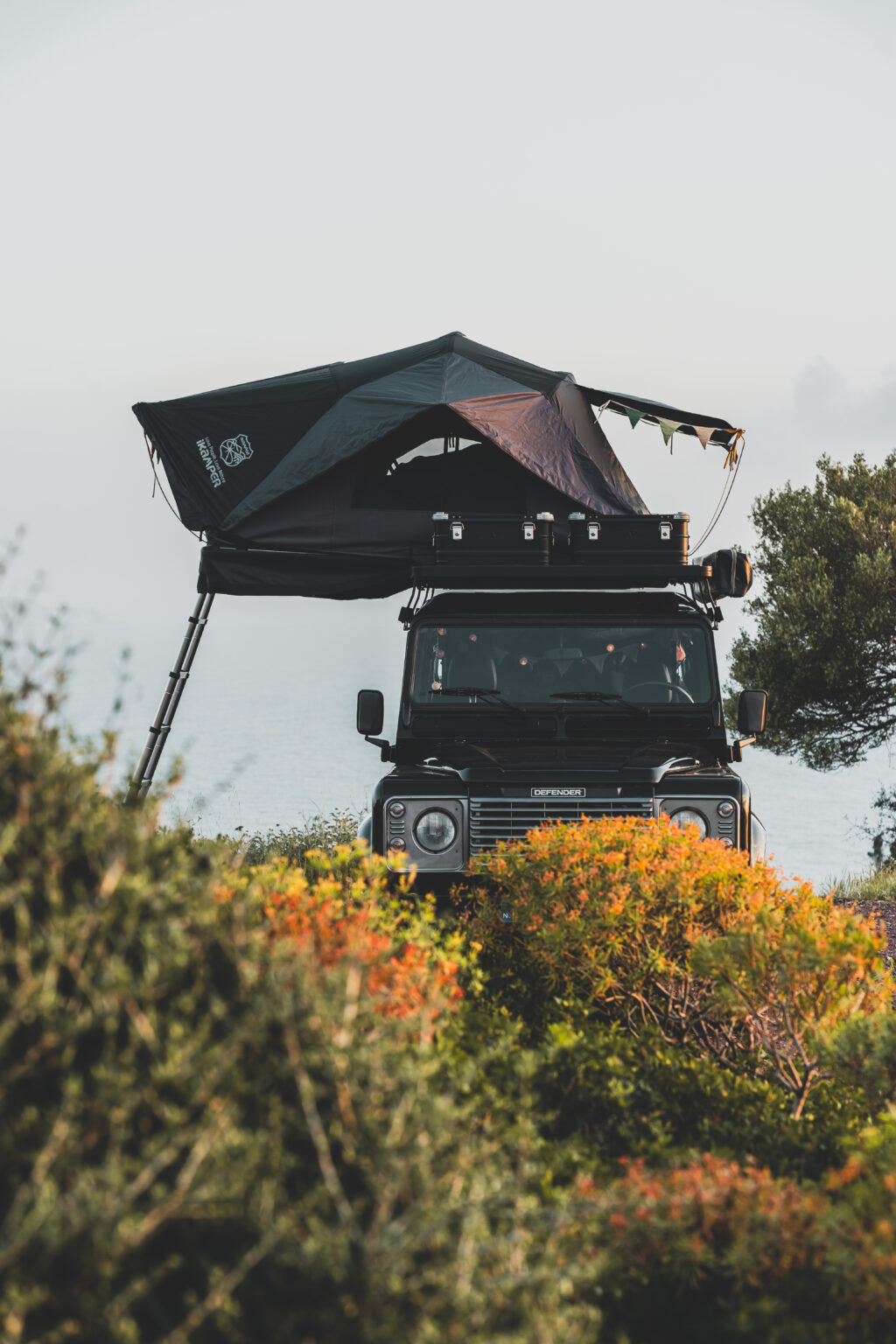


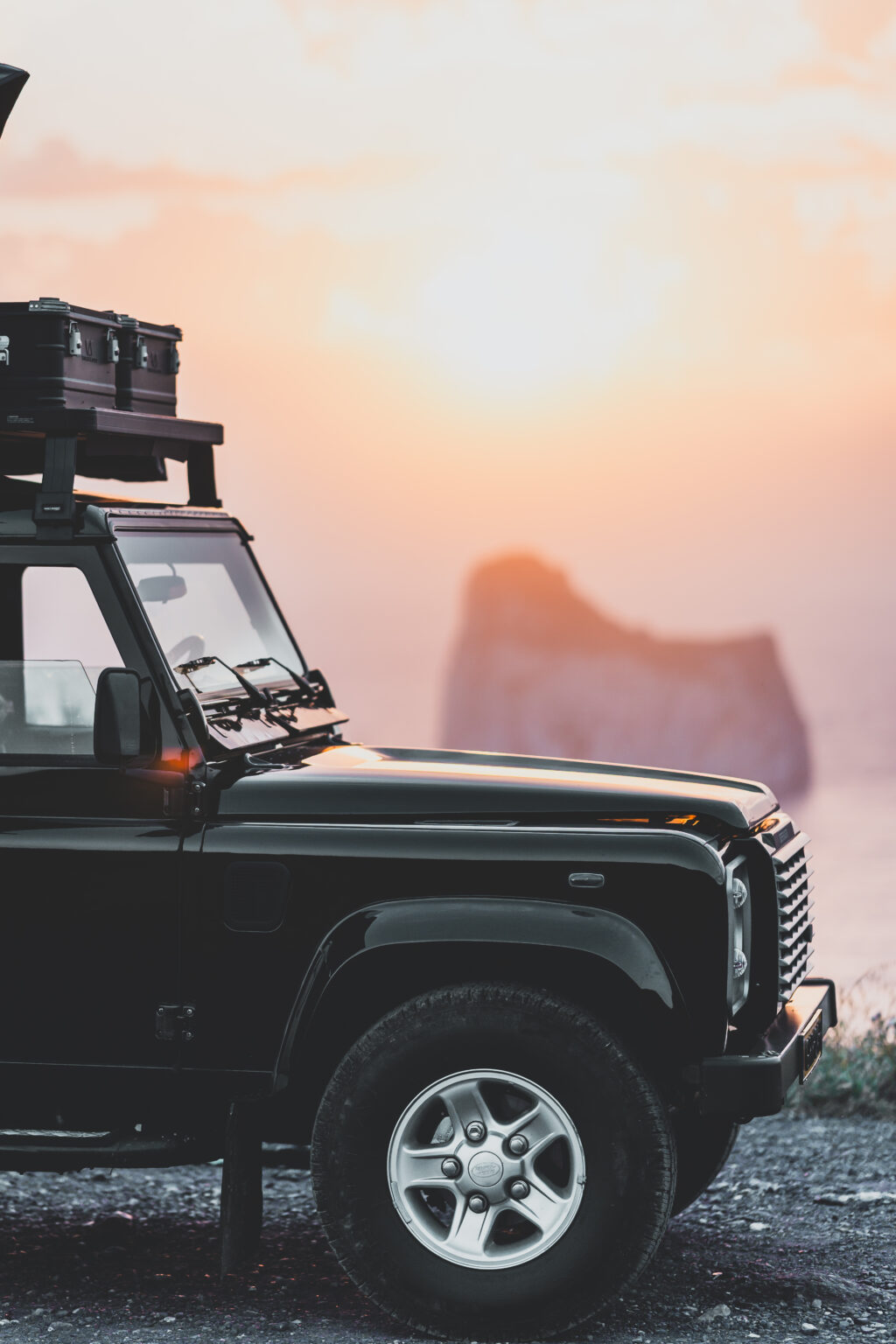



We pulled up for a closer look at the dramatic loading works across the bay — Porto Flavia, the daring cliffside harbor carved into the rock to ship ore straight out to sea. The structure you see today was built in 1923–24 from a design by engineer Cesare Vecelli; two long galleries, carved into the cliff, used an electric rail and gravity-fed reservoirs to move ore down to an extendable conveyor and into waiting ships — a real industrial miracle for its time.
Those cliffs weren’t born for mining yesterday: the Masua area has been mined since the 17th century, and the whole coastline still wears traces of that history — ruined washhouses, rail traces, and the outlines of miner villages clinging to the slopes. Porto Flavia simply sped the whole operation up, slashing loading times and turning the coast into a humming export hub.
Driving or walking up close, you can still make out the old train and conveyor lines and imagine the rope-and-steel choreography that sent ore from mountain to ship — an impressive piece of engineering that feels perfectly at home against the wild sea. Guided visits sometimes take you into the tunnels and explain the whole system; it’s the kind of place where view and history come together in one powerful frame.





Our Little Bay
We spent a day at a wild, cliff-hugged beach just around the corner from Porto Flavia — the kind of place where mining ruins meet perfect sand and the sea looks impossibly clear. The main cove is long and sheltered, backed by dunes and high rock walls that give it a private, fjord-like feel; it’s also part of the old mining coast, so you’ll spot ruined buildings and tunnels tucked into the cliffs.



There’s a smaller, very private caletta hidden to the right of the main beach. To reach it you climb across a few rocks and slip through a low cave/arch cut into the cliff — a tiny, theatrical scramble that feels like a secret handshake with the shore. On calm days that little inlet is a still pocket of water and sand where you can feel alone with the sea. (Pro tip: wear shoes for the rock hop.)




Rust & sky
We could’ve joined a guided tour (and yes, some of them are brilliant) — but where’s the fun in that when you’ve got a Land Rover? So we pulled up Google Earth, poked around the map, and chased the roads the guides don’t take. Driving the dustiest tracks is half the point: creaky bridges, stony ruts, and sudden views that make you grin.
We found a perfect one beside an old mining shaft — an head frame hunched above the site like a rusted crown. We parked, stretched our legs, and let the place do its quiet, cinematic thing: bleached concrete, empty windows, and the ocean murmuring somewhere beyond. It was moody, slightly eerie, and utterly unforgettable.
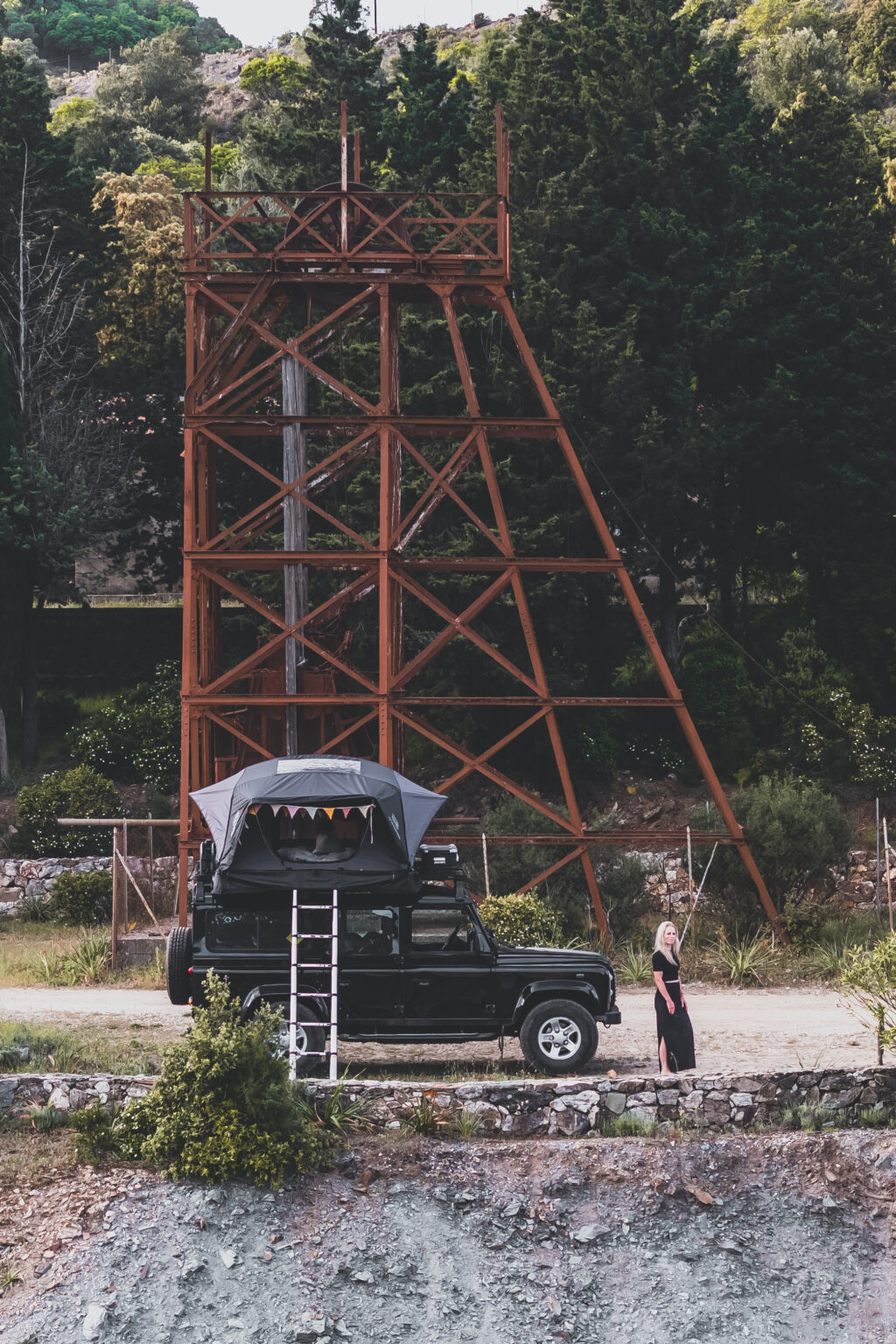

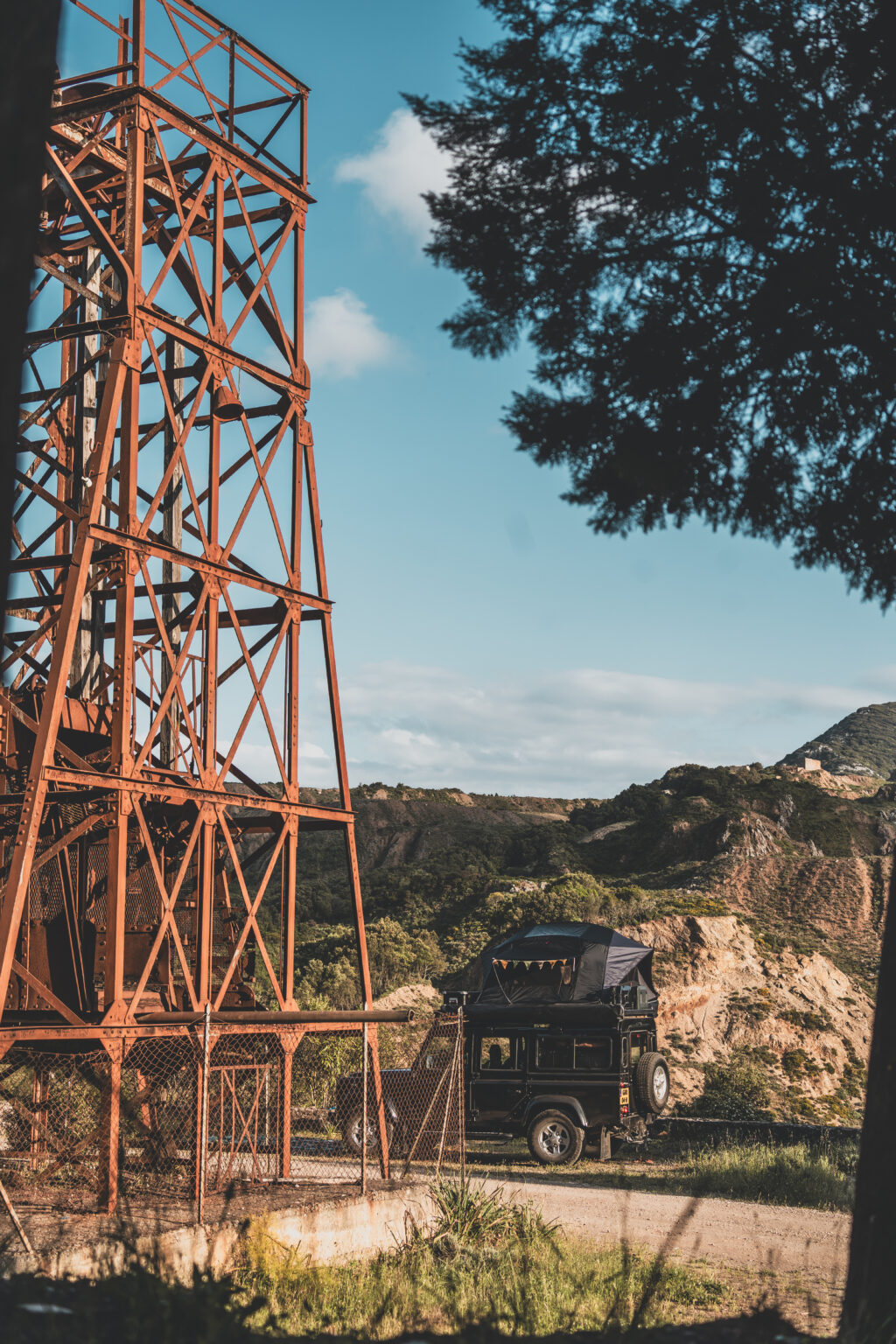
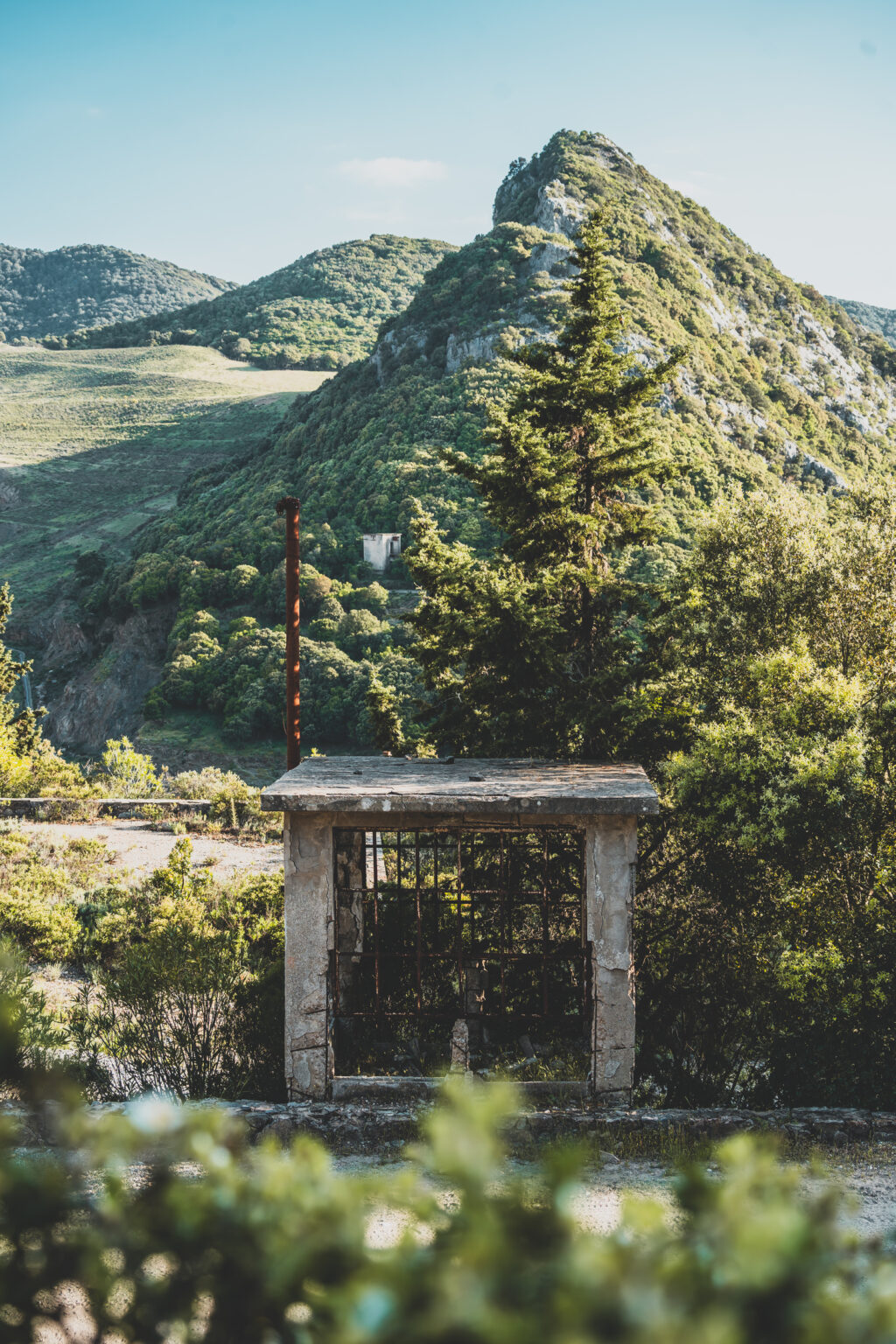
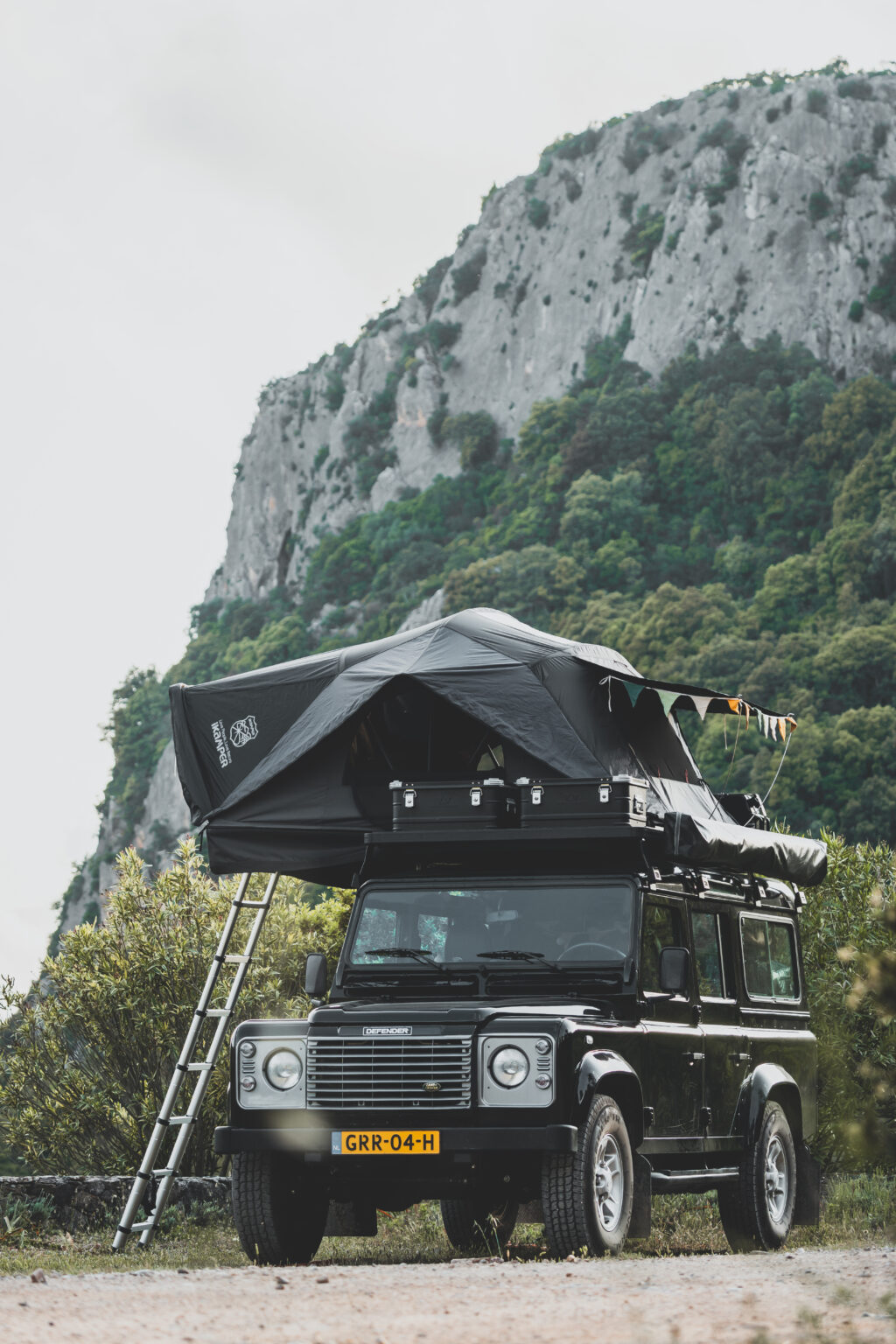
Handpicked Hidden-Gem spot
'Rust & sky''
- Old elevator frame watching over our little camp.
The next morning we laced up and wandered the site properly — daylight softened the edges of the concrete skeletons and made the whole place feel less like a ghost set and more like an accidental sculpture park.
Quick note on safety & access: abandoned mines and factory ruins can be extremely dangerous (unstable floors, hidden shafts, toxic dust). Always check access rules, respect private property, and avoid entering condemned buildings. We admired the machinery from a safe distance, stayed in daylight, and treated the place with curiosity — not recklessness.
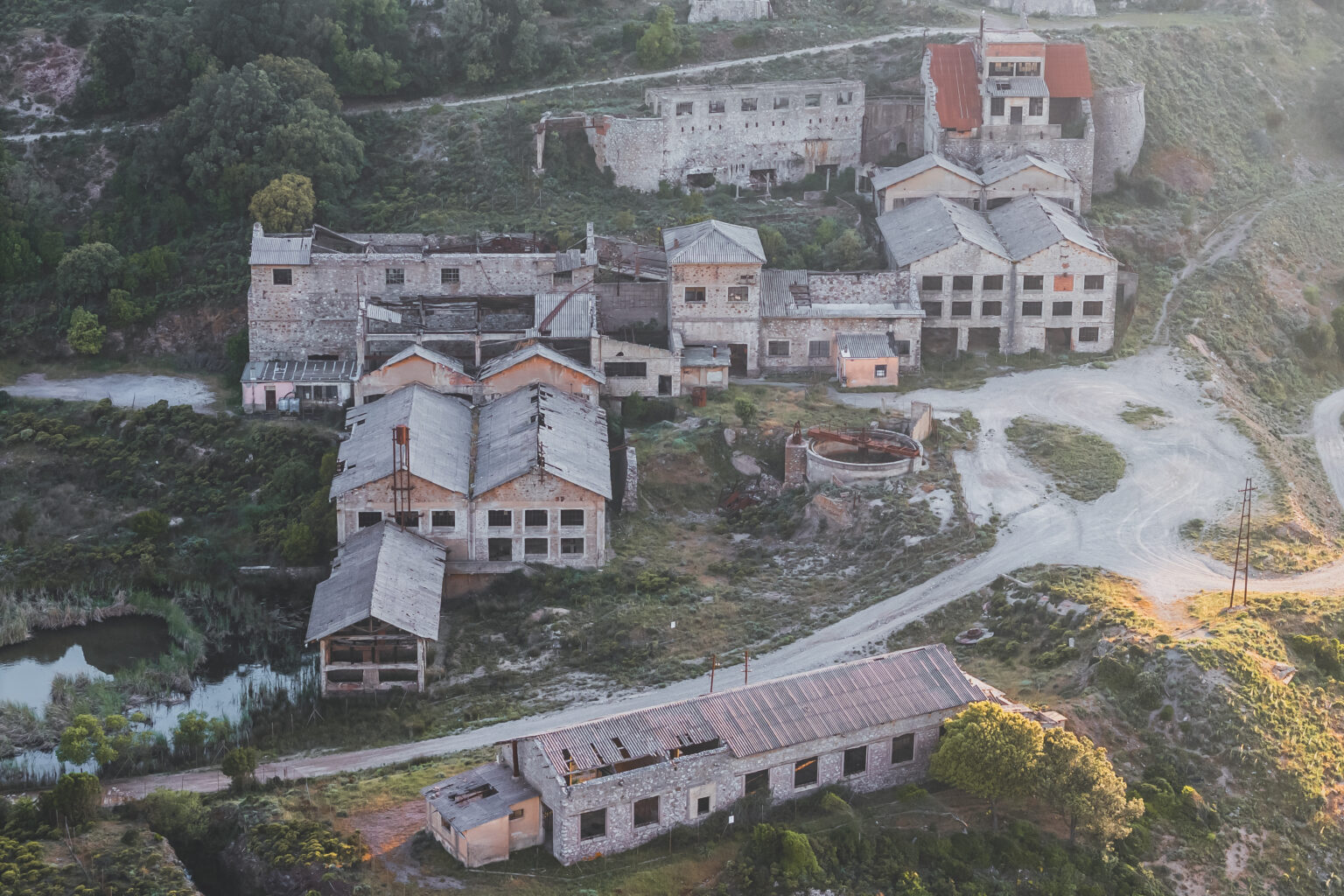

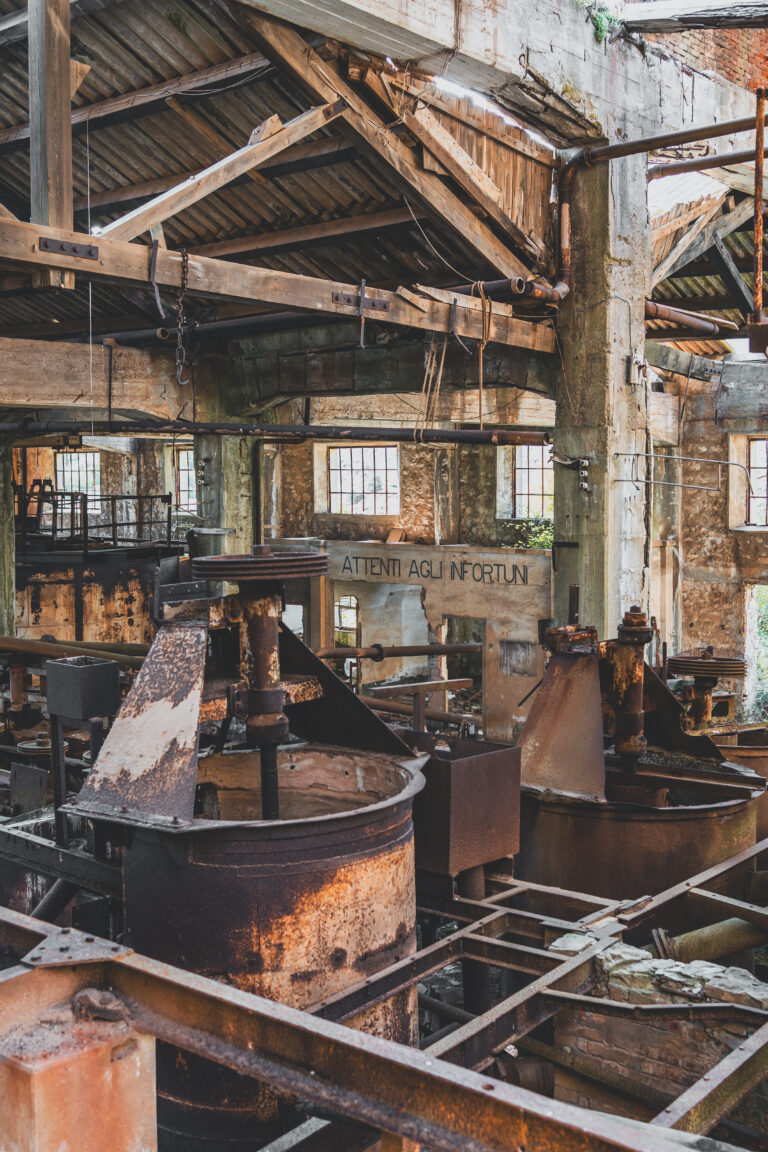

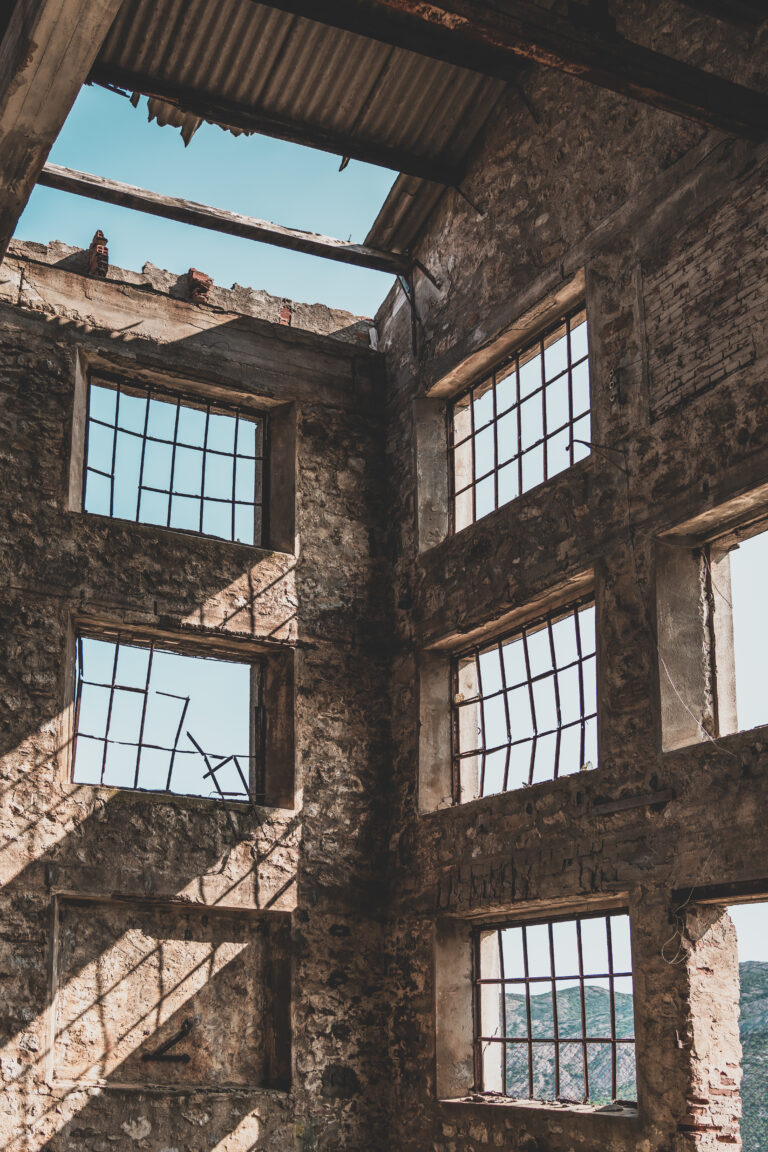
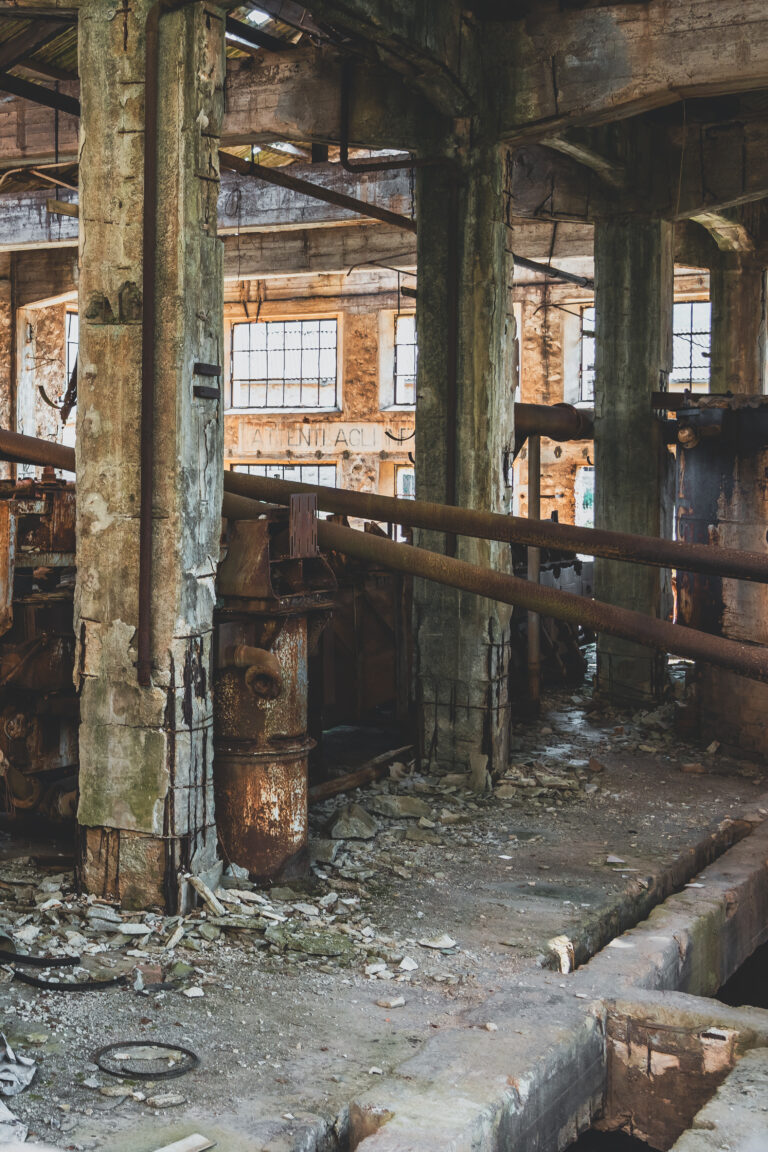
Valley of Forgotten God
We stumbled upon a quiet gem tucked into Sardinia’s mining heartland—the Temple of Antas. This isn’t just a Roman ruin; it’s a layered shrine born from millennia. Originally a Nuragic sanctuary, a Punic temple rose around 500 BC for the god Sid Addir, and later Romans built their version under Augustus, later restoring it under Caracalla. The broad Ionic columns standing today were excavated and re-erected during a restoration in the 1960s.


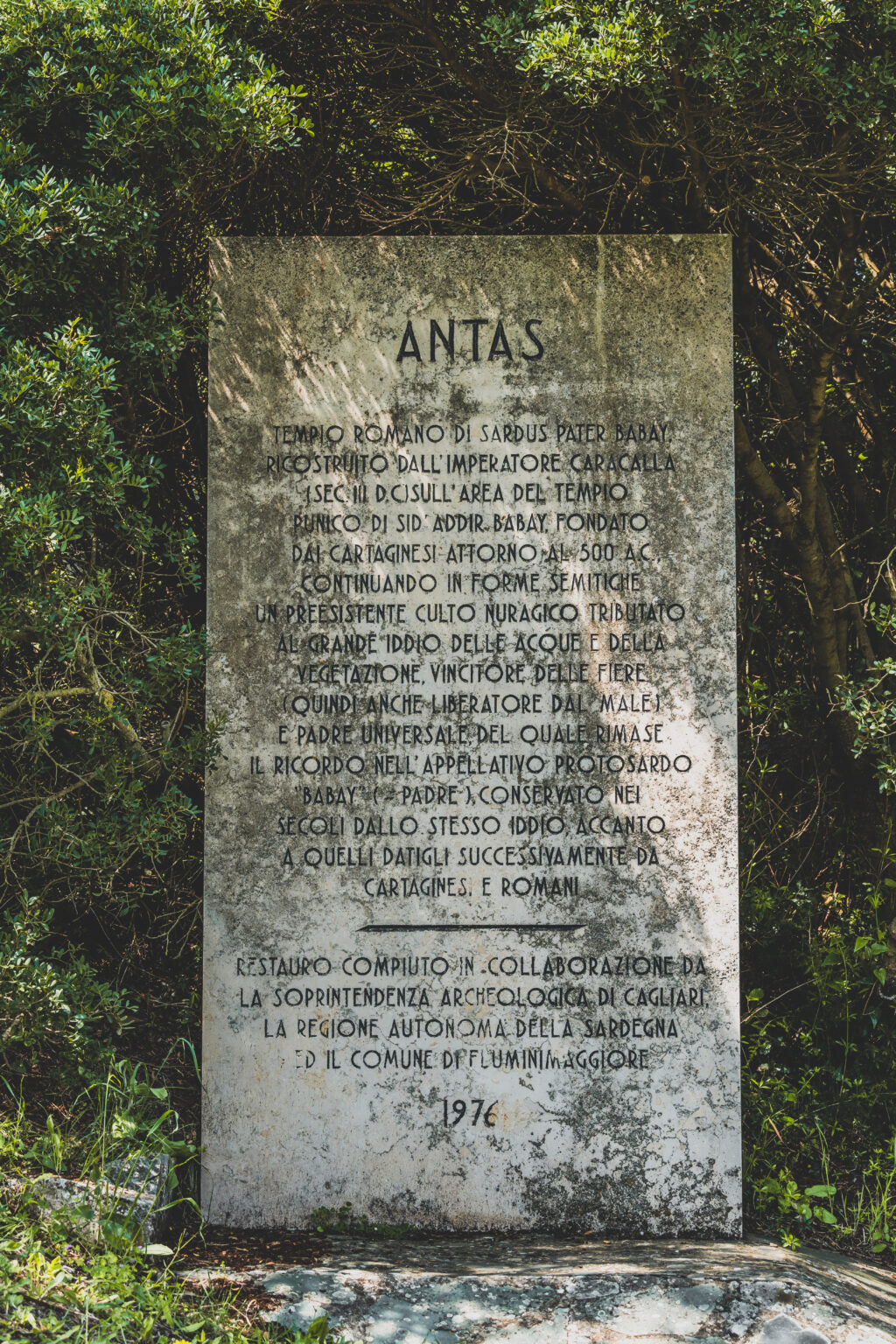
Into the Geopark Veins
We began winding our way down toward the SP4. We knew this wasn’t going to be a quick drive—it’s the kind of route that asks you to slow down, let the gravel crunch under your wheels, and let curiosity steer. The SP4 cuts straight through the Parco Geominerario Storico e Ambientale della Sardegna, a UNESCO-recognized geopark that preserves centuries of mining history and the raw geology that made it possible.
This park is not just about abandoned shafts and rusting machinery; it’s a living archive. The area was one of the most important mining districts in Europe, worked since prehistoric times for lead, zinc, and silver. Today, the geopark protects not only industrial archaeology but also unique rock formations, Mediterranean scrubland, and valleys where nature has slowly reclaimed the scars of mining.
Driving here feels like threading through veins of earth—rust-colored cliffs on one side, the sea flashing in the distance on the other. Each curve hides something: a forgotten headframe silhouetted against the sky, a quarry now filled with emerald water, or a ghost village where miners once lived. The SP4 isn’t a highway; it’s a storyline, and every stop along it adds another chapter.
We decided to take it slow, stop often, and let the day unfold in this surreal mix of wilderness and history.




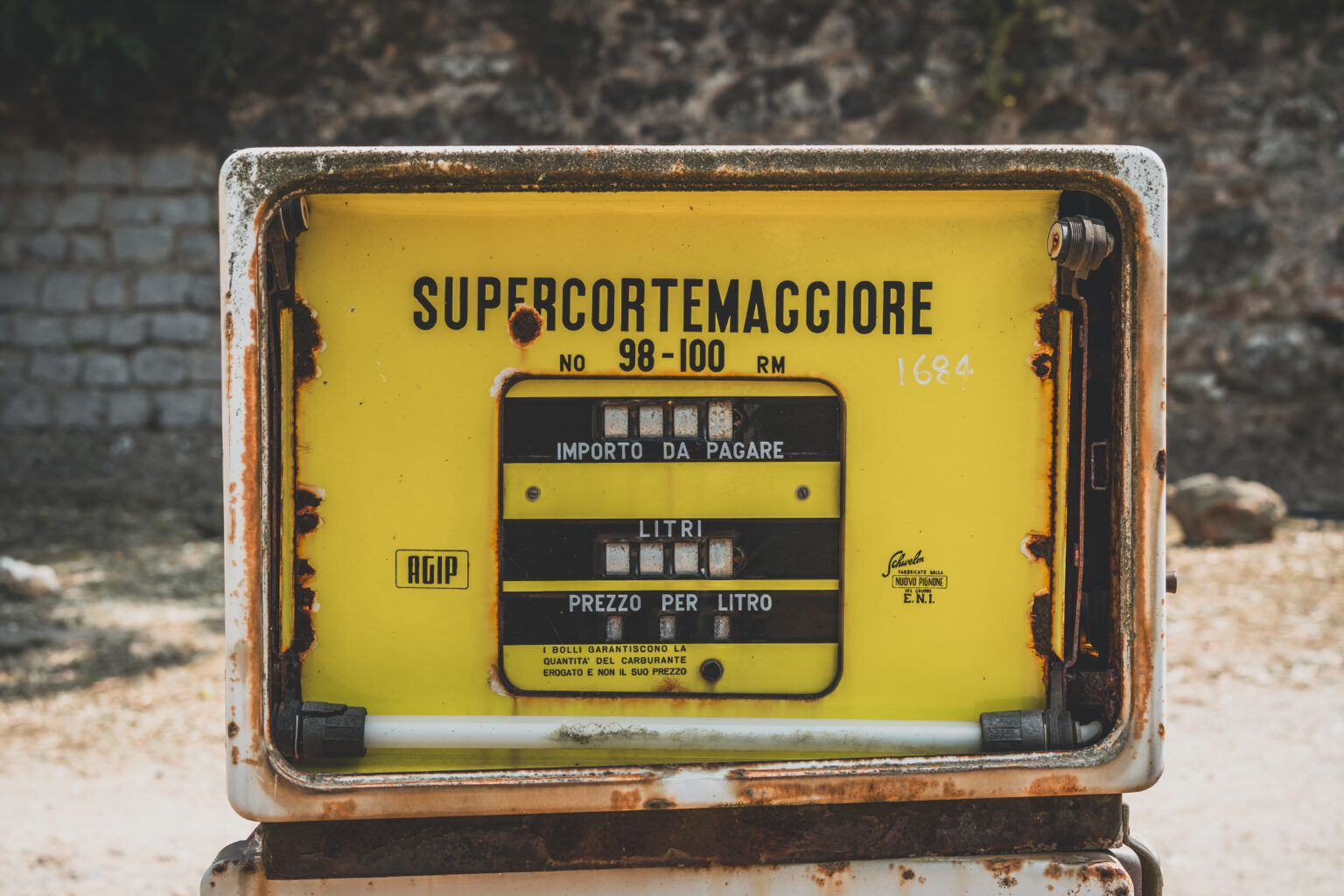

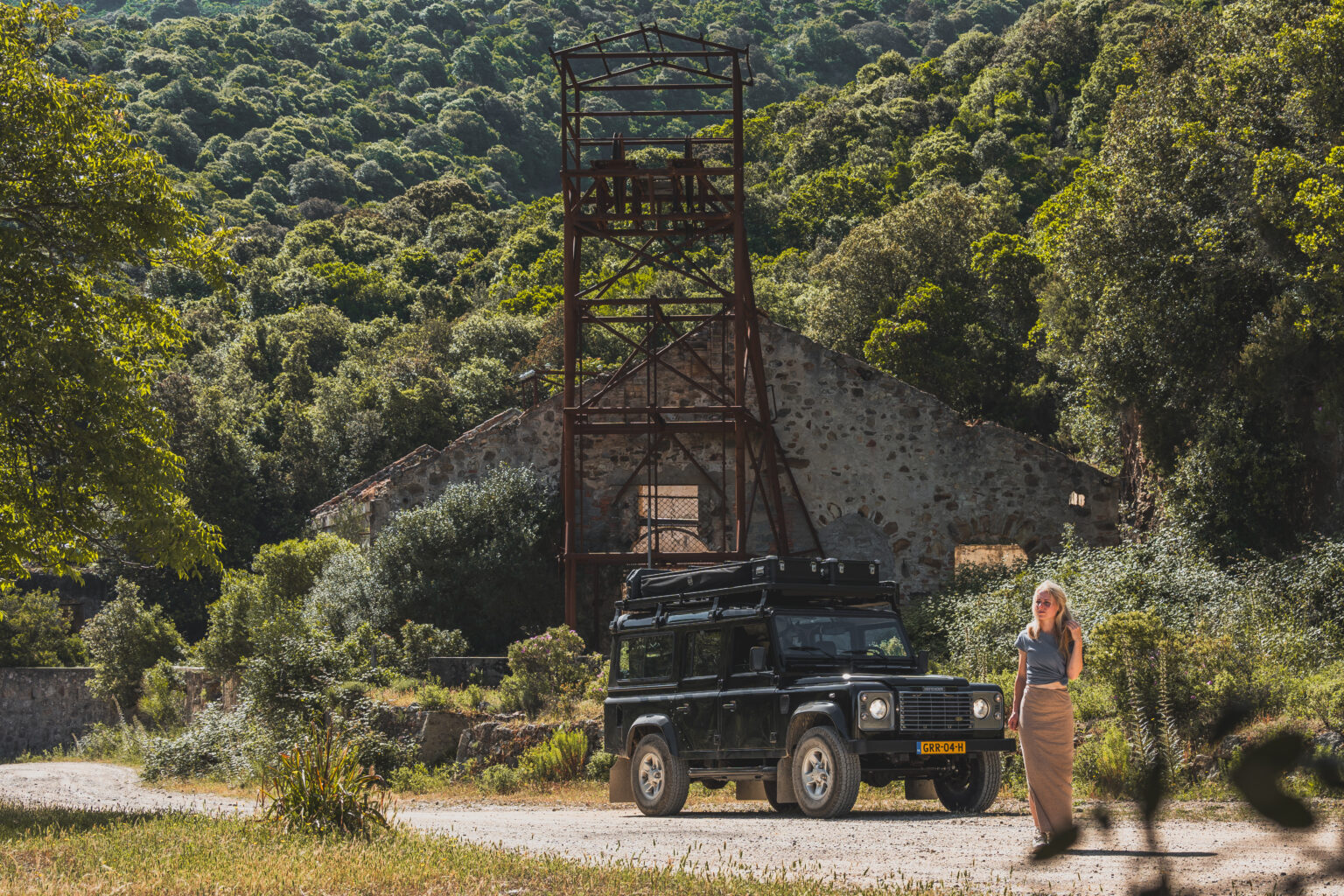




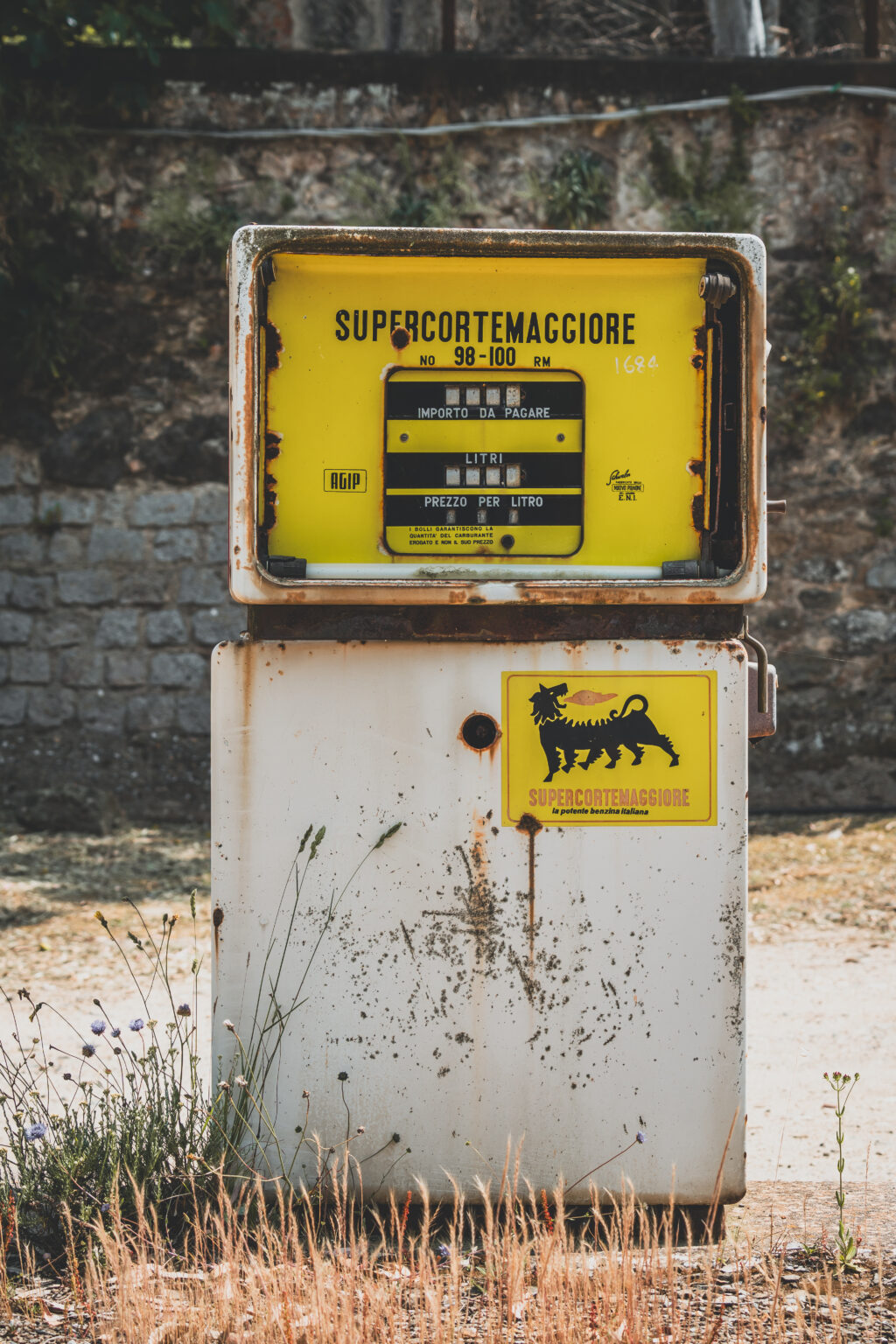
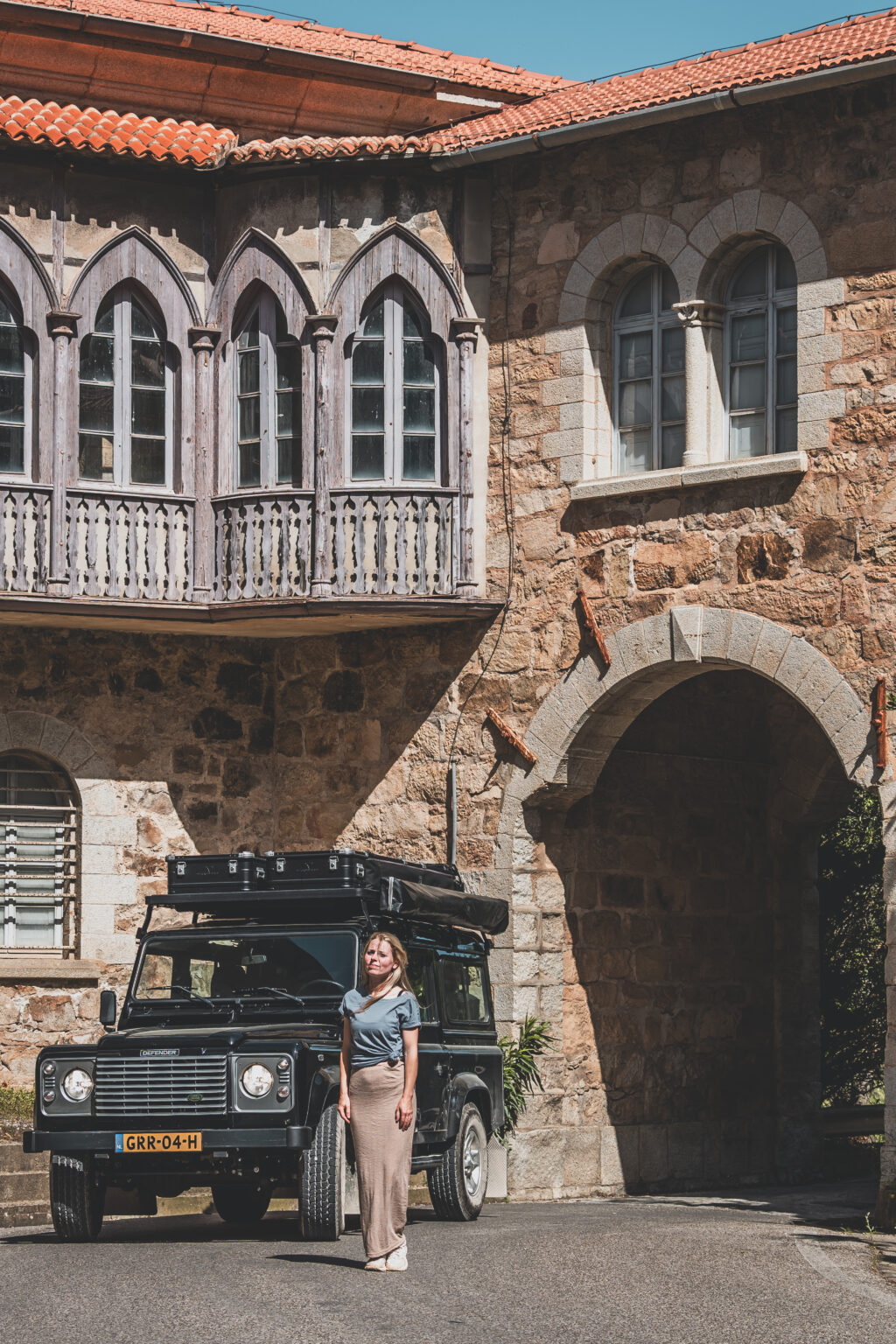


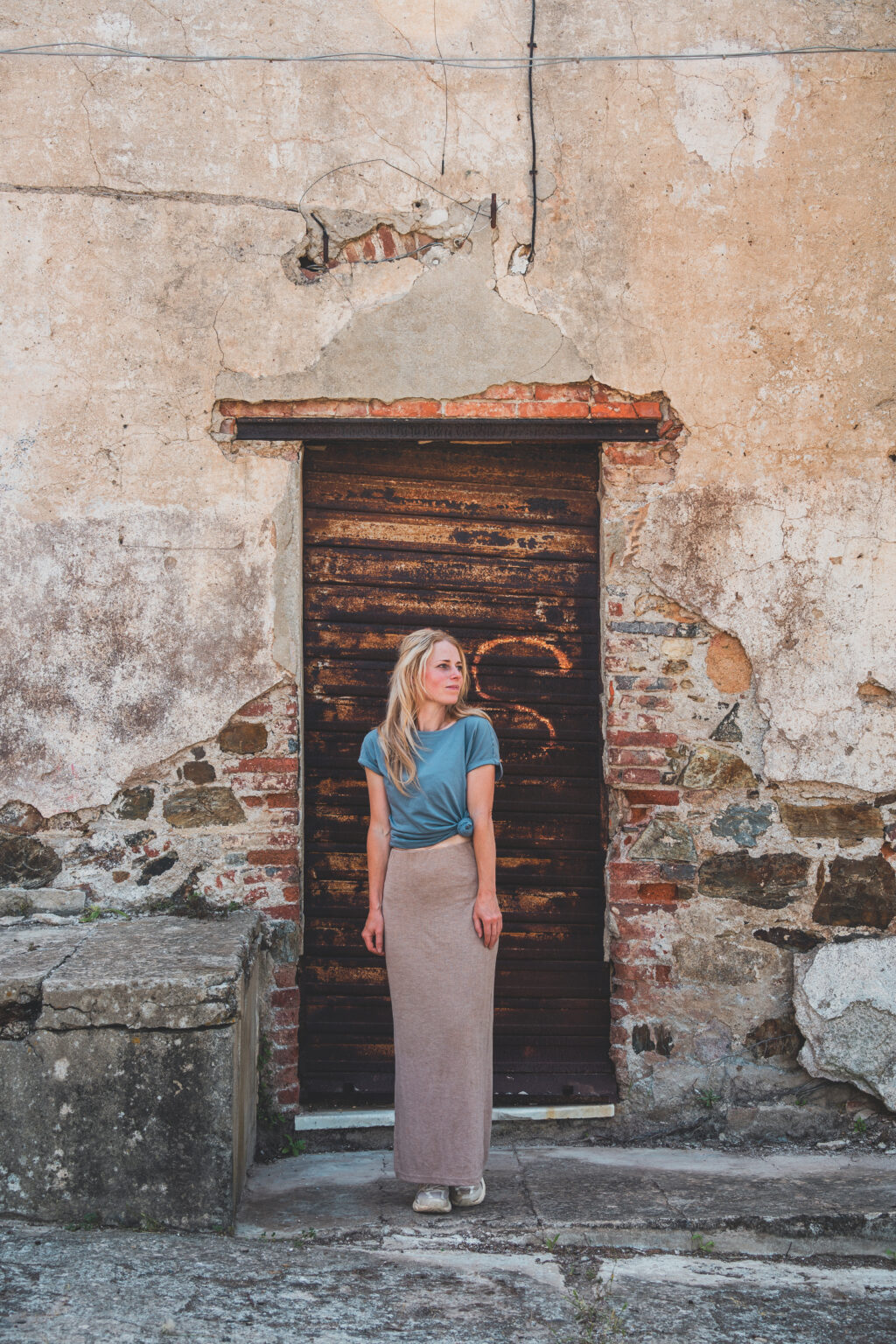
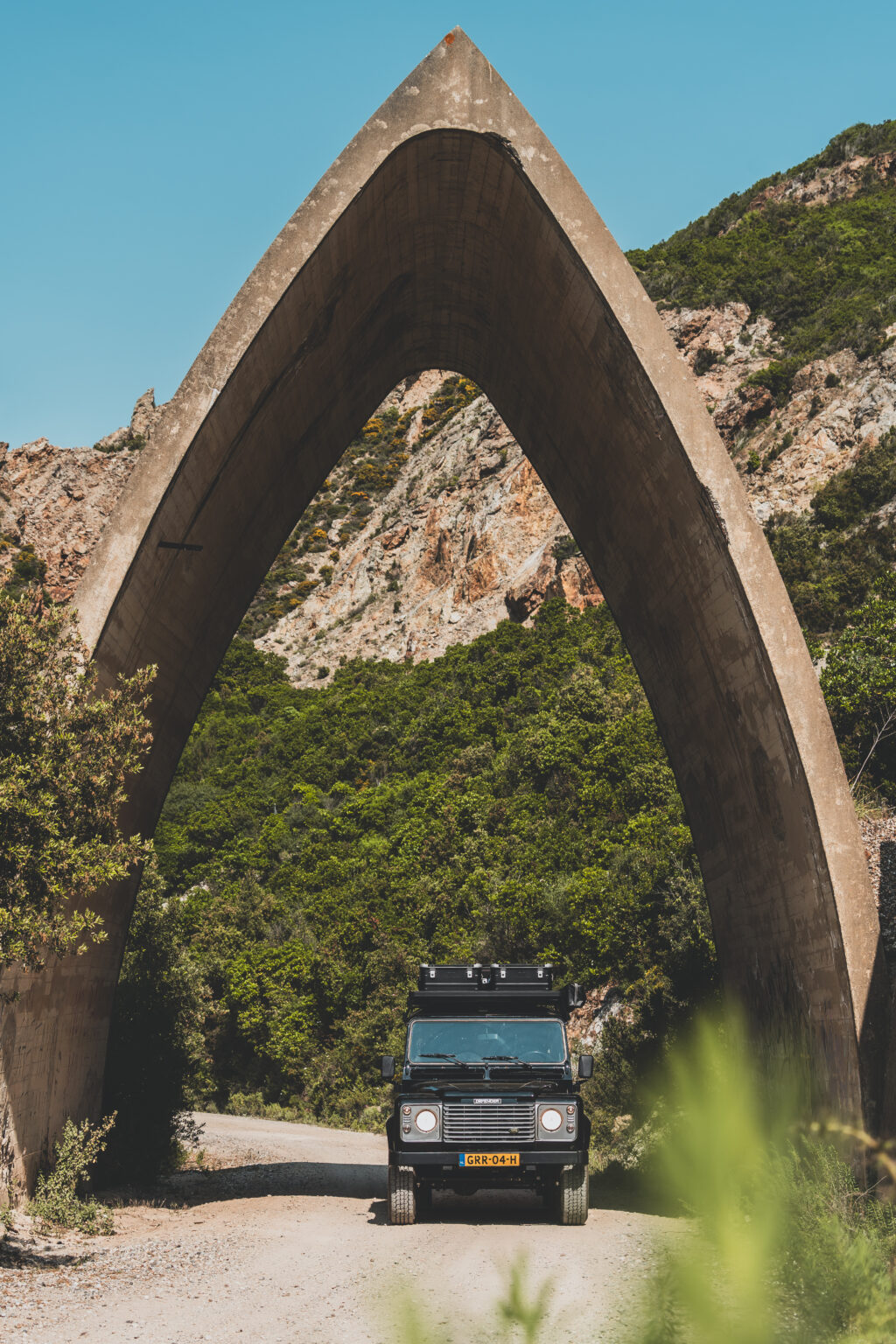

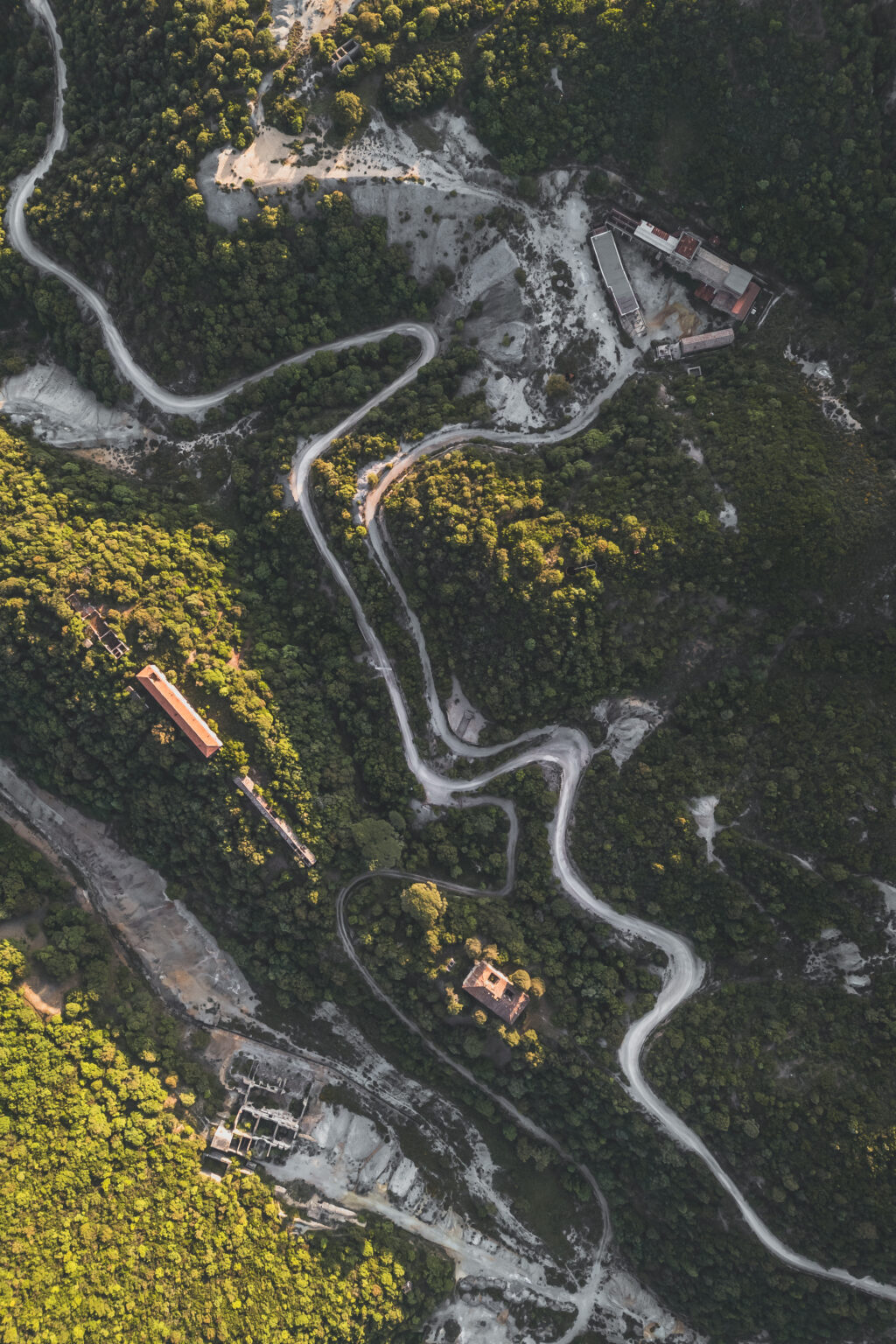

Pozzo S. Mescora
We followed a faint track off the main drag and stumbled upon a site that felt both cinematic and solemn: the elevator shaft of a once-working mining operation, long since silenced. No dramatic headframe anymore—just the skeletal structure of an old elevator that once plunged deep into the earth, carrying miners and ore into the mountain’s veins.
We circled the building and tracing the rusted supports with our eyes. In the quiet, you could almost hear machinery’s ghost echo through the air. It’s a place where geometry meets memory, and the land keeps guard over human stories from another era.


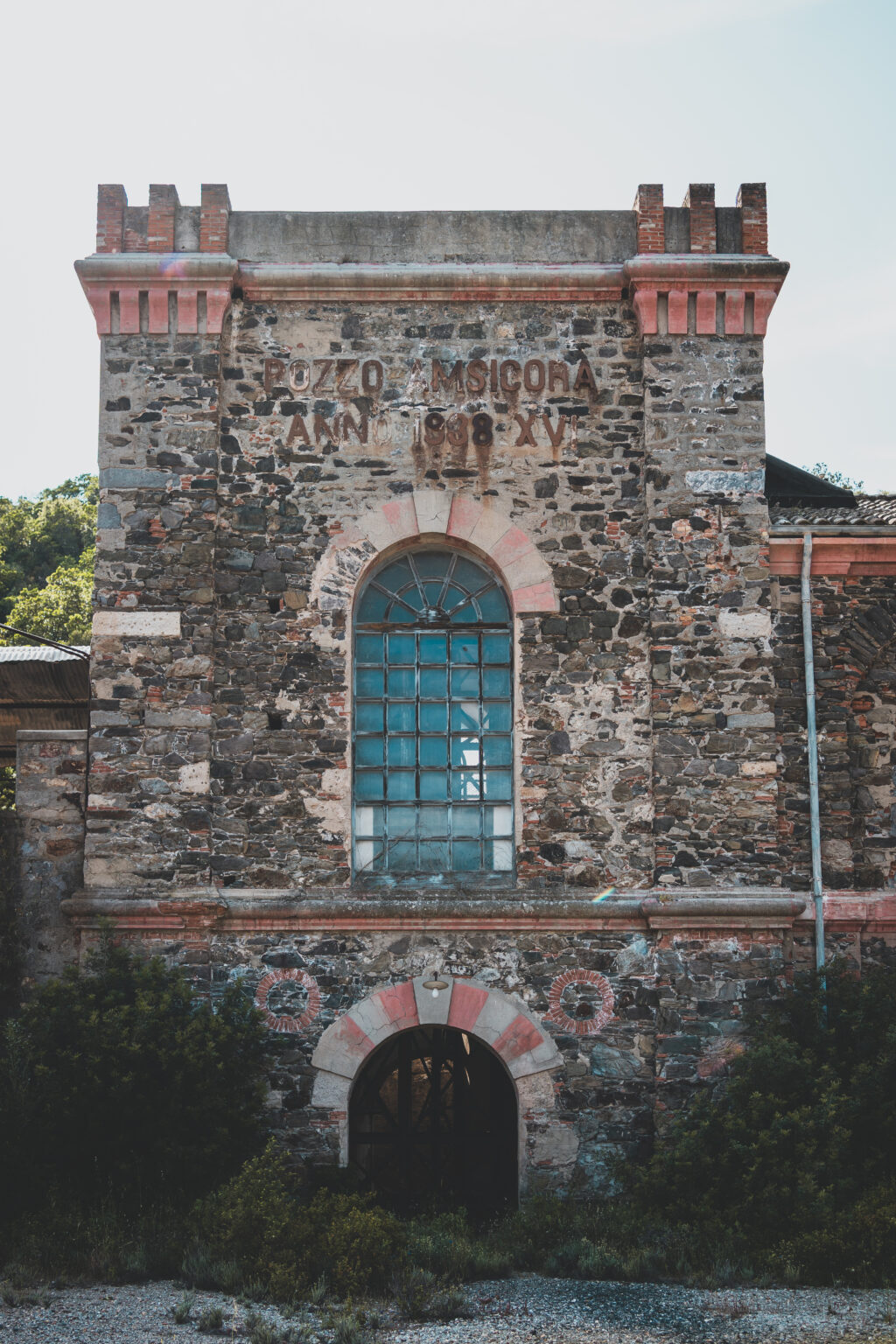
Frames of Silence
That night we found ourselves standing right on the bones of Sardinia’s mining past. The site still carried its main structures — stark silhouettes of concrete and steel — yet time had softened the edges, giving the whole place a surreal calm.
Our camp was tucked in private, sheltered from the wind, with the scenery wrapping around us like a movie set. There was something cinematic about it: the way the light hit the old walls, the silence echoing between empty frames, the feeling of being completely alone in history.
It was one of those places where words don’t do justice. Better to let the pictures speak.


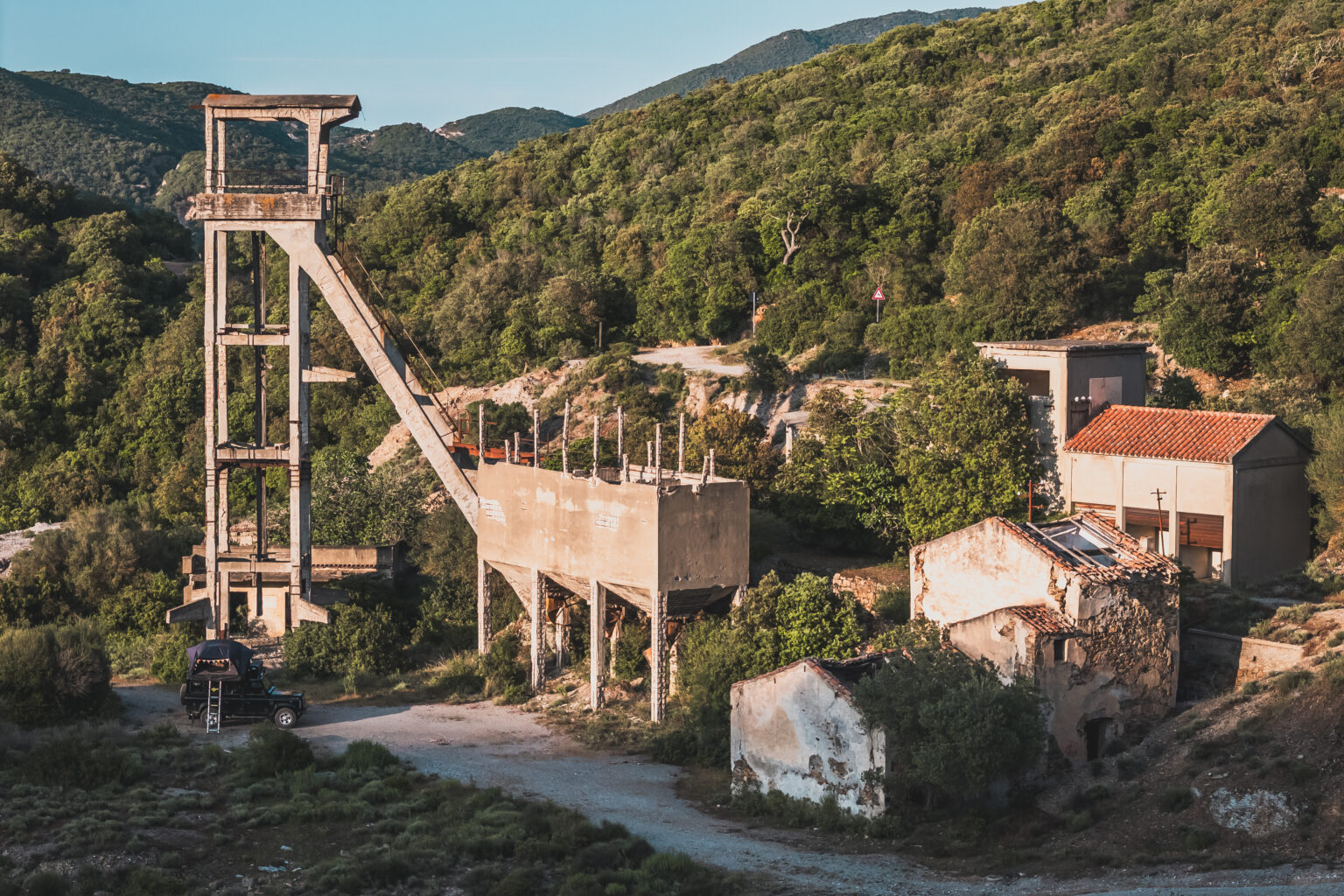


Pozzo Fais
A little further along our route, tucked into the wild heart of Montevecchio Ponente, we found Pozzo Fais — part of the old Casargiu mining concession. Back in the late 1800s and early 1900s, this shaft was the main extraction point for lead and zinc, drilled nearly 208 m into the earth across six levels.
Today, it’s framed by tangled vines and shaded by pines, with collapsed stone buildings and whispering wind filling the spaces where workers once labored. Walking around feels like leafing through a fragile chapter of industrial history — rust and silence where metal and earth once met in purpose. It’s the kind of place where being quiet—and present—is the best way to listen to what the landscape wants to tell you.
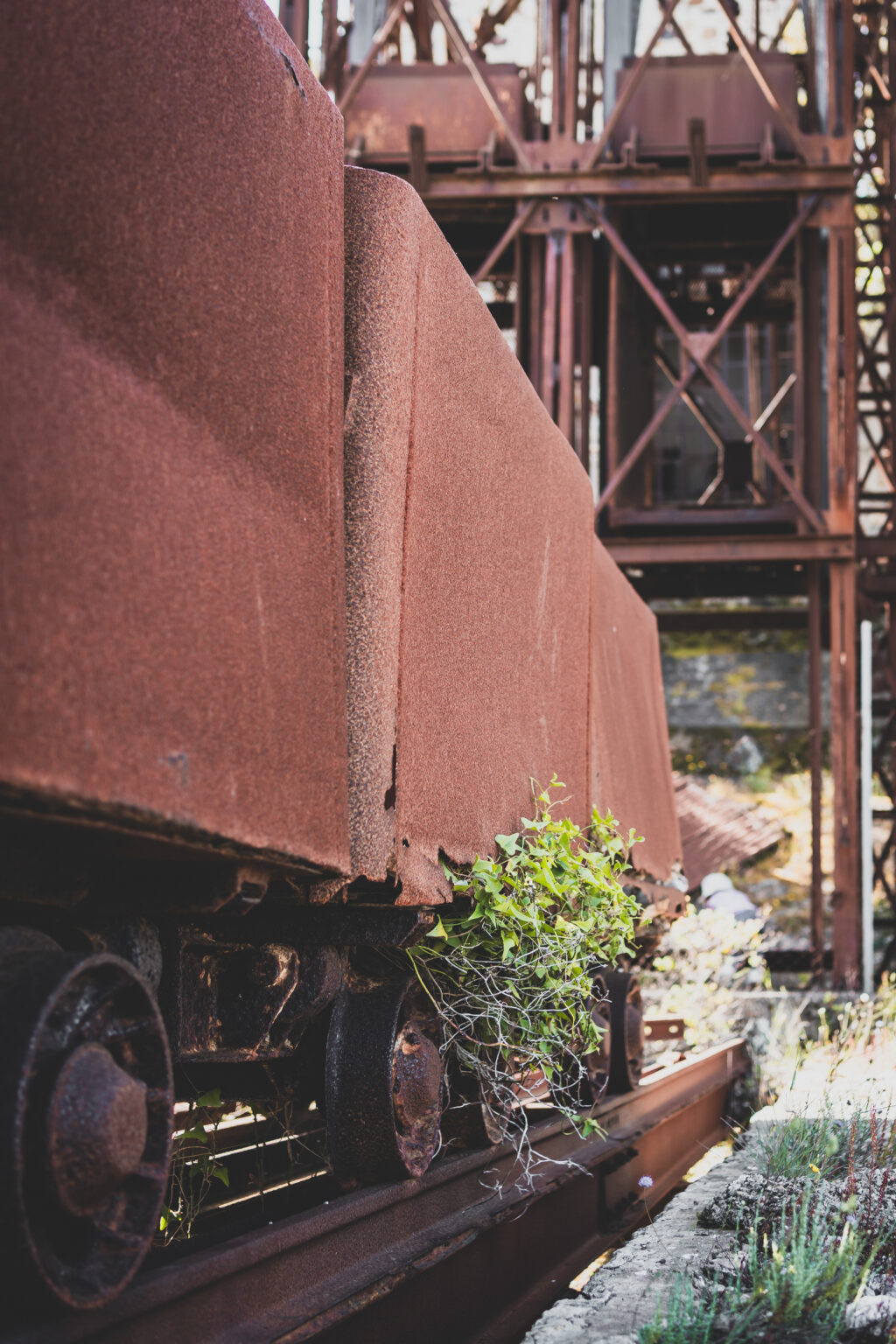
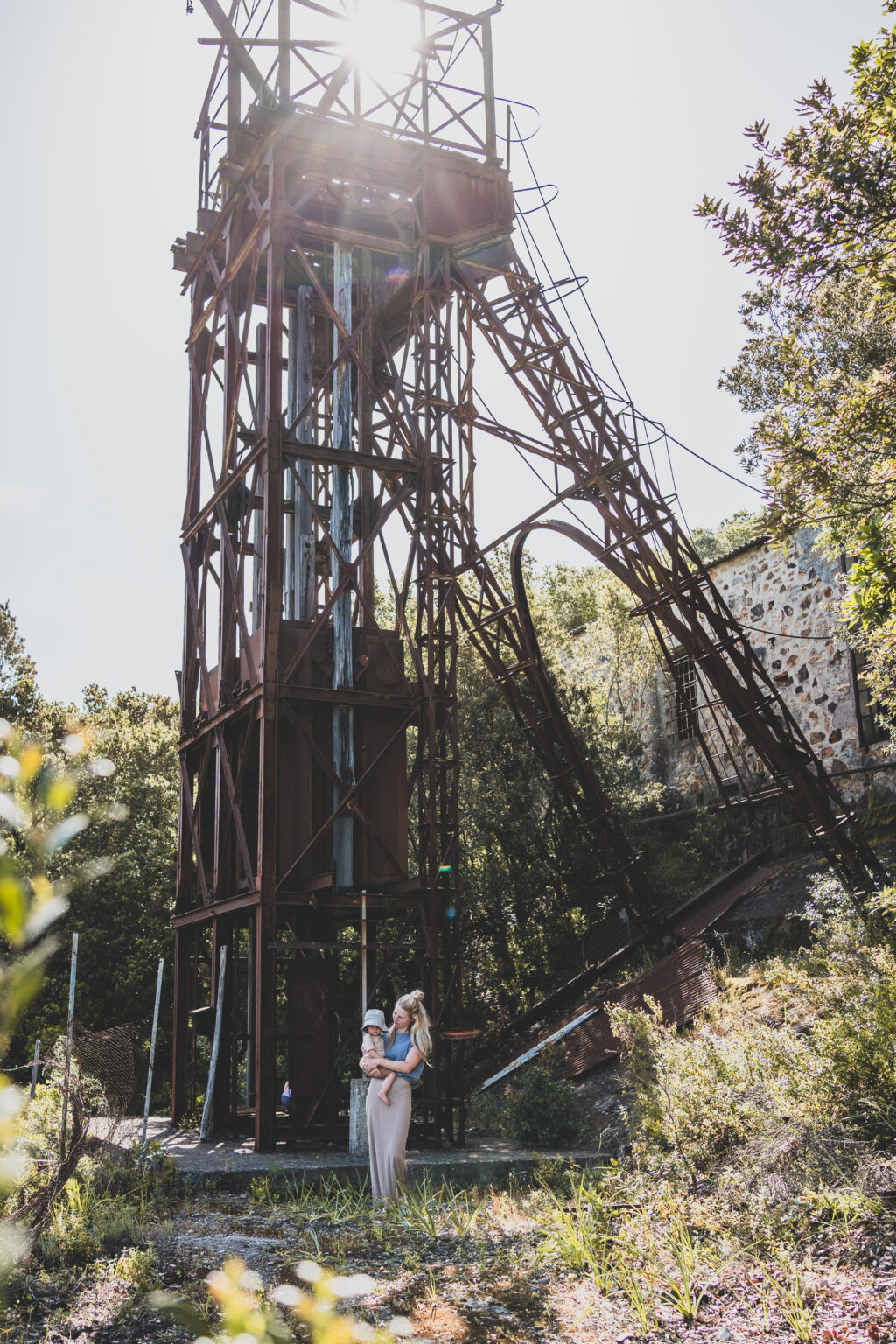

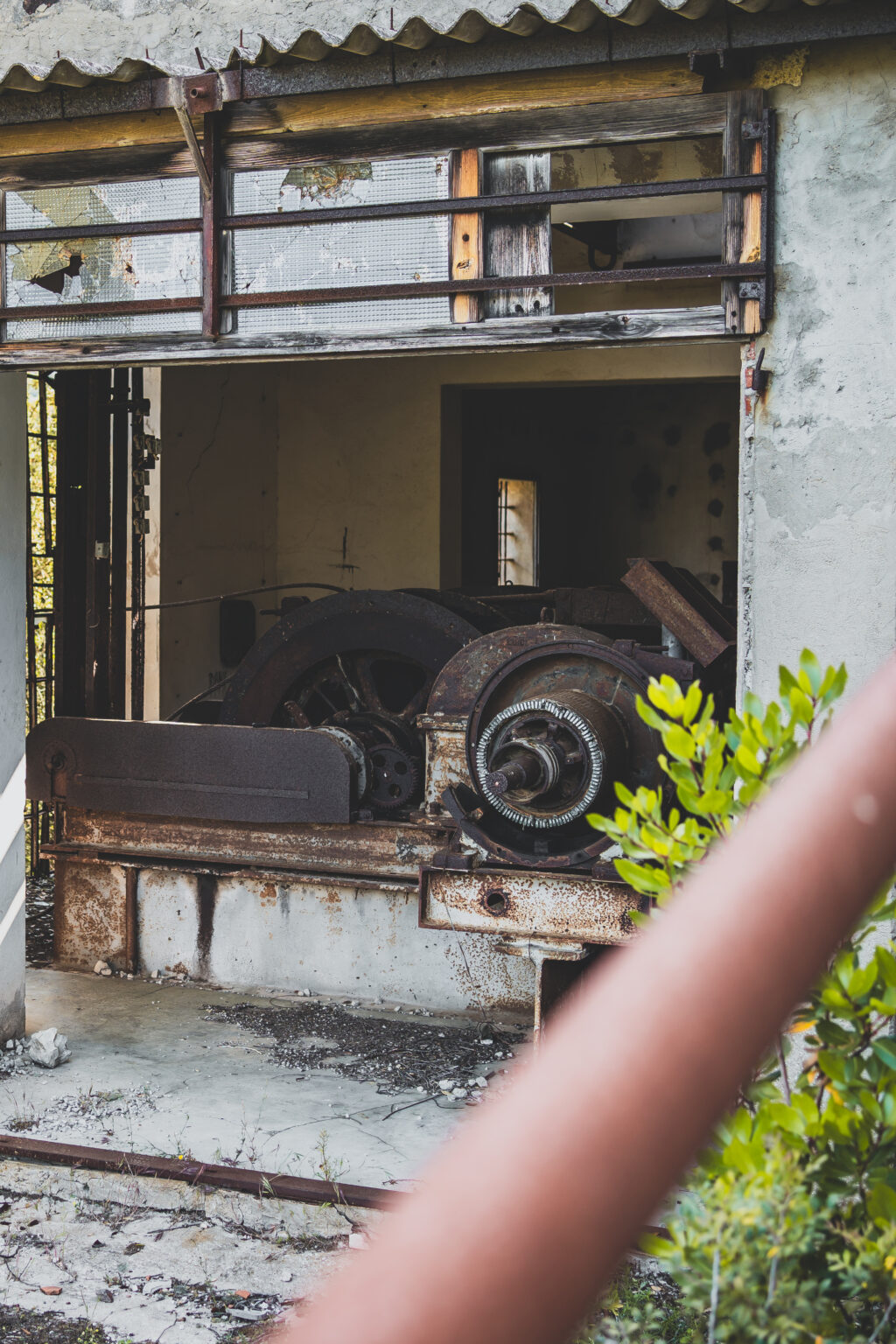
The Red-River Track
We finished the SP4 by dropping onto a wild off-road loop locals call the Red-River Track — a raw, rust-coloured string of riverbeds and old mining washes that leads you down toward the coast. The route snakes through mining country and you cross the stream more than once; for Lovi it was a nonstop game of “who can spot the next puddle?” — only here the puddles were a deep, otherworldly red. The off-road trail is a proper adventure (expect narrow, rocky sections) and it’s exactly the sort of route you’ll find on trail sites and off-road logs.
Because the track runs through the Geominerario area, the colour isn’t just pretty — it’s the landscape wearing its industrial past. The Parco Geominerario protects huge swathes of mining heritage across Sardinia, and these rust-tinted rivers are part of that story.



Our last stop was where that red water meets the ocean. The dunes here are huge and the beach felt abandoned, cinematic even — until you remember why the river is red. In recent years rivers in Sardinia’s mining districts (for example the Irvi that runs to Piscinas) have been observed stained red by heavy-metal laden mining runoff; scientists and local authorities have studied and flagged these events as an environmental concern. We kept well away from the water — only the Rover’s wheels touched the shallows — and treated the place as breathtaking but fragile.
It’s a strange mix: stunning coastal silence and dunes that beg to be explored, alongside a clear reminder that the land here still carries the mark of industry. If you go: don’t swim, avoid contact with the river water, keep kids and dogs away from the stream, and be mindful when washing gear afterward (local guidance exists for contaminated sites).
Quick tip: treat red-tinged rivers as contaminated until you know otherwise — enjoy the view, photograph the drama, but don’t let the kids paddle.




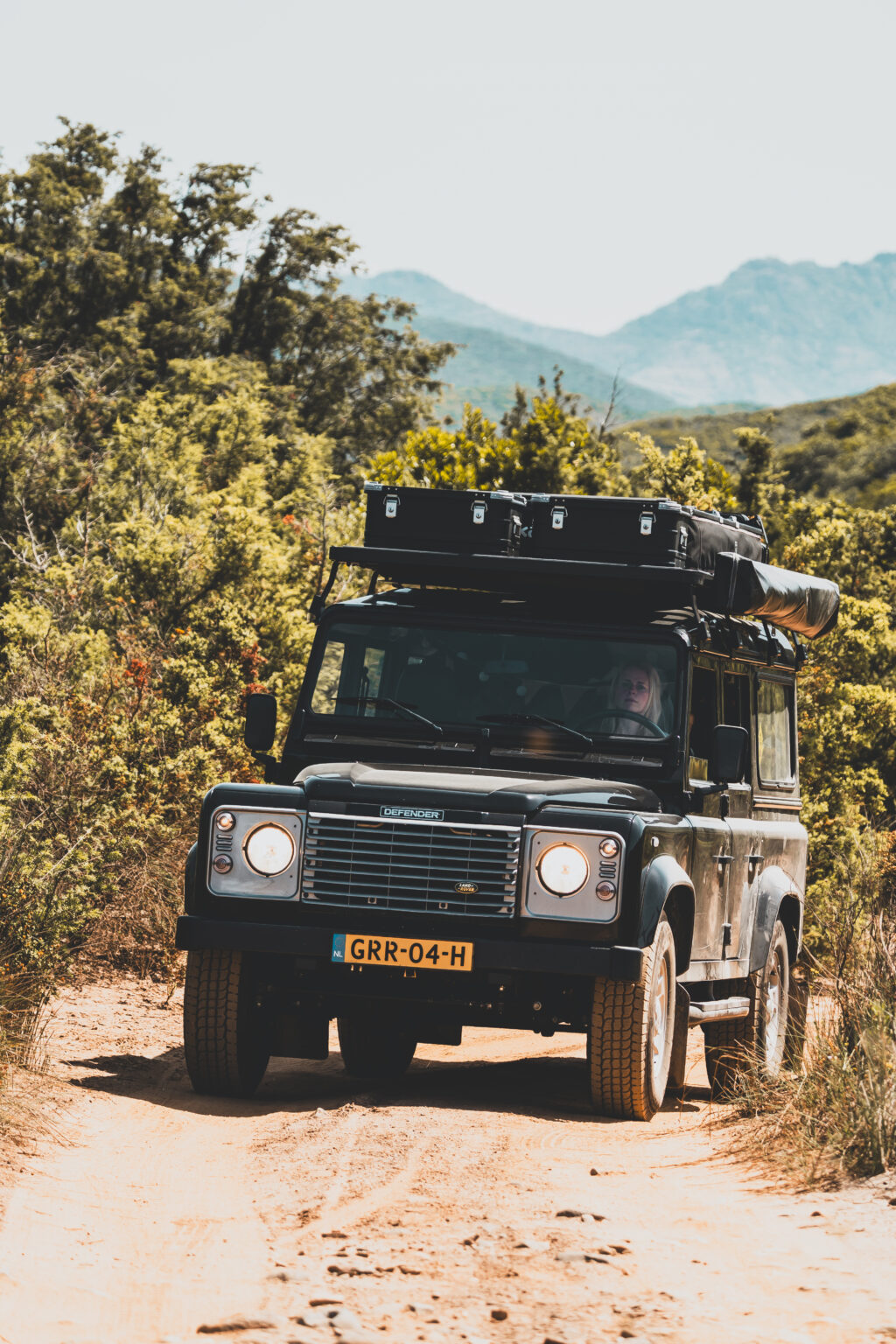


Pearl Below the Cliffs
After days of mines, red streams, and gravel roads it was time to trade rust for salt. We steered the Defender Nord until the land broke into cliffs and the first smell of the sea hit us. The wind carried away the last film of dust, and with it the heaviness of the mining valleys.
Our camp for the night sat perched on a cliff edge, with the ocean rolling wide below and a pearl-white beach tucked right under us — hidden, almost secret, like a reward at the end of the track. Here, the soundtrack was no longer clattering stones and creaking shafts, but waves crashing and wind whistling past the canvas.
It felt like the perfect reset — raw freedom above, untouched beauty below.
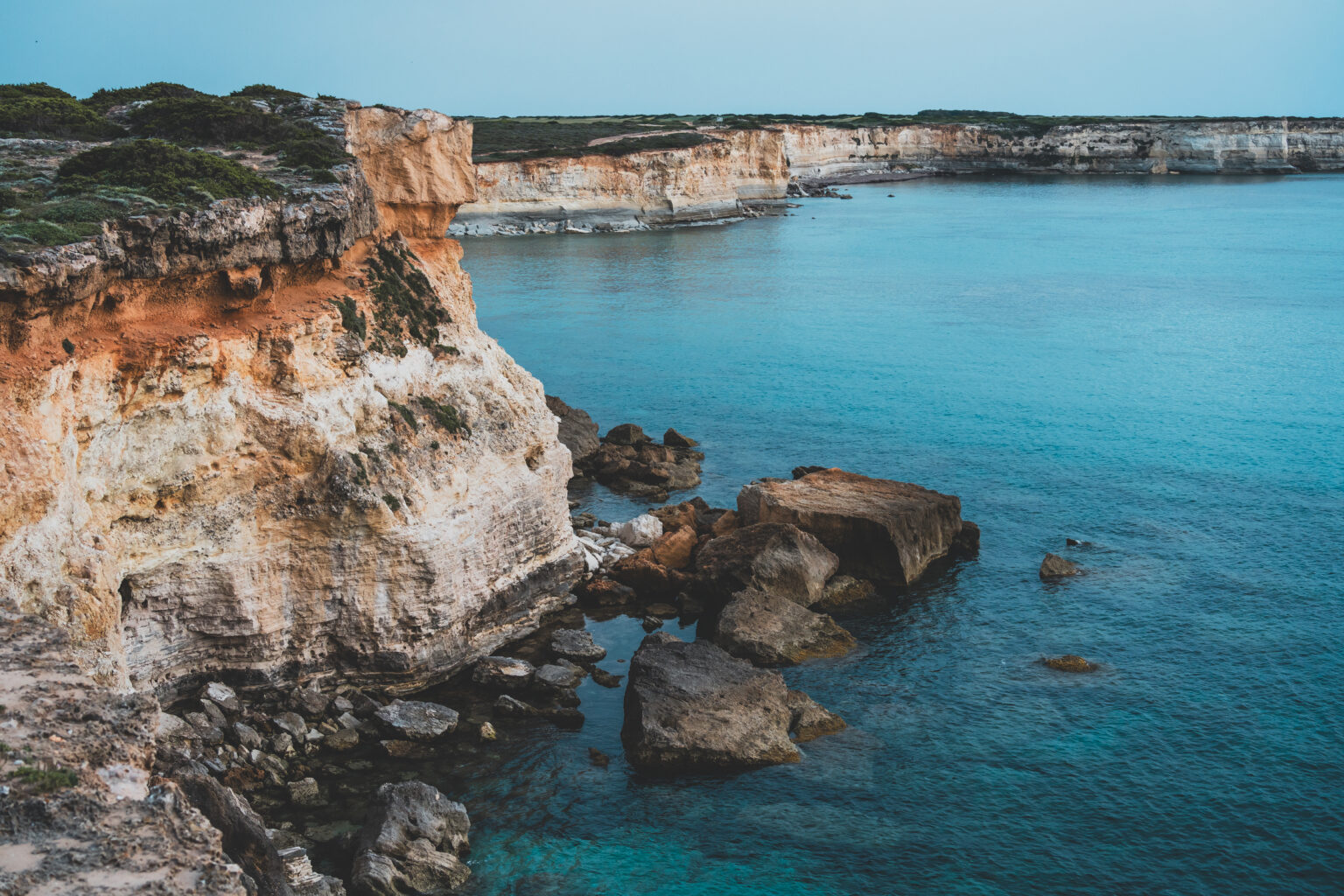


Painted by the River
Bosa welcomed us like a watercolor painting come to life. A riverside town brushed in pastel houses, each one stacked against the hillside in a patchwork of pink, yellow, and blue. We wandered its narrow streets with no plan, just letting the cobblestones guide us through arches, tiny squares, and walls that whispered centuries of stories.
The river Temo cuts through the town, calm and reflective, with fishing boats tied lazily along its edge — a reminder that life here moves at its own rhythm. Higher up, the medieval Malaspina Castle kept watch, but we stayed in the streets, soaking up the everyday beauty: laundry lines swaying, flower pots spilling color, the smell of espresso drifting from tucked-away cafés.
Bosa isn’t about chasing sights; it’s about slowing down and letting the town paint its colors onto you.





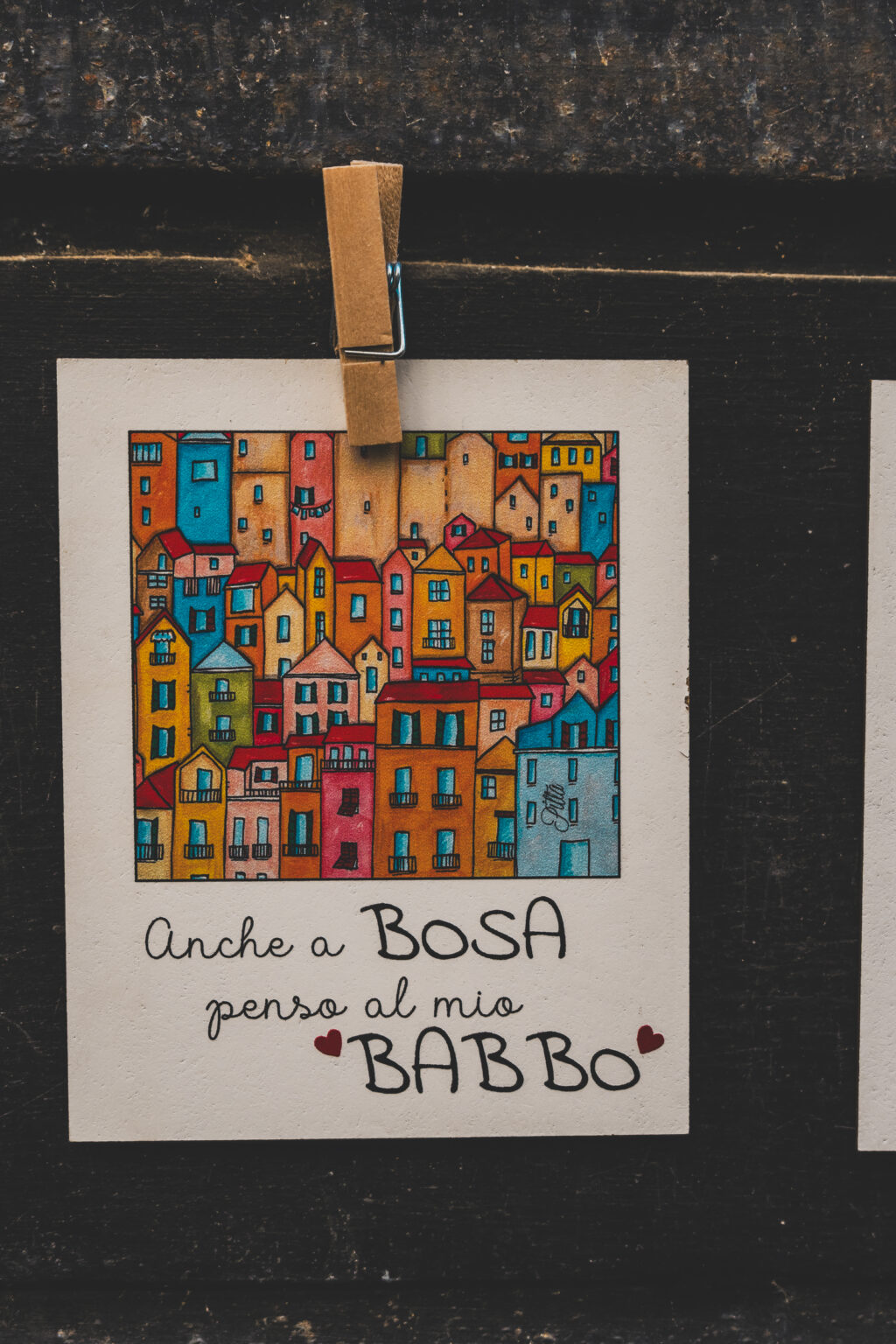

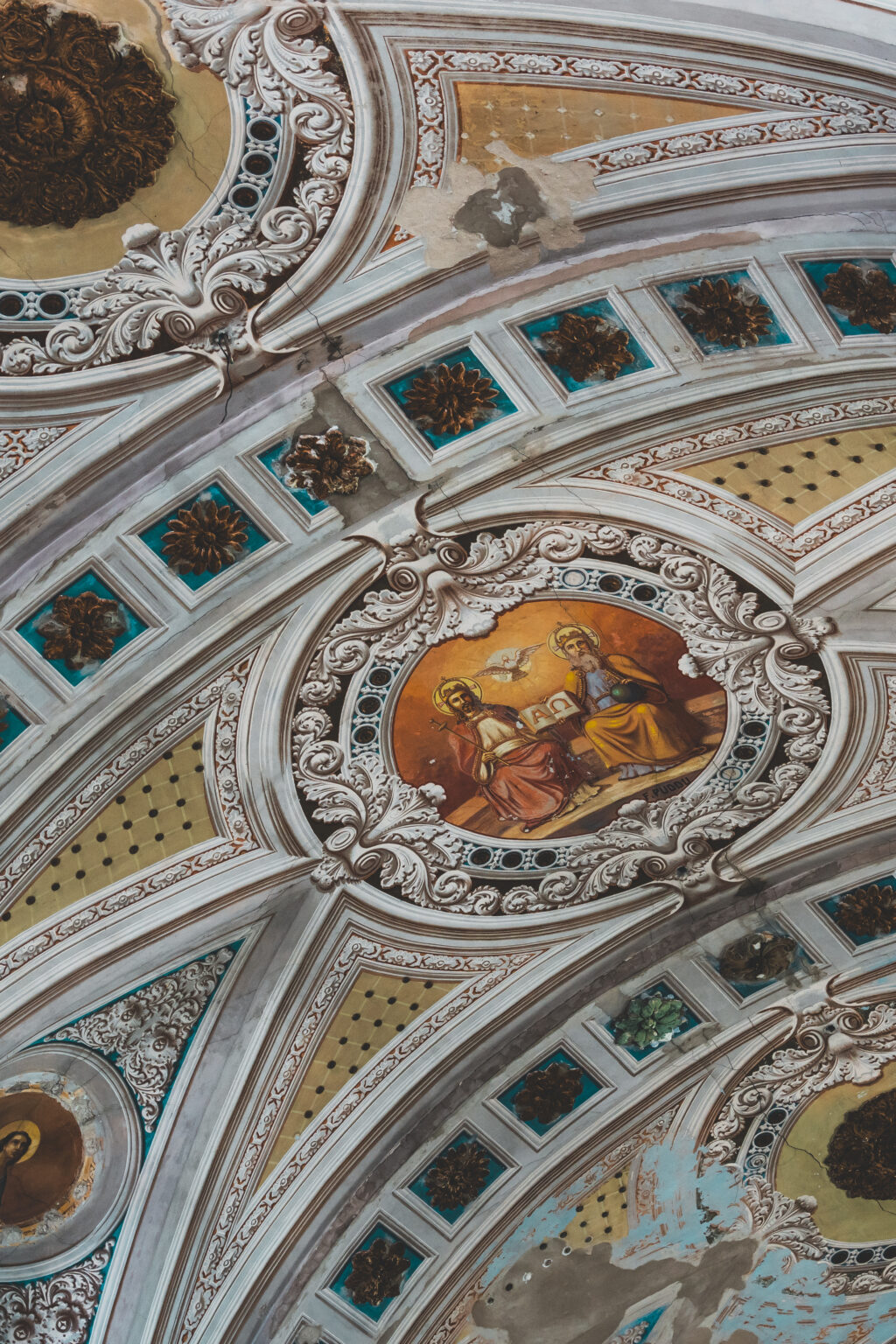

SP49/SP105: The Coastal Roller-Coaster
The SP49 and SP105 are not just roads — they are journeys in themselves. Ribboning along Sardinia’s western coast, they twist and turn between cliffs, coves, and endless blue horizons. Every curve tempts you to pull over, and we did — again and again.
Sometimes for a view that stopped us mid-sentence, sometimes just to breathe in the salt air and let the Defender cool down after another climb. It’s the kind of drive that won’t be rushed, because beauty here is scattered everywhere, waiting in layers of sea, stone, and sky.

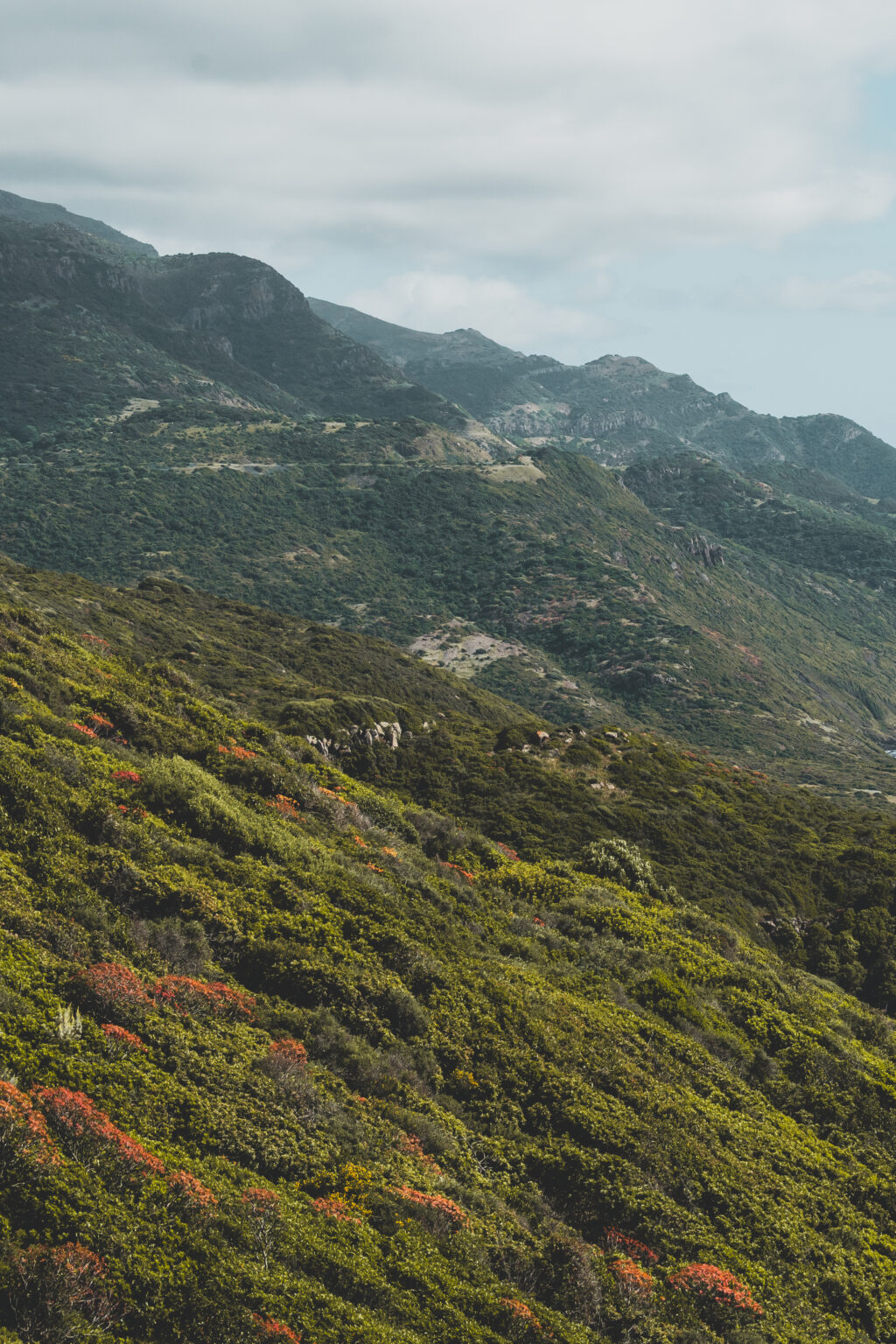
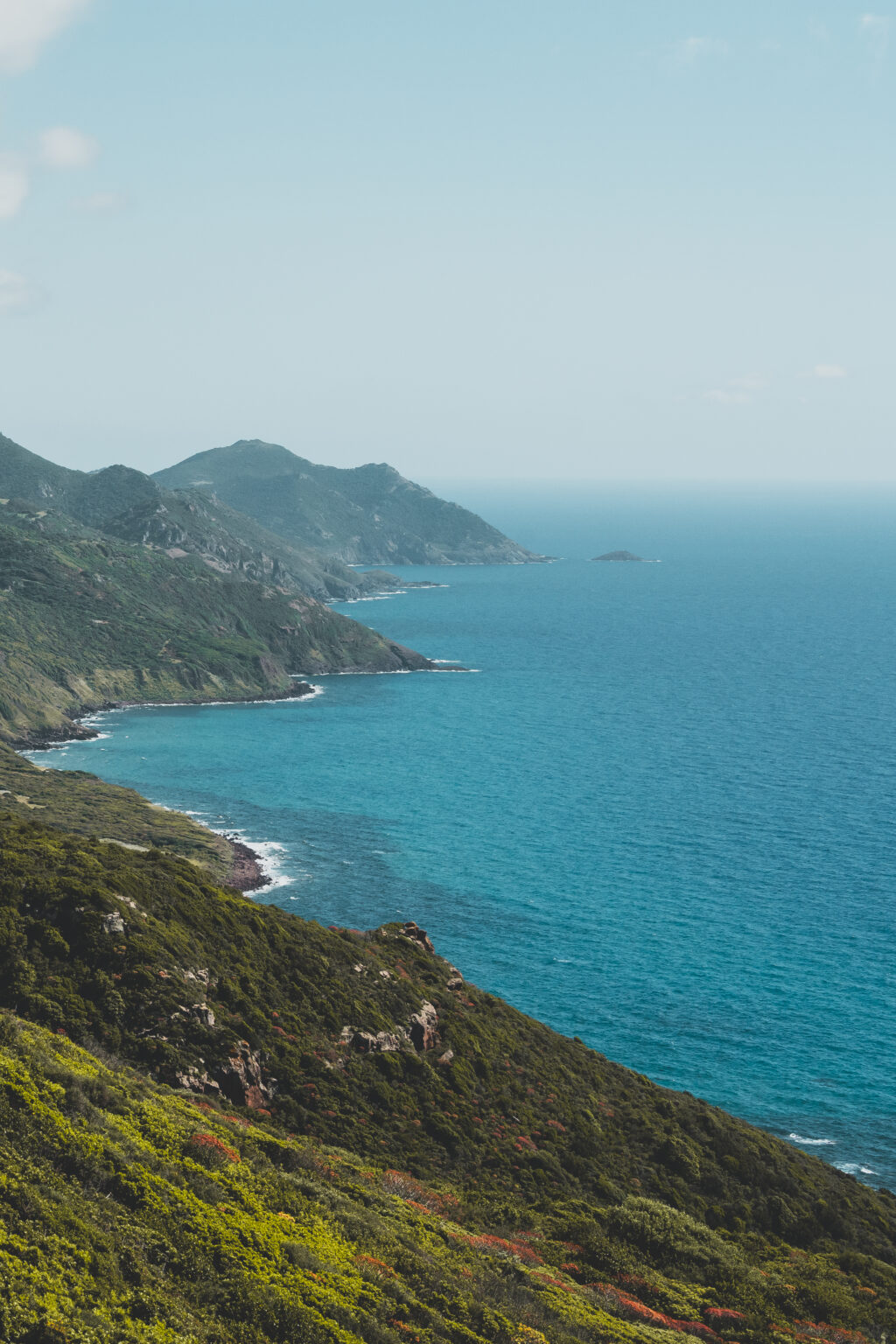
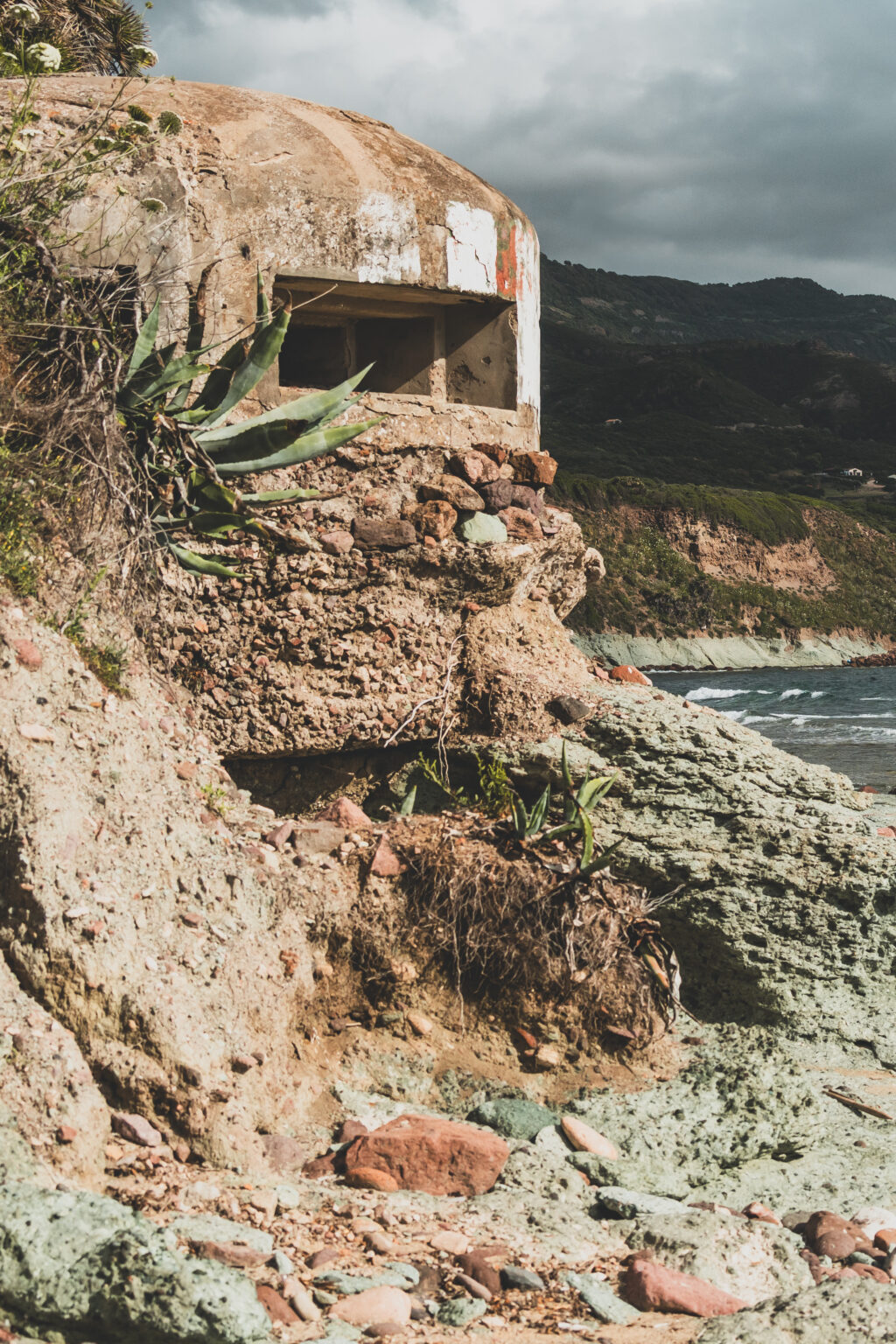


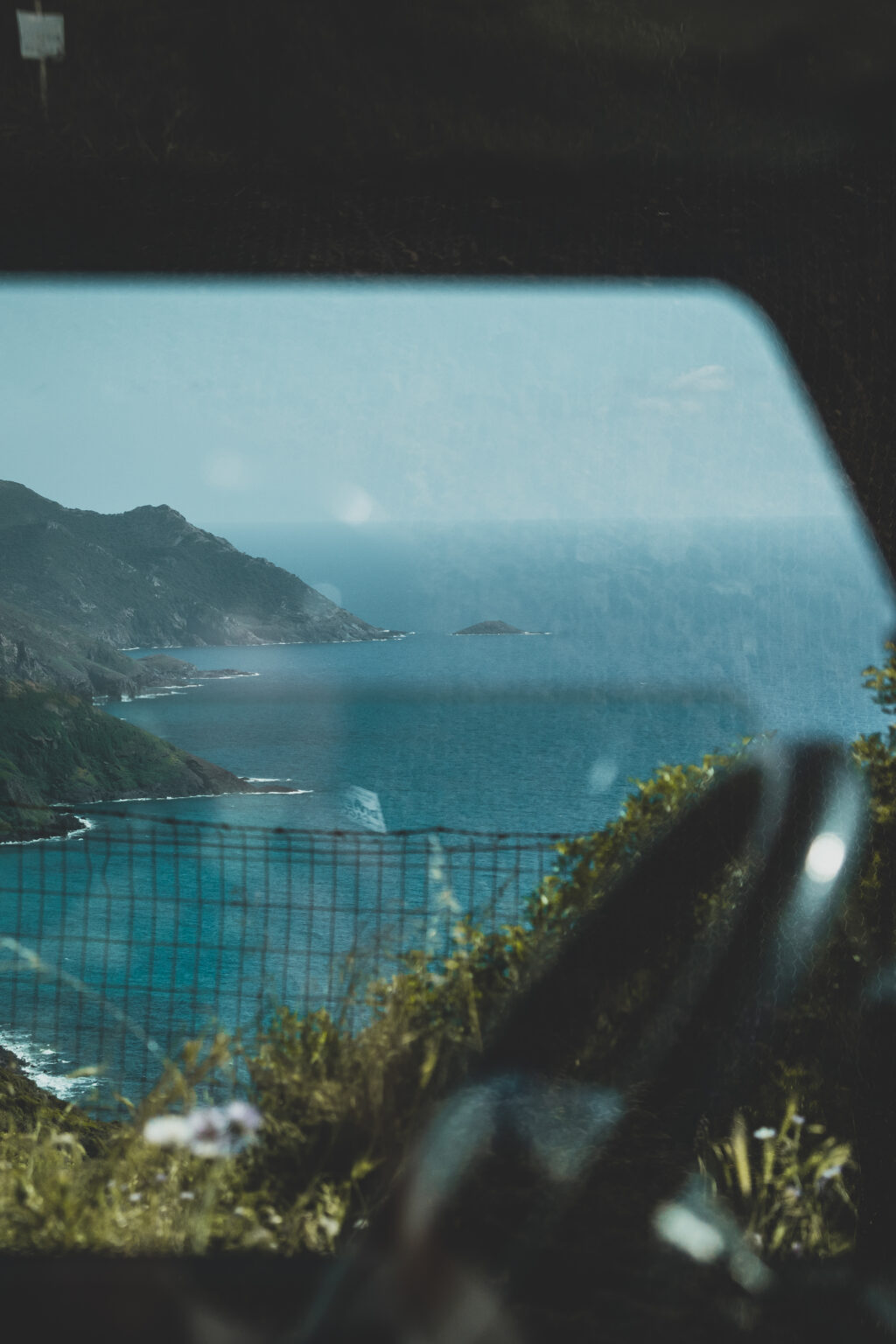

World-class Turquoise
We spent the day gawping at La Pelosa — that impossibly blue, powder-white beach near Stintino that everyone seems to have on their bucket list. The water really does look Caribbean, the shallows stretch out forever, and the whole place can make you want to stay for days.
Because it’s so fragile, La Pelosa is strictly managed: entry is limited to 1,500 people a day between mid-May and mid-October, you need to reserve a spot (book via the official site/app), and there’s a small entry fee (about €3.50 per person; children under 12 are excluded). The municipality also enforces rules to protect the sand and dunes — think mandatory beach mats under towels and children can’t build sand castles. If you don’t follow the rules, you can be turned away or fined.
We wanted long, relaxed hours on the shore without the booking stress, so we parked a few metres away at Spiaggia della Pelosetta instead. Pelosetta is friendlier for low-key days: no strict reservation system, a patch of grass to stretch out on, easier parking (still busy in high season), and a great viewpoint along the coast if you want to walk over to La Pelosa for a peek. It felt like the calmer sibling of the famous beach — same turquoise vibe, a little more breathing room.


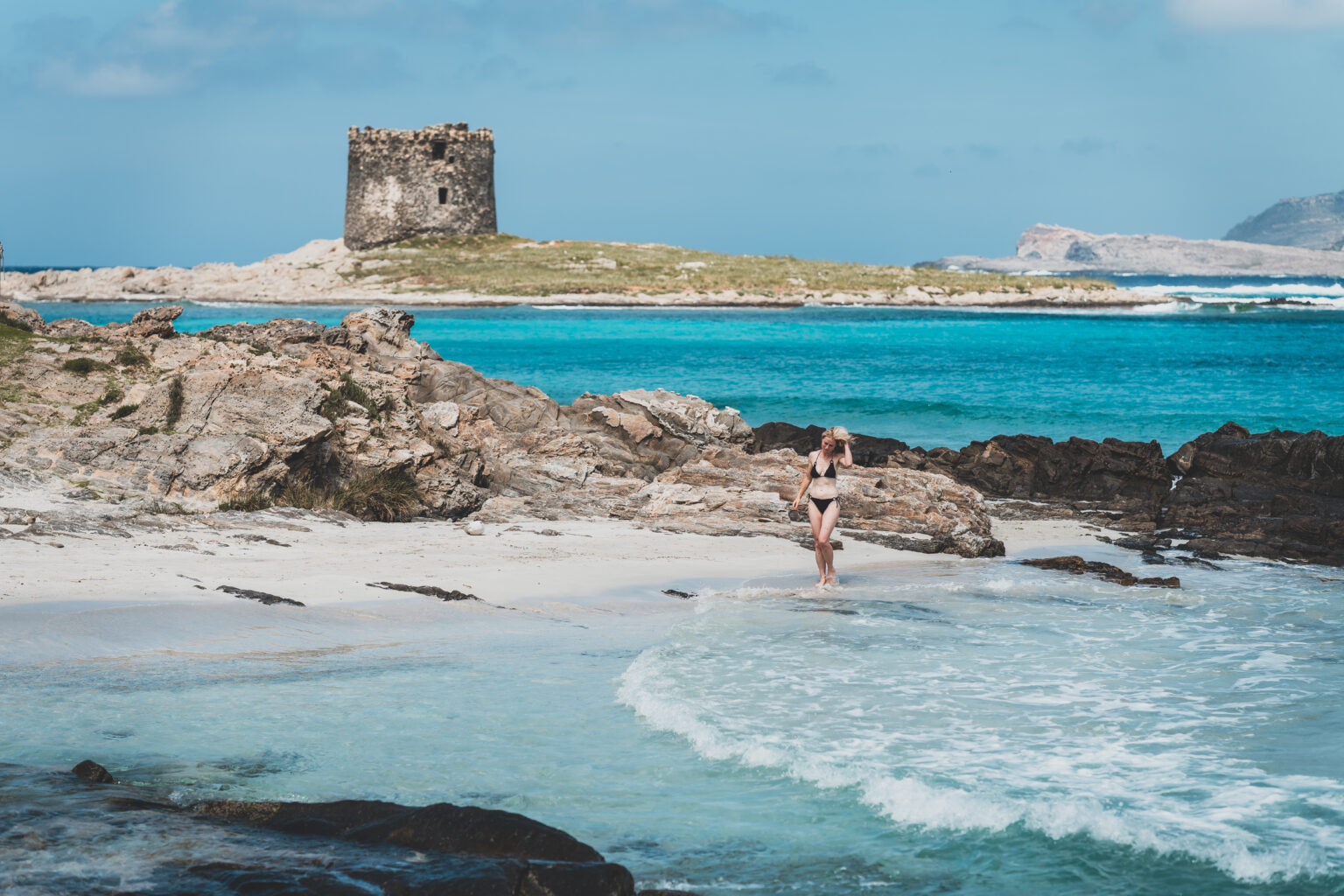





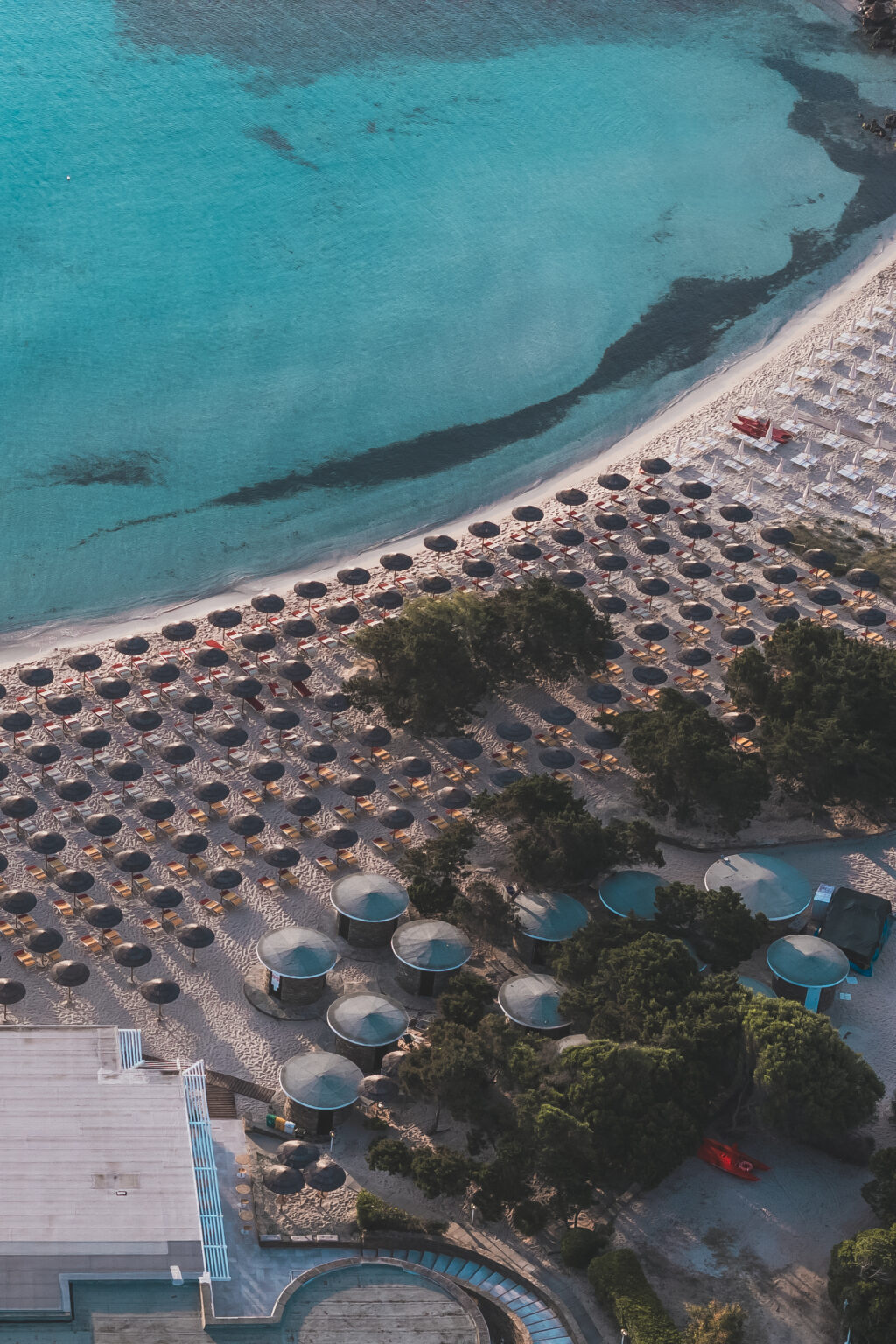


We kept seeing those expensive houses pinned high above the beaches and thought—why pay for the view when you can earn it? So we found our own cliffside throne: a flat, lunar-looking slab of rock that felt like another planet. Our Defender sat right on the edge, tiny against the raw sweep of sea and stone—by night everything turned hard-grey and quiet, like the world had been reduced to shape and shadow.
It’s the kind of spot that goes straight into our “best ever” list: cinema-quiet, dramatic light at dusk, and just a short walk down to the bucket-list beaches when you want sand and waves. Quick note: it’s wild and exposed—perfect for sunsets and photos, but keep little ones close on the cliff edges.






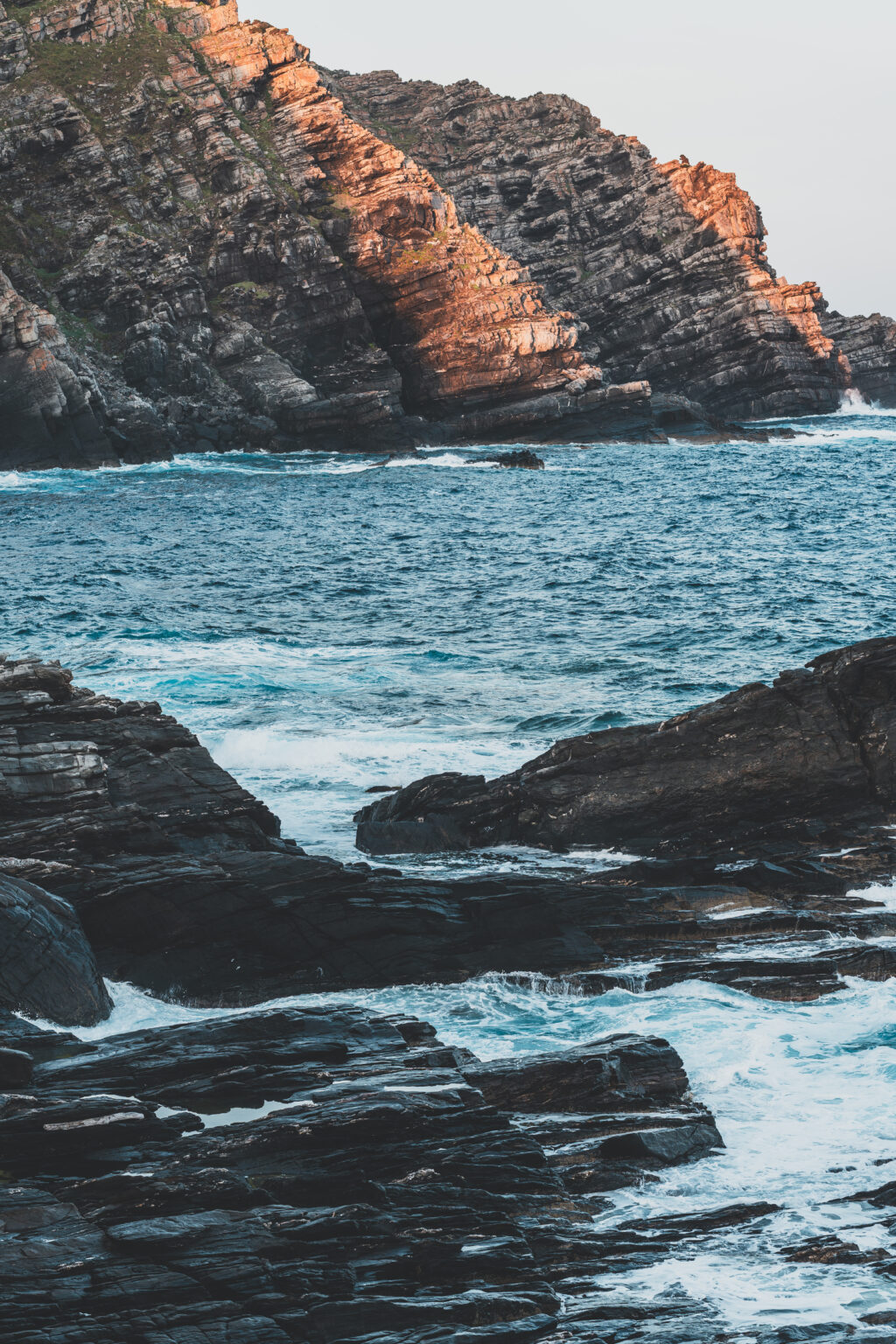





Our favorite (wild camp) spots
Camping in Corsica offers a unique way to experience its diverse landscapes, but finding the perfect spots can be a challenge. That’s why we’ve created a map with all our favorite wild camping locations, taking the stress out of planning.
For those exploring on their own, pick quiet, off-road areas and always leave nature as you found it. Corsica is safe, but staying aware is key. There are Apps that can help, but our map gives you hidden gems you won’t find easy. From mountains to beaches, camping in Corsica is a simple, unforgettable way to see the island.
*A Note on Wild Camping
While wild camping isn’t always officially allowed, we’ve never had issues at the peaceful, tucked-away spots we share here. These places are quiet, private, and chosen with care and respect for the surroundings.
That said, we always stay low-key—no chairs or tables left out overnight, nothing that looks like a full campsite. If asked, we’re simply resting during a long drive, which often falls into that quiet grey area of “too tired to continue.”
We encourage everyone to follow local guidelines, leave no trace, and always respect nature and nearby communities. A little awareness goes a long way in keeping these hidden gems wild and welcoming.
In this journey
Hi, 👋
This is Itsy Bitsy Paradise

Hi! We’re Liset and Kevin, and a few years ago, our little adventurers, Lovi and Quinn, joined the journey. Travel is our greatest passion, and sharing it with our kids has made it even more magical. Together, we explore and create our own “Itsy Bitsy Paradise”—finding those hidden spots of beauty, adventure, and calm wherever we go.
“Itsy Bitsy Paradise”
Sardinia Spots

Handpicked hidden gems we’ve explored, these off-the-beaten-path spots are the result of our own effort and trial—so you can save time, avoid missteps, and be sure every paradise delivers beauty and adventure.
Get all Sardinia locations in an offline PDF. Contact us for the file and payment details.
Price: € 25,00
